

20+ Austria Travel Tips for First Timers & Must Knows Before You Go
Last Updated: July 6, 2023
*FYI - this post may contain affiliate links, which means we earn a commission at no extra cost to you if you purchase from them. Also, as an Amazon Associate I earn from qualifying purchases. Check out our Privacy Policy and Disclosure. for more info.
Despite its relatively small size, Austria is a country packed to the brim with sights – from majestic mountains and opulent palaces to elegant cities and more stunning cakes than you could ever eat in one lifetime.
… it’s also full of potential culture shocks and silly travel mistakes.
I used to live just across the border in Munich, so over the years I’ve gotten to know Austria fairly well… the hard way! Namely by bumbling around, committing the faux pas and embarrassing myself in the name of research.
But luckily, you’re here just in time to prepare for Austria the easy way – by reading my full list of Austria travel tips, collected over years of first hand experience (and many a starry-eyed day trip from Munich to Salzburg ).
So, from avoiding saucy schnitzels to preparing for naked saunas, here are a few weirdly specific must-knows before you visit Austria. I hope you find it helpful!
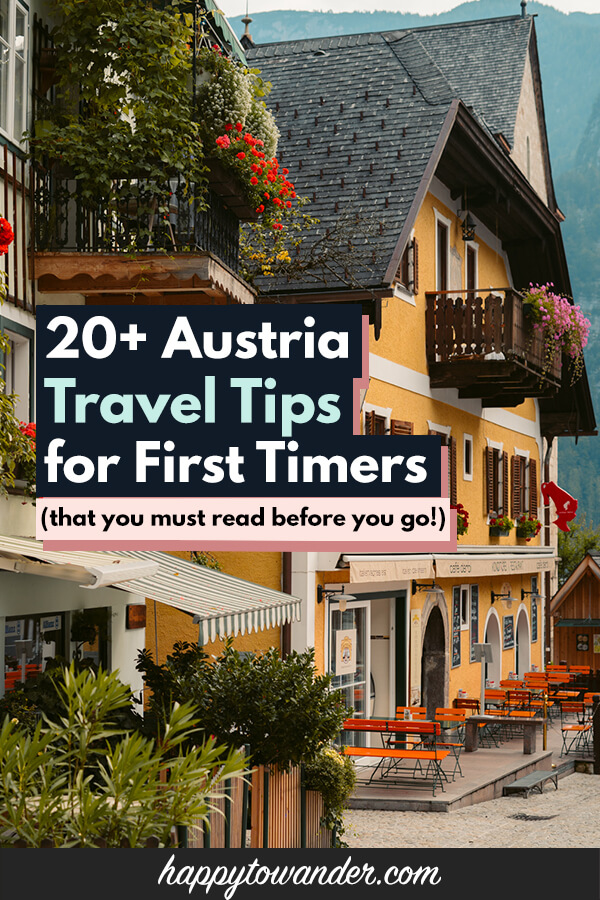
Save this list of Austria Travel Tips for later!
You’ll be very glad you did.
1. Remember: Austria ≠ Australia
We’ll start with a silly Austria tip, and one that I (frankly) cannot believe needs saying.
But from US presidents to famous news outlets , it’s a gaffe that pops up time and time again, so, just to make sure we’re all on the same page… Austria is a country in Central Europe, and completely different to Australia, the Southern Hemisphere country famed for its kangaroos and koalas.
Walk around Austria for even a few minutes and you’ll come across silly souvenirs mocking this confusion, and probably a tour guide or two telling a joke about it.
So, again, before you start planning that Austria trip, make sure it’s mountains, schnitzel and Sound of Music you’re looking for, not the Outback, Didgeridoos, and giant spiders that hide in your shoes.
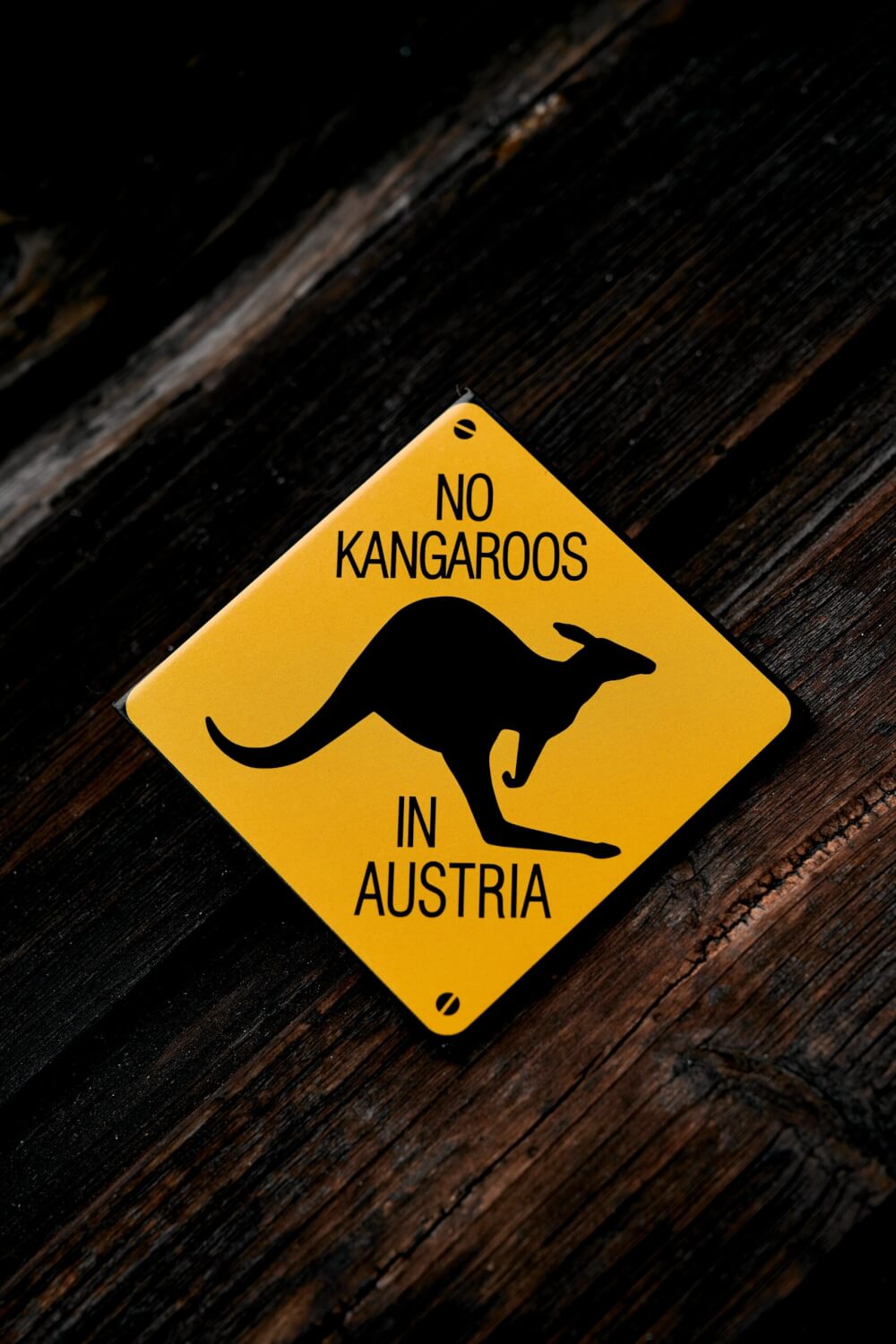
2. Never mistake Austrians for Germans
Just as Austria and Australia are (shockingly) not the same country, the same goes for Austria and its neighbour, Germany.
A very important Austrian etiquette tip I must shout from the rooftops is simply this: Austrians don’t take kindly to being mistaken for German.
So, remember to never say that Germany and Austria are the same, or make jokes about Germans and Austrians being the same. At best, they’ll laugh it off, at worst, you’ll cause legitimate offense.
Sure the two countries share a language and there are (admittedly) similarities, but Austrians are really proud of their country and don’t love it when people just dismiss them as the exact same as Germany, so keep that in mind.
As a Canadian who’s frequently mistaken for American, I totally get it.

3. Be sure to add Austria’s nature spots to your itinerary
Now in terms of where to go in Austria, I find that overseas visitors often gravitate towards the country’s most famous cities, Vienna and Salzburg.
But there is SO much more to explore beyond that, especially Austria’s natural marvels, which many overseas visitors miss. In fact, it’s often Austria that Europeans choose for their nature-forward holidays (whether it be for skiing or hiking), so don’t miss out!
Filled with soaring mountains, glimmering lakes, and charming swathes of countryside, Austria is (in many ways) a more budget-friendly version of Switzerland, so I highly recommend extending your time and expanding your itinerary to include at least a day trip or two to take in some of these incredible natural landscapes.
There’s the valleys and waterfalls of Salzburgerland, the alpine majesty of Tyrol’s nature parks, the beautiful lakes of Carinthia, along with more under-the-radar picks like the Bregenzerwald in Vorarlberg (which offers amazing mountains and cute alpine towns).
All that to say – there’s plenty of amazing nature to be enjoyed in Austria, so don’t just limit yourself to cities.
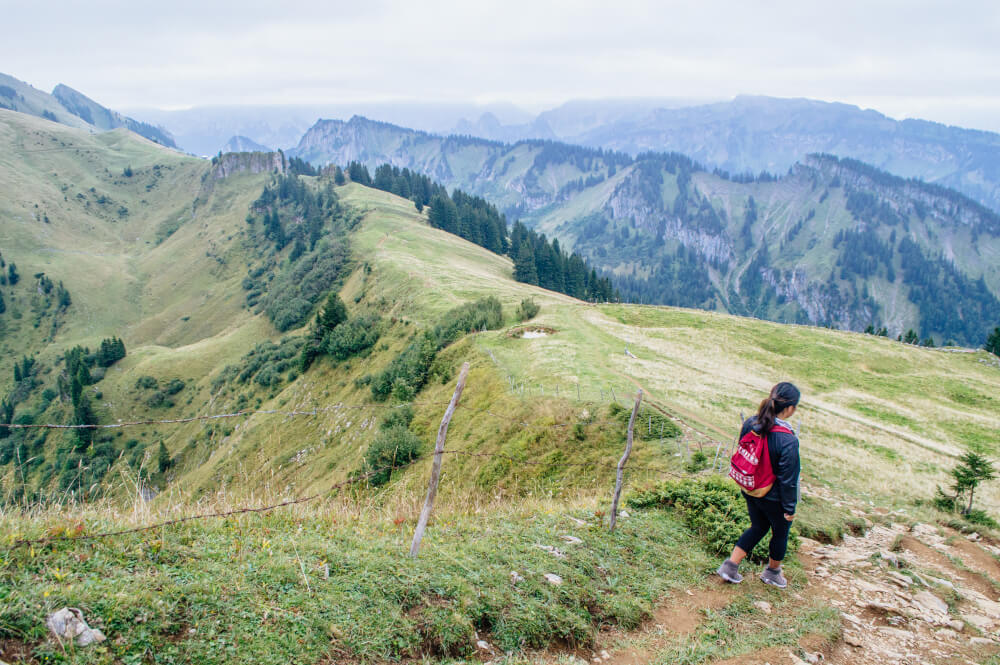
4. Seek out new destinations by reading Austrian websites
On that note, if you are open to visiting more offbeat places during your Austria trip, one thing I can highly recommend is doing your research on local Austrian websites.
In my opinion, there’s quite a big difference between the Austrian destinations that international tourists visit and the destinations that domestic tourists visit.
Both are great, but if you want to explore beyond the most famous sights, then reading Austrian blogs to see where locals vacation is a good starting point.
NOTE: This is also a great way to discover more offbeat things to do in individual cities as well. For instance, if I wanted to find more alternative things to do in Graz , I might browse local blogs/event websites to find pop-up events or unique festivals.
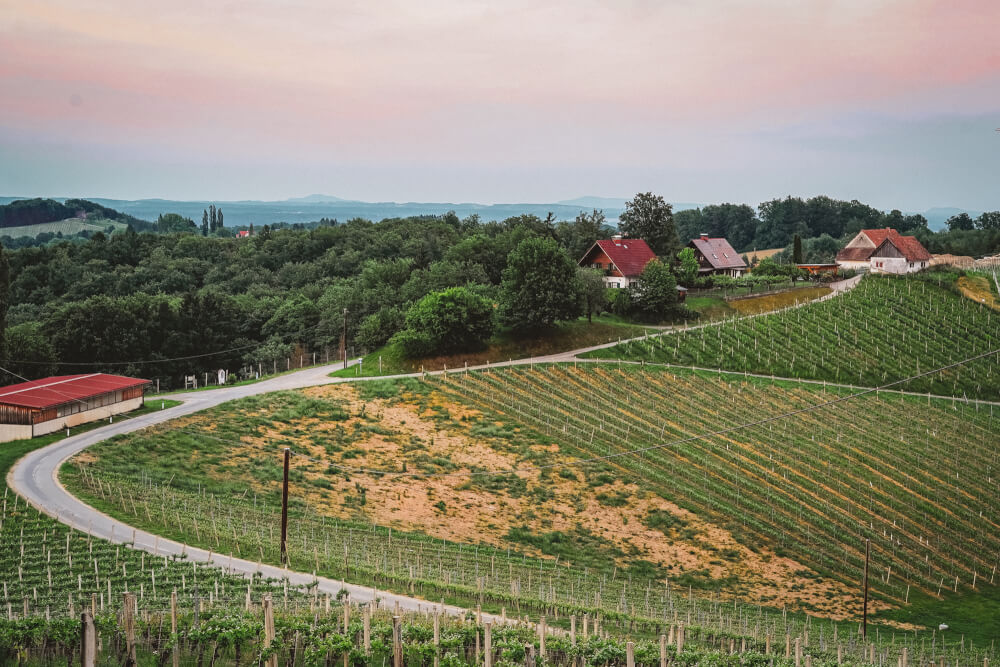
5. Don’t miss Austria’s Christmas markets
I know that neighbouring Germany is probably the best known country in the world for Christmas markets, but Austria has a fair few incredible gems too, often with far thinner international crowds.
So, if you’re looking for a magical winter destination in Europe, consider pencilling in some Austrian Christmas Markets between mid November to Christmas.
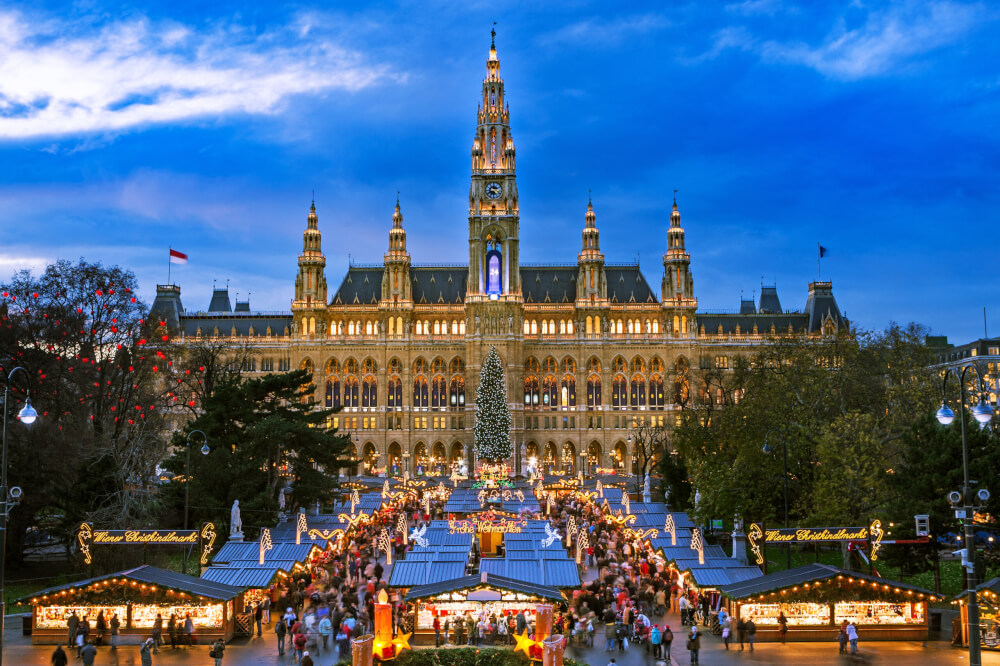
6. Learn the basics in German
In terms of which language to panic-learn before your trip, German is the official language of Austria, so that’s what everyone will speak.
In larger cities, it won’t be tough to get by with English, but it may be more difficult in the countryside.
In any case, it’s good to at least know the basics, like…
- Hello – Hallo (Ha-low!) or Grüß Gott (Grewss-got!)
- Thank you – Danke (Dahn-keh)
NOTE: The German spoken in Austria can sound very different depending on where you are because there’s a lot of different regional dialects, so don’t be surprised if you have trouble understanding locals (or vice versa). It’s all part of the fun!

7. Only rent a car if you plan to do nature trips
If your trip mainly consists of city to city travel, then I’d advise relying on public transport to save yourself the headache of driving.
Public transport is amazing in Austria, so you’ll have no trouble getting around, both from place to place and also within cities themselves.
But, if you plan to do a lot of more offbeat nature spots to see mountains, lakes and national parks, then having a car would be ideal. Be sure to check out my considerations before renting a car in Europe if that’s the case.
Of course, a more convenient alternative would be to book day tours to nature spots from the city you’re staying in – that way you can simply drool in the back seat while you see all the landscapes, without the stress of navigating.
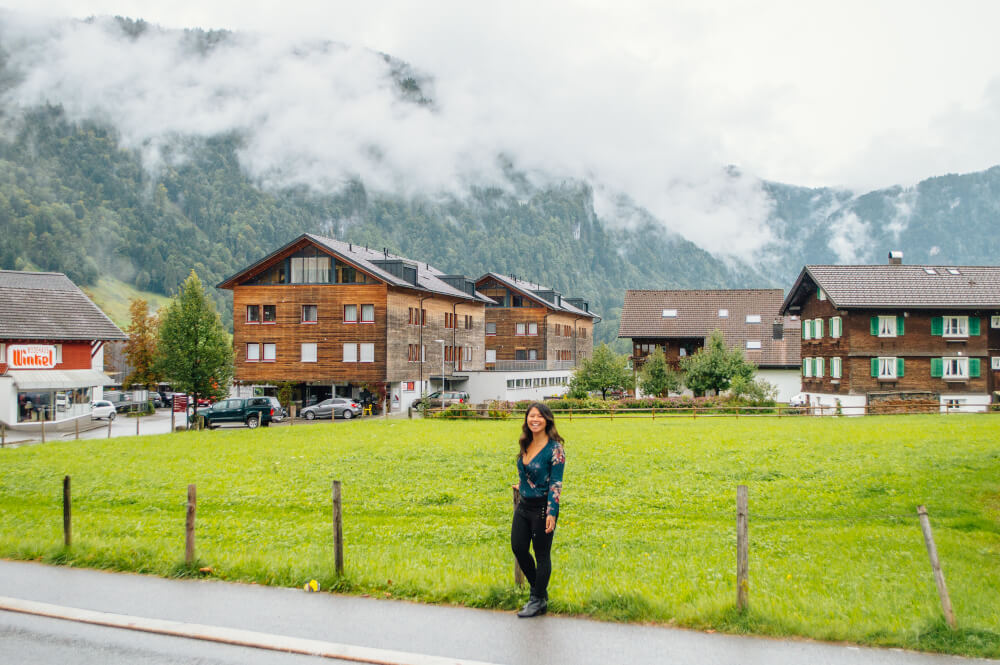
8. Get a vignette if you’re driving
If you do plan to rent a car however, one important Austria must-know is you’ll need a vignette.
This is a sticker that you must buy for your car in order to use the country’s motorways. Failure to procure one means an aggressive fine in the mail weeks after the fact. (Ask me how I know that).
IMPORTANT: Make sure this sticker is purchased and adhered to the car before you enter the country because there are automatic scanners that look for them at the border… so you may get fined even if you buy one upon entry. (Again, ask me how I know that)

9. Understand that public transport is on an honour system
Unlike other countries which have fare gates and other measures in place to ensure you pay, public transport in Austria works on a very trusting honour system where you are responsible for buying your own ticket, and only need to show it if you are asked to (via random controls).
So, make sure you always buy the right ticket and validate it properly in case you get checked!
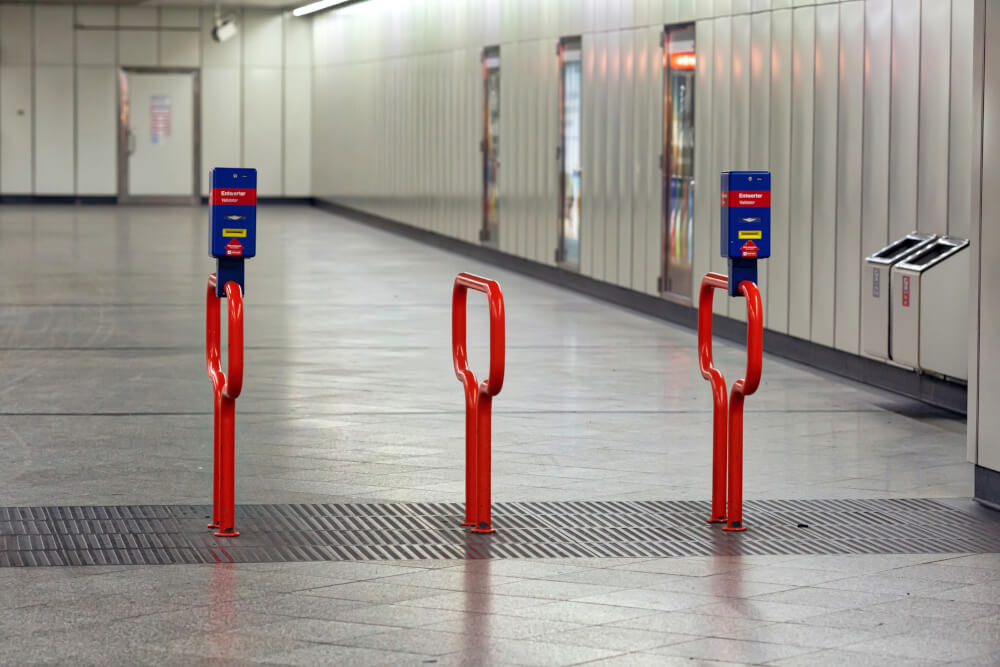
10. Learn the tricks to saving money on Austrian trains
Train travel is one of my personal favourite ways of getting around Austria. If you are new to train travel in Europe, then be sure to read my step by step guide to get acquainted, and scope out my favourite scenic train rides while you’re at it.
After you’ve decided that you do want to glide elegantly across the country by rail, then there are a few different ways to save money on tickets:
- Einfach-Raus-Ticket: A group ticket that gives you unlimited travel for a day on all local/regional trains across Austria. The more people you have, the cheaper it works out to be per person. Great for group day trips!
- Regional Tickets/Offers: Special passes that give you unlimited travel for a day on local/regional trains for a particular region/area. Great for day trips in a smaller area!
- Eurail: A rail pass that covers train travel across most European countries. Great only in certain instances, i.e. when you are visiting many countries and want flexibility/spontaneity. I explain more in my full Eurail review.
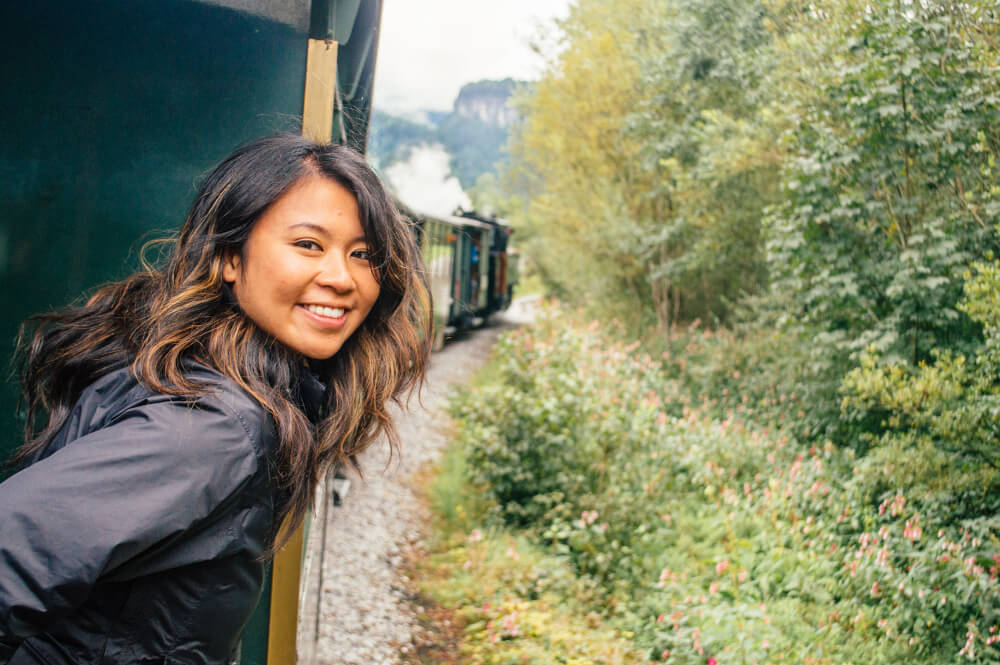
11. Sorry – Austrians do not know the Sound of Music
I hate to be the bearer of bad news.
And trust me – as someone who grew up watching the Sound of Music religiously every Christmas, this fact is definitely not one of my favourite things, but here goes…
Austrians do not really care about the Sound of Music. It’s not a classic film for them, they have no nostalgia tied to it, and (frankly) many of them don’t even like it.
So, when you head to Salzburg for your big Sound of Music pilgrimage, just know that your enthusiasm is probably best shared among your fellow tourists, rather than among locals.
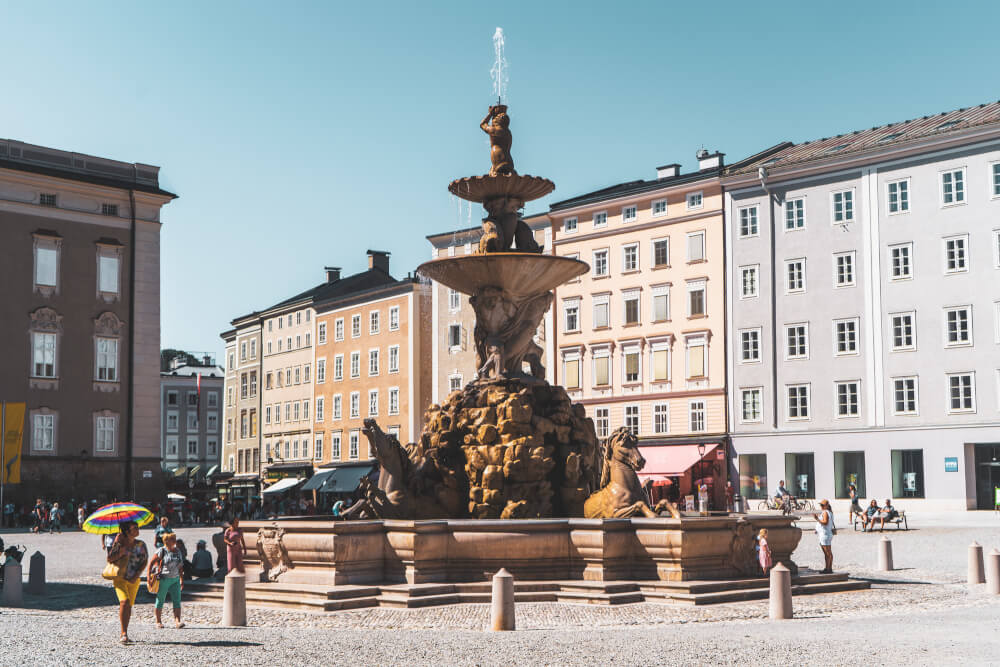
12. Remember “W” is pronounced like V
In terms of language, a good thing to remember is that the letter W in German is pronounced like a V so if you’re saying any words or names, say it with a “Vuh” sound.
In Austria, the most prominent example would be the German name of Vienna which is spelled Wien, but pronounced “Veen”.
You’ll catch this pronunciation trap in the city’s most popular dish too -Wiener Schnitzel. So remember: if you do decide to indulge in this fried slab of goodness during your trip, order it as a “Veen-uh” schnitzel and not “Weeeeee-ner” schnitzel.
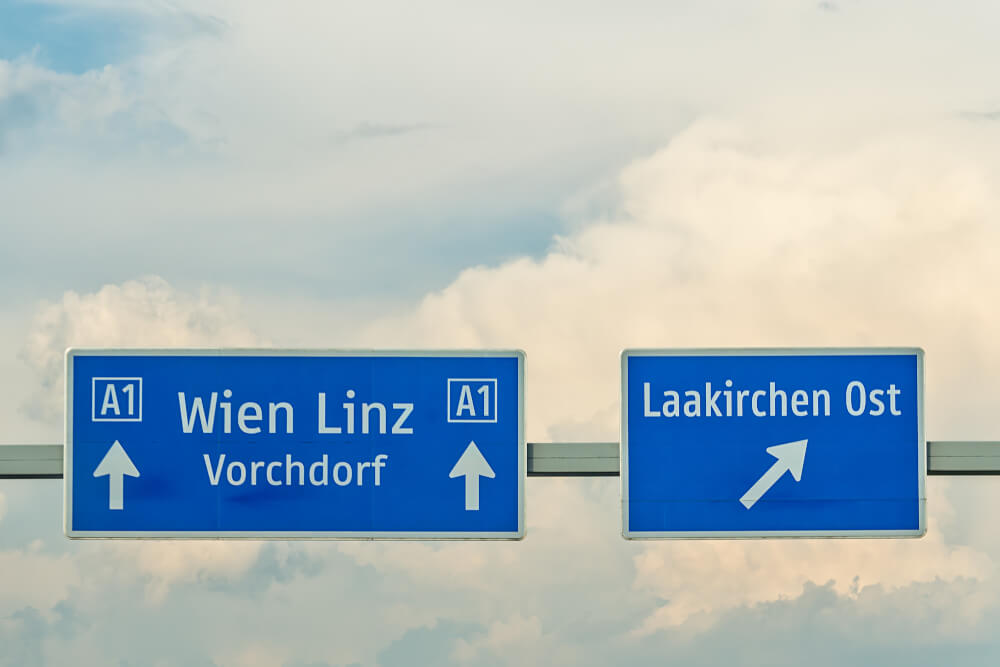
13. Avoid catching locals in photos/videos without their consent
Upon arrival in Austria, your first instinct may be to whip out your phone and capture as many of those beautiful sights as possible, to the chagrin of your 52 Instagram followers.
But just a quick note before you do that – Austrians can be very private people who don’t like having their photograph taken without consent.
So, a very important Austrian etiquette tip is to be mindful of others’ privacy and try not to blatantly take photos that might accidentally catch someone’s face head on.
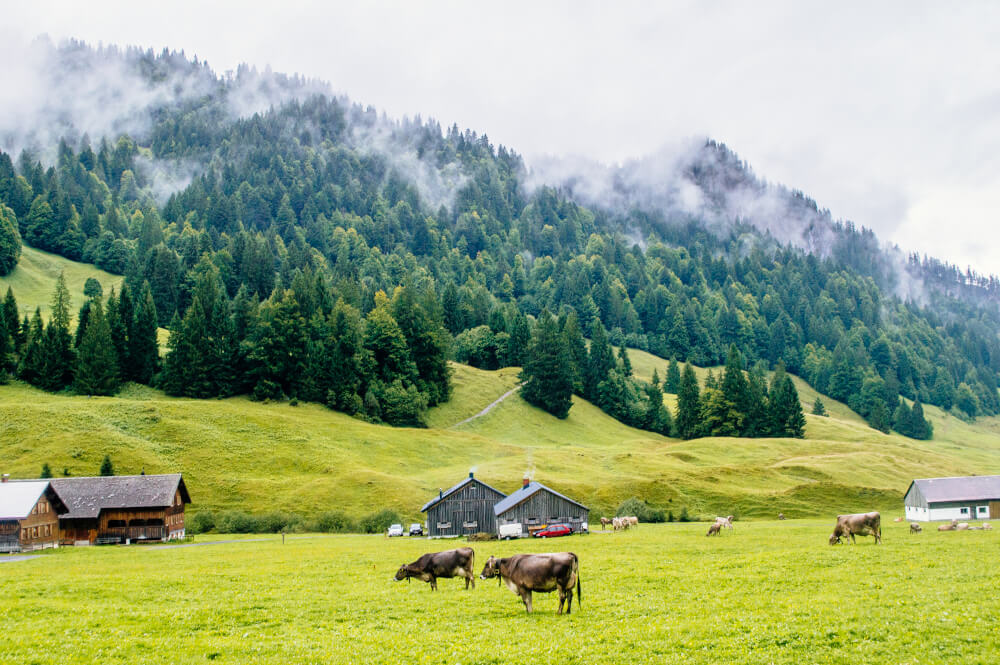
14. Don’t be alarmed if you catch people staring at you
While taking photos of others’ faces is considered very rude, one thing that isn’t is… staring.
To the shock of many first time visitors, Austrians don’t mind staring. So you could very well be sitting on the bus, minding your own business, only to feel the stony stare of a stranger who is (rather shamelessly) staring at you while you just try to peacefully exist.
Can it be jarring? Of course! But don’t worry – it’s just a cultural difference where they don’t consider staring to be a rude practice. Think of it as just them perceiving you (or if it helps your confidence, pretend it’s because you’re wowing them with your stunning face).
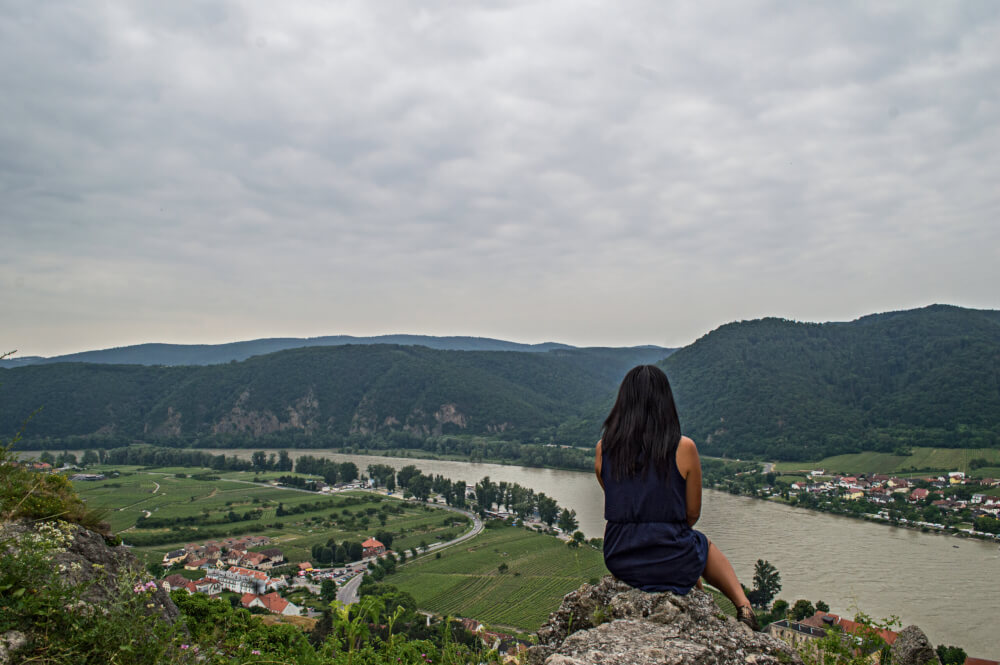
15. Learn how to tip in Austria
In terms of tips, tipping culture in Austria is definitely not as aggressive as in North America.
For good service you’ll tend to tip 5-10%, usually rounding up to a number that makes sense so if your meal was 45 euro, you might hand them 50.
What’s worth noting though is that tipping works a little differently here.
For instance, you wouldn’t just leave money on the table after the meal. Instead, you have to tell them how much you intend to pay in total (including tip) as you hand over your cash or card.
So let’s imagine that (including tip), you want to pay 40 euro. In this instance, you would say “40” as you hand over your cash or your card, and then they’ll give you the appropriate change.
If you want them to just keep the change, then you hand your cash over and say “Stimmt So!”, and they’ll know to just keep the whole thing.
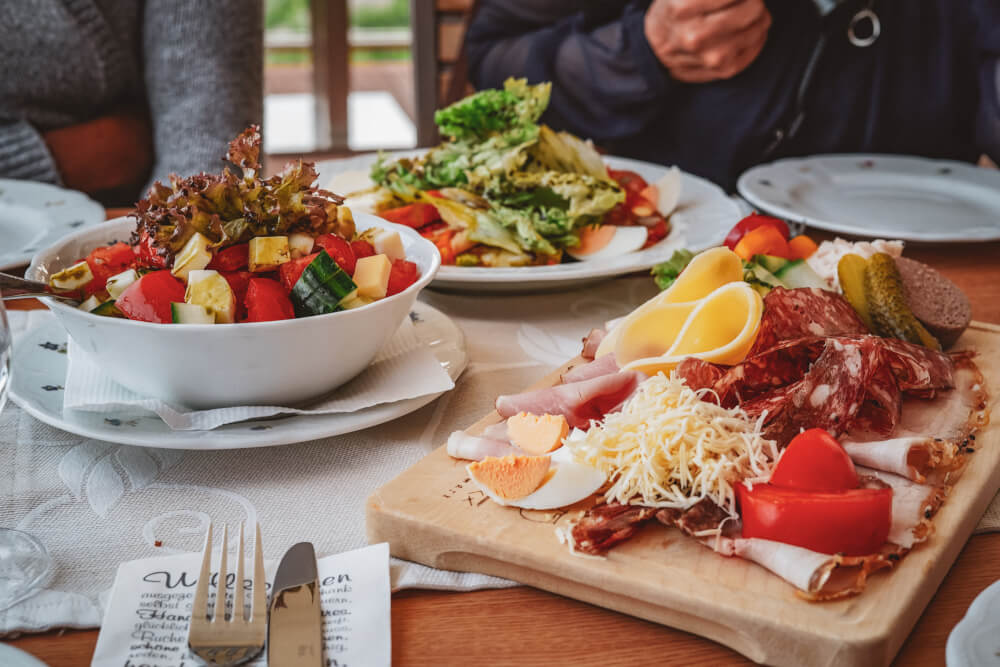
16. Be prepared for a different style of customer service
Now in terms of culture, it is often said that Austrians can seem cold and direct. I personally haven’t had this experience as much, but maybe I’ve just been lucky. (And tend to surround myself with the drunk ones ).
Anyways, what I will concede though is that Austrian customer service is very different from typical North American customer service.
In contrast to typical North American service which involves being bright, cheery, friendly and hands on, Austrian customer service is usually a lot less animated, and to someone who’s not used to it, it may even seem like you’re being ignored on purpose.
The way I’ve had this explained to me though is that Austrians just really value their privacy, hence why they take such a hands-off approach.
At a restaurant for example, the server will come, take your order and then leave you alone, hence why you need to flag them down if you want anything, because they consider constant check-ins a rude interruption.
So, don’t take ‘colder’ customer service personally – it’s just another one of those cultural differences.

17. Prepare for nude saunas and public nudity areas
Another fun cultural difference? The Austrian approach to nudity!
Namely, that they’re very into it.
If you go to a sauna in Austria for instance, it’s very much expected that you go naked (for sanitary reasons), and there’s often designated nude (FKK) zones at lakes and swimming areas as well.
Add on the fairly common occurrence of both men and women alike sunbathing topless, and you have a sure recipe for culture shock. So, if you’re from a part of the world where this kinda bare-it-all attitude isn’t common, just remember it’s normal here, so adapt accordingly.

18. Eat as much dessert as humanly possible
An easier thing to adapt to perhaps is the absolutely WONDER that is Austria’s sweet scene.
Truly, Austrians are masters of dessert.
While North Americans will have no doubt heard of strudel or the famous Sacher Torte, there are SO MANY more options than those. My personal favourite is the Esterházytorte which is originally Hungarian but is commonly found in Vienna these days too, or the almighty Kaiserschmarrn, shredded pancakes served with jam or apple sauce.
With hundreds of options and special regional desserts all over, I’d recommend you simply go to a coffee house or bakery and let your senses guide you.
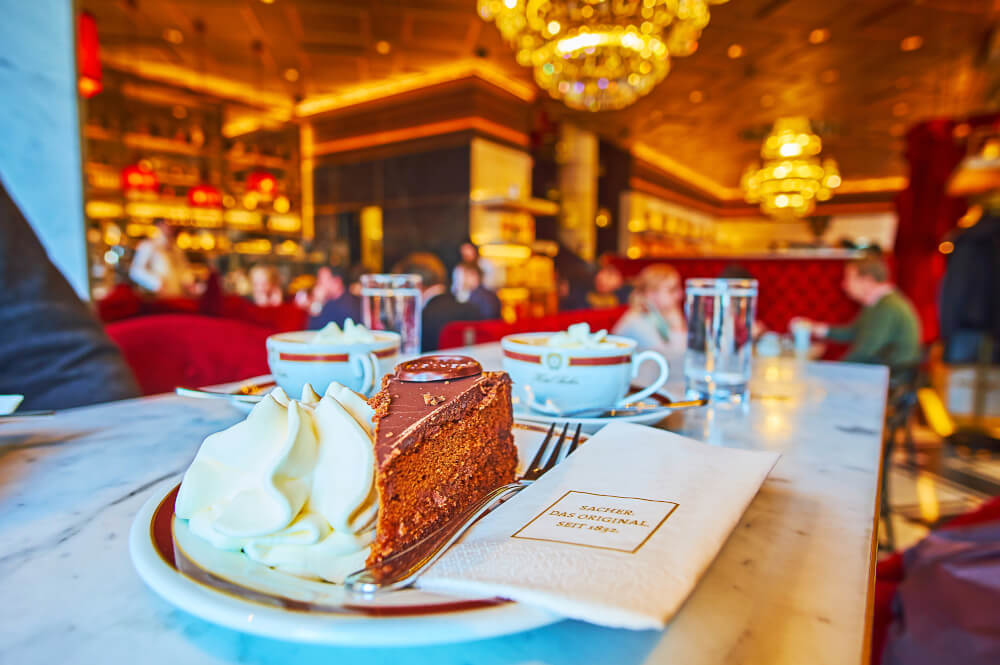
19. Try regional specialties wherever you are
While overseas visitors often think of Austrian food as simply schnitzel and not much else, the truth is there’s a lot of culinary variety across the country, so choose your eats accordingly.
For instance, Styria is known for its crispy fried chicken (Backhendl) and delicious pumpkin seed oil. Some alpine regions are also known for their hearty eats like Käsespätzle, bouncy little dumplings slathered with cheese and onions.
Other regions do a lot of fish dishes, others work miracles with potatoes – all to say be sure to try the local specialties wherever you are.

20. Don’t miss out on Austrian wine
Despite its proximity to Germany, Austria is definitely more of a wine country than a beer country, so take advantage of all the crisp and delicious wines that they have to offer.
Or better yet – book yourself a trip to a wine region to enjoy it close to the source! South Styria is one of my favourite areas of Austria.
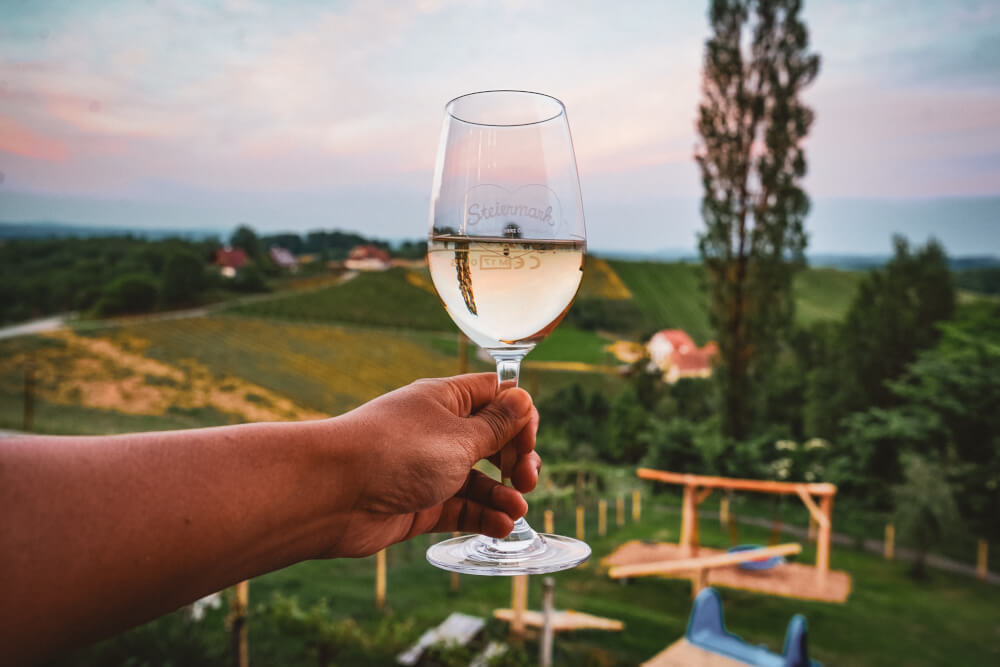
21. Try Almdudler
And if you’re looking for a soft drink to try in Austria, make sure you grab yourself a refreshing Almdudler.
Besides being fun to say, it’s a remarkably tasty soda made with alpine herbs, and is often considered the national drink of Austria.
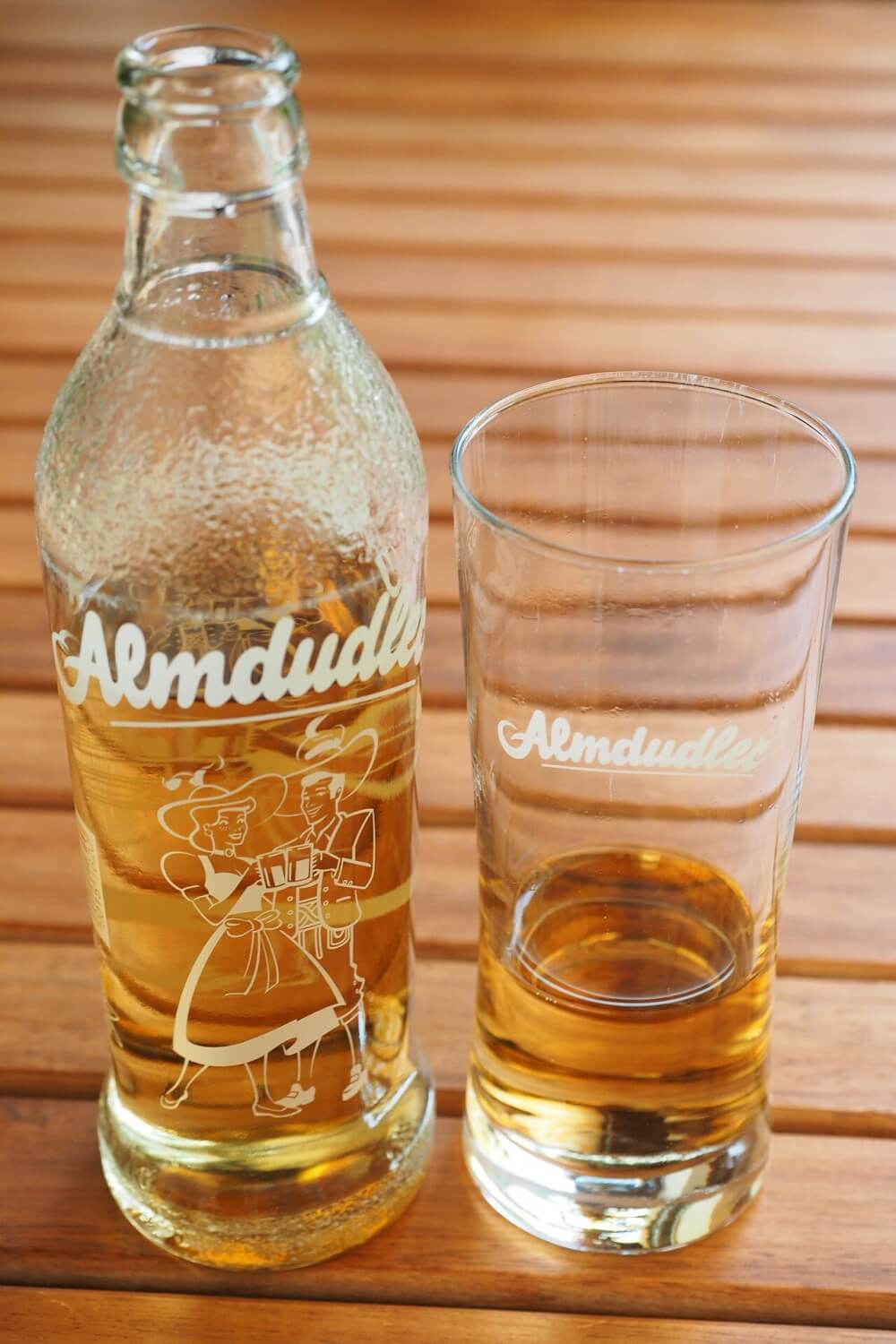
22. Don’t order schnitzel with sauce
A proper Austrian schnitzel requires little more than a quick squeeze of lemon juice. Anything more is often considered akin to sacrilege, so keep that in mind before your slather your schnitzel in mushroom sauce (which I fear to admit was actually a common thing I did in Germany).
And for my fellow Sound of Music fans, no, sadly ‘schnitzel with noodles’ is not a thing. Why is it in the song then? I imagine it’s likely because few things rhyme with “potato salad”.
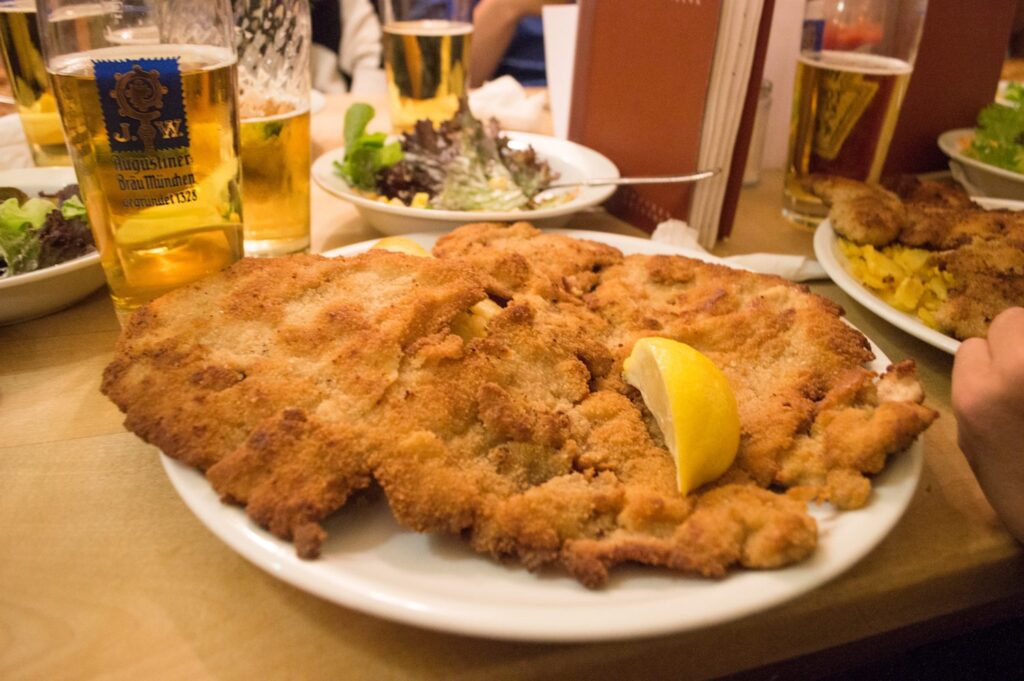
23. Bring cash
While many more places accept card payments these days in Austria, paying with cash is often still the norm, especially for smaller purchases, so having cash is always a good idea, preferably in smaller denominations like 50 euro bills or smaller.
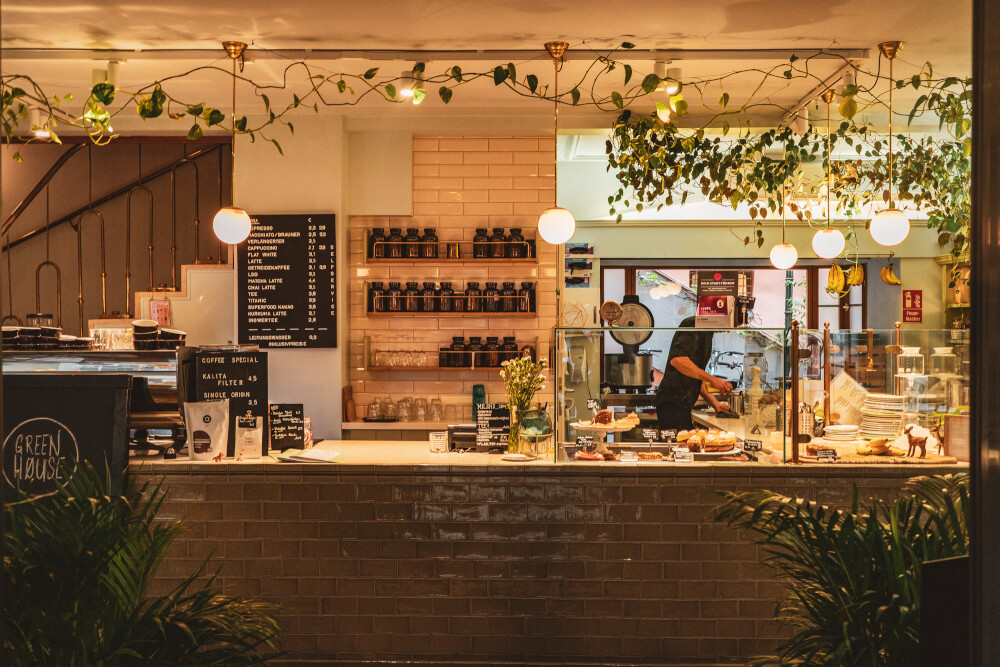
24. Prepare to pay for public bathrooms
Another important Austria travel tip is to bring coins with you wherever you go.
That’s because public bathrooms usually charge a small fee of 50 cents or a euro, so make sure you have some coins with you in case of an emergency.

25. Do not jaywalk
In Austria, the only crime worse than saucing up your schnitzel is crossing the street when you’re not supposed to.
No – really – jaywalking is not only illegal in Austria, it’s actually enforced (albeit kind of randomly), so err on the side of caution and avoid it if possible.
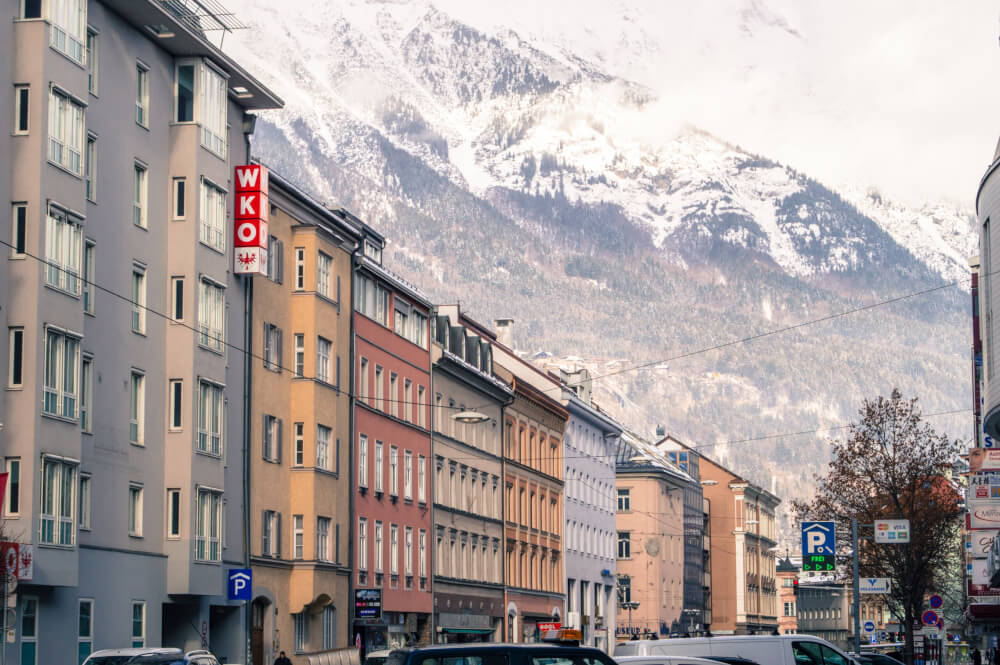
26. Remember that most shops are closed on Sundays
Last but not least, a very important Austria travel tip if your visit coincides with a Sunday is that Sundays are considered a day of rest in Austria so shops (including grocery stores) are closed.
That said, be sure to stock up on any shopping before Sunday, although in a pinch, bakeries, restaurants, gas stations and shops in transit hubs will usually still be open.

I hope this list of Austria travel tips was helpful!
If you’re here after all those Austrian travel tips, congrats – I’m beyond proud of you! Hopefully by now, you’ll feel much more prepared for your big Austria trip, but if you have any more questions, let me know in the comments.
My Go-To Travel Favourites:
🧳 Eagle Creek: My favourite packing cubes
💳 Wise: For FREE travel friendly credit cards
🍯 Airalo: My go-to eSIM
🏨 Booking.com: For searching hotels
📷 Sony A7IV: My (amazing) camera
✈️ Google Flights : For finding flight deals
🌎 WorldNomads: For travel insurance
🎉 GetYourGuide: For booking activities
Leave a Comment Cancel reply
By using this form you agree with the storage and handling of your data by this website. *
Welcome to the Holiday Information Service
Our holiday experts are here to assist you with your holiday planning. Send us a message and we will get back you as soon as we can.
Please fill in fields marked with *
Give us a call Monday to Friday from 8am to noon. Outside of our office hours please drop us an email and we'll be happy to answer your questions.
Telephone: 00800 400 200 00 Österreich Werbung Vordere Zollamtsstraße 13 A-1030 Wien Wien AT
*toll-free; calls from mobile networks may incur charges
We would like to show you content from external sources here. Unfortunately, you have not given us permission to do so. As soon as you load the content, you agree to the use of cookies for statistical and marketing purposes. You can change or withdraw your consent at any time via the ( data protection statement ). Load content See on Launch campaign Lebensgefühl Österreich - Subject for Austria Info Austrian National Tourist Office / Marko Mestrovic media_content.tooltip.skipped
We would like to show you content from external sources here. Unfortunately, you have not given us permission to do so. As soon as you load the content, you agree to the use of cookies for statistical and marketing purposes. You can change or withdraw your consent at any time via the ( data protection statement ). Load content See on Launchkampagne Lebensgefühl Österreich Austrian National Tourist Office / Marko Mestrovic media_content.tooltip.skipped
Austria – Lebensgefühl. Experience the Joy of Life in The Heart of Europe
Feel the ease, the serenity, the love for great food and art and culture, the charming wit, the welcoming atmosphere – feel the Austrian Lebensgefühl
Discover the Entire Country
Discover austria.
Explore Austria at its best with these concise itineraries. Whether it's iconic landmarks or hidden gems, culinary delights or art and culture, discover how to make the most out of your stay.
Vienna in 3 Days
Salzburg in 48 hours, innsbruck in 3 days, graz in 3 days, our hotel reccomendations, austria hotel collection.
Looking for a charming family-run hotel, a luxury spa resort, or a cosy private apartment? Here is our curated list featuring great hotels in Austria's cities and on the countryside.
A Summer in Austria - Your Daily Dose of 'Lebensgefühl'
Nature, mountains and lakes, cultural treasures and thousands of moments of indulgence are the setting for a very special attitude you'll experience during a summer holiday in Austria: A light-hearted feeling, that comes to life beautifully when connecting to the locals.
Lebensgefühl Austria - hiking with the family Austrian National Tourist Office / Marko Mestrovic media_content.tooltip.skipped
A Holiday in Austria puts a Smile on your Face
An experience, an encounter, sometimes just a moment - and the new somehow feels familiar. In Austria, this atmosphere is literally in the air: A sensation that, in nature, feels light and free, full of fun and joie de vivre. A feeling that, while connecting with the people who live here, feels genuine.
Mountains, water, energetic places, cultural treasures - that is Austria for you. As well as cooling off in a crystal-clear lake, the gratifying feeling when conquering a summit, and a snack at a mountain hut. Austria is the freedom of an open-air festival, and the cosiness of a wine tavern. All places and moments, that make it easy to clear your head, to be amazed, to feel the vitality. The spark is quickly ignited. Anyone who is a guest here becomes part of this very special attitude to life.
Experience Austria's Nature
These boots are made for walking, the most beautiful swimming lakes, i want to ride my bicycle, we are family, hiking with children.
Exploring mosses, watching butterflies, feeding goats ... Children are curious. Austria's hiking routes are just right for an unforgettable hiking day.
Moments of Cultural Pleasure
Museums and galleries, embrace austria's guilty pleasures, wine culture in austria, culinary pit-stops in austria, time for easter egg hunting, easter in austria.
Experience Austria's unique traditions and visit one (or more!) of our colourful Easter markets.
Which Summer Activity do you Fancy?
Walking and hiking in austria, cycling and biking in austria, lakes and nature in austria, trailrunning: a wonderful family experience, discover city life, city breaks in summer - your cultural 'lebensgefühl'.
City trips in Austrias cultural summer hit right at the heart. Because Austrias cities surprise, make curious – and sometimes even are addictive. #feelAustria
Austria is a country rich with history, beautiful regions, imperial cities and year long activities.
In Harmony with Austria
When you spend your holiday in Austria, you will experience that one moment – the moment that you’ll remember for years to come, the moment you’ll return to in your head when life gets stressful.
Active in the Outdoors
It's the small moments that make us happy: The pride on our best friend's face when finally reaching the summit. Or at night, falling asleep with achy legs but a smile on our face. That's what life in the outdoors is all about.
Wellbeing & Relaxation in Austria's Nature
Nature soothes our minds and bodies. From the healing effect of waterfalls and trees to the beauty of cultural landscapes, mountains, and waters, Austria is filled with natural gems.
Why Forest Bathing Can Make You Healthier and Happier, According to Science
Why spas and thermal baths are so good for us, culinary discovery trip through austria.
Austria owes its culinary identity to both its location in the heart of Europe and its remarkable history. Austria stands for openness to varied influences and a love for refining existing traditions at the highest level.
9 restaurants and mountain huts with a view
Dream career: organic farmer, austrian culture, artists & masterpieces.
Let us dive into Austria’s arts and culture sphere and discover fascinating stories of the masters and personae that led the way.
Hedy Lamarr, Hollywood Goddess and Lady Bluetooth
Gustav klimt loved art, women and lake attersee, our hotel recommendations, find a city hotel, find an alpine stay, share feedback for a chance to win a special holiday experience.
We value your feedback! Take part in our brief survey to be in with the chance of winning one of five very special holiday experiences in Austria. Click here to take part.
It goes without saying that your data is processed with complete anonymity. Read the terms and conditions here.
Insiders' Tips
Austria’s prettiest places, according to austrians, austria’s top sights, top 5 austrian dishes you need to try, austria's quirkiest city tours, events in austria, practical travel information, about austria, brexit and travelling to austria, how to get to and around austria, what are you interested in, family fun in austria, round trips in austria, cities and culture in austria, skiing and winter in austria, austrian cultural stories, famous austrians.
From Mozart and Sisi to Hedy Lamarr – Austria's sons and daughters have left their mark across music, art, science, politics, and sport. Find out which famous personalities originate from or lived in Austria and follow in their footsteps.
Passport & Visa for Austria
Vienna pass: your personal key to the city, travel experiences designed by experts, austrian – the charming way to fly.
Enjoy Austrian hospitality and multi-awarded service already on board, with Austrian Airlines from 130 cities around the world direct to Vienna and other Austrian cities.
Explore Austria By Train
Travelling through Austria by train is reliable, comfortable, and convenient. Relax, sit back, and enjoy your vacation, the Austrian Railways takes you to Austria’s most beautiful places.
Have a Taste of Austria
[{ "@context": "http://schema.org/", "@type": "imageobject", "url": "/static/img/icon/recipe.png", "contenturl": "/static/img/icon/recipe.png", "caption": "favourite austrian recipes", "isfamilyfriendly": true }] favourite austrian recipes.
Craving a taste of Austria? Why not don your apron and recreate your favourite regional specialities at home? Here is a list of some of Austria's most delicious all-time classics.

©Miguel Angel Martín Campos/500px
No country waltzes so effortlessly between urban and outdoors as Austria. One day you're cresting alpine summits, the next you're swanning around imperial Vienna.
Best Time to Visit
Best places to visit, your next trip starts here.
Go from dreaming to planning with trip planning options made to help you craft your ideal itinerary.
Attractions
Must-see attractions.
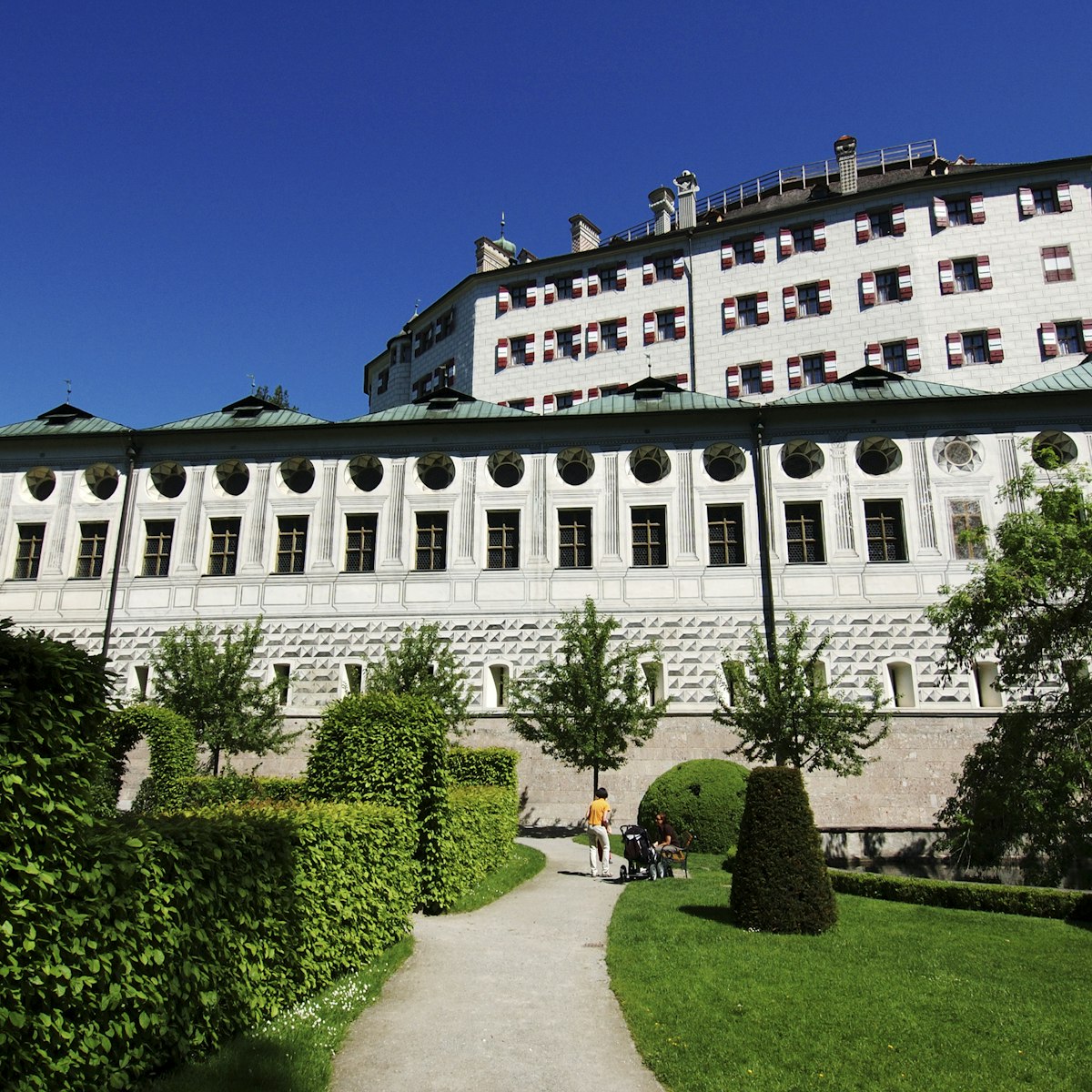
Schloss Ambras
Picturesquely perched on a hill and set among beautiful gardens, this Renaissance pile was acquired in 1564 by Archduke Ferdinand II, then ruler of Tyrol,…
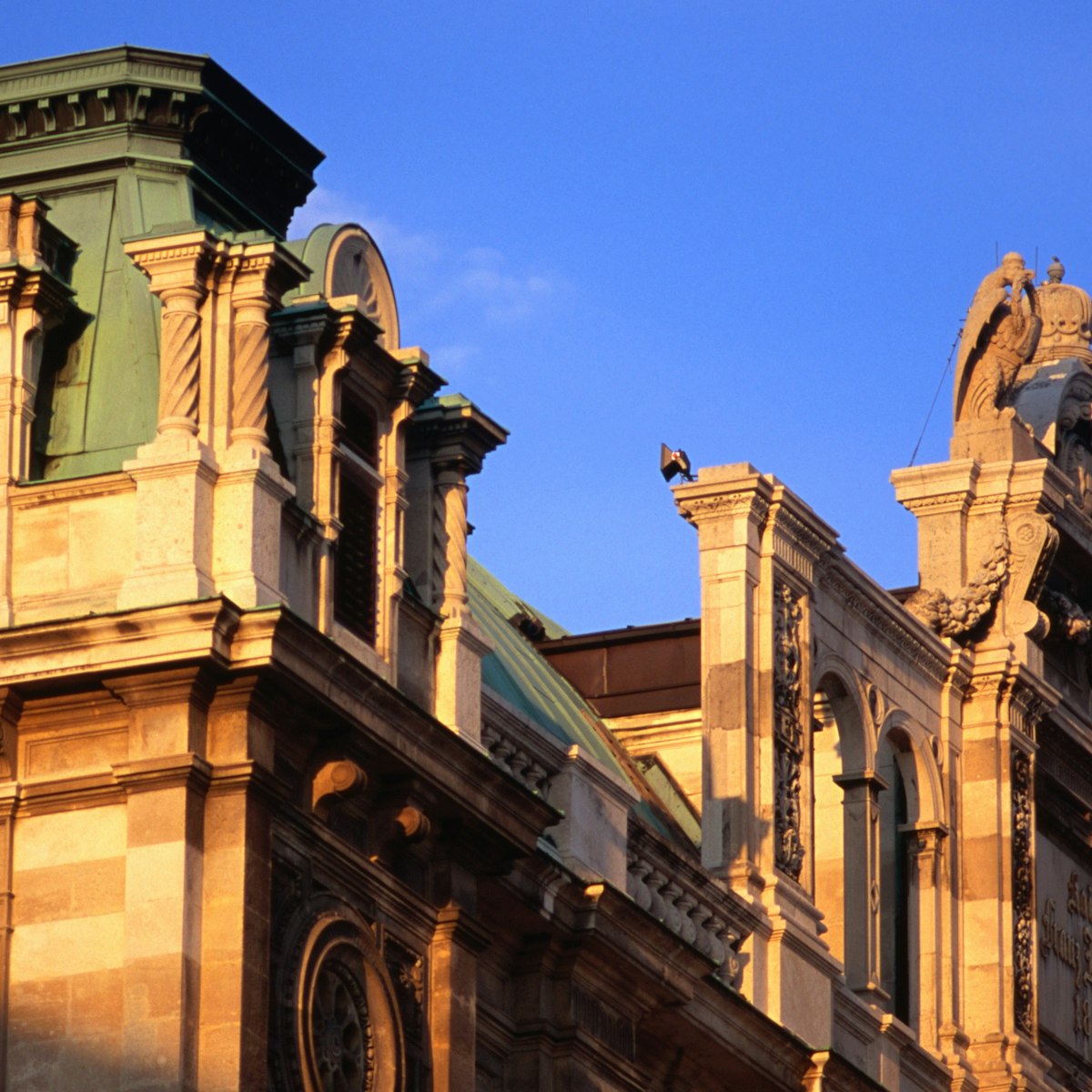
Vienna's foremost opera and ballet venue, the neo-Renaissance Staatsoper, is one of the finest concert halls in the world. Even if you can't get tickets…
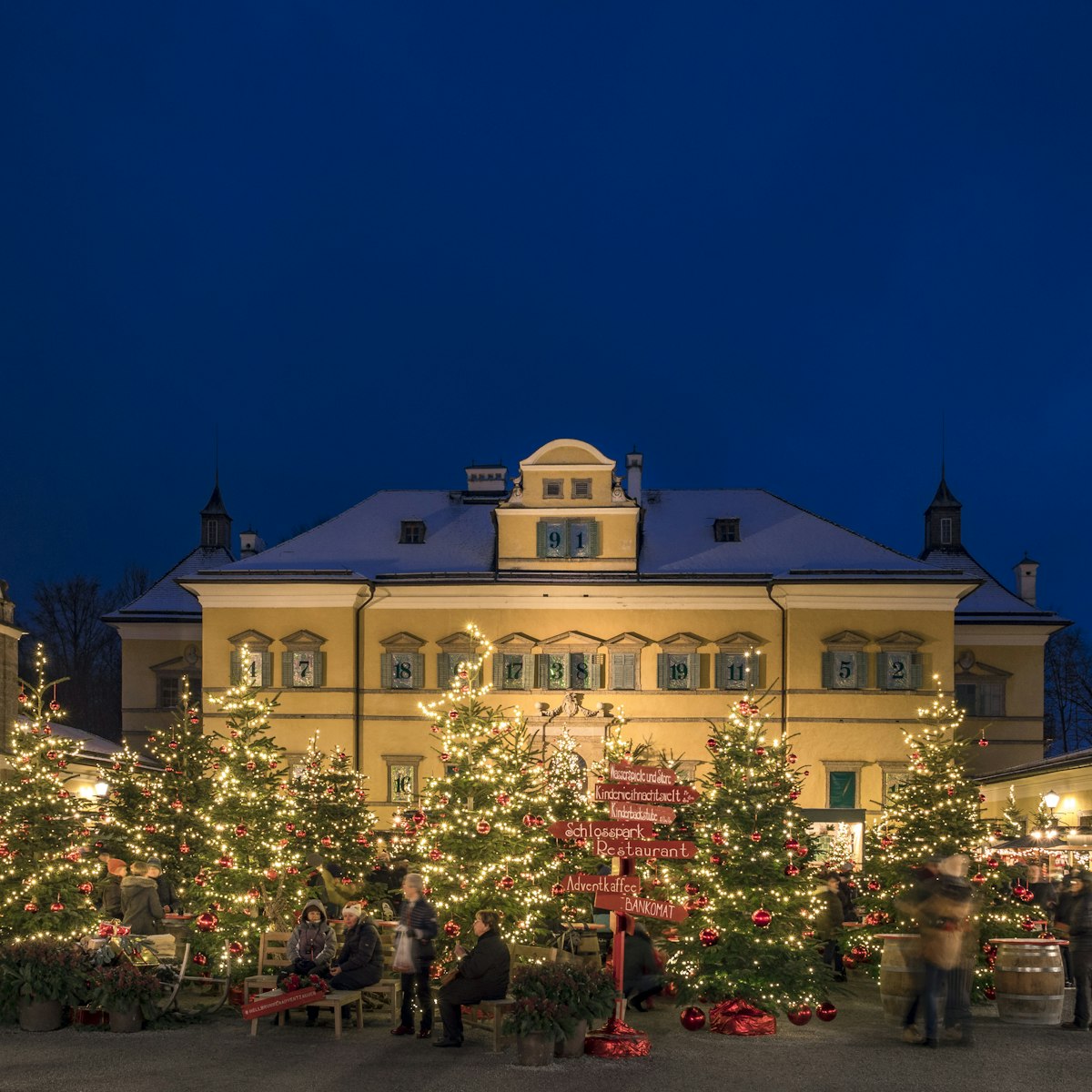
Schloss Hellbrunn
A prince-archbishop with a wicked sense of humour, Markus Sittikus, built Schloss Hellbrunn in the early 17th century as a summer palace and an escape…

Stephansdom
Vienna’s Gothic masterpiece Stephansdom – or Steffl (Little Stephan), as it’s ironically nicknamed – is Vienna's pride and joy. A church has stood here…

Festung Hohensalzburg
Salzburg's most visible icon is this mighty, 900-year-old clifftop fortress, one of the biggest and best preserved in Europe. It's easy to spend half a…
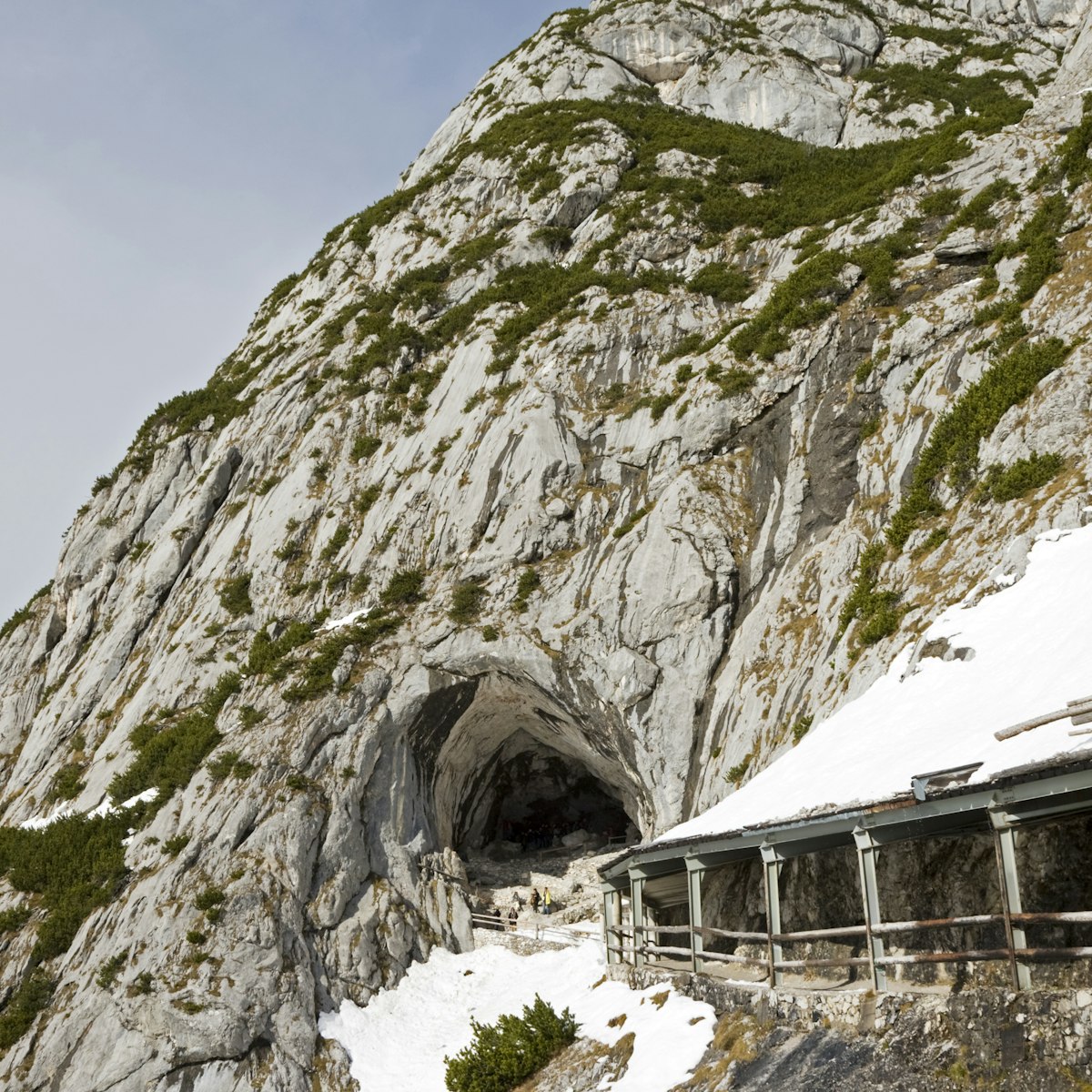
Eisriesenwelt
Salzburg & Salzburgerland
Billed as the world’s largest accessible ice caves, Eisriesenwelt is a glittering ice empire spanning 30,000 sq metres and 42km of narrow passages…
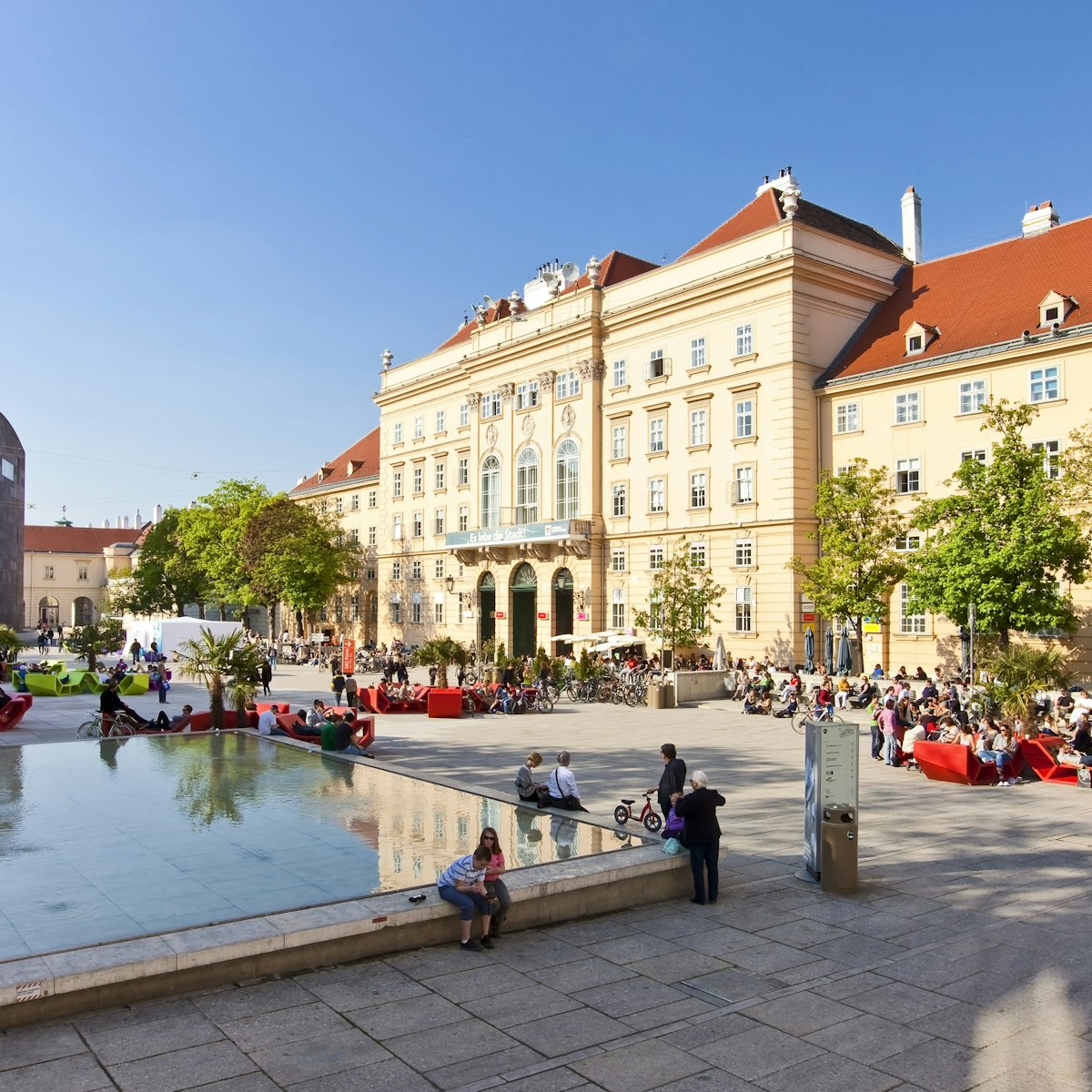
MuseumsQuartier
The MuseumsQuartier is a remarkable ensemble of museums, cafes, restaurants and bars inside former imperial stables designed by Fischer von Erlach. This…
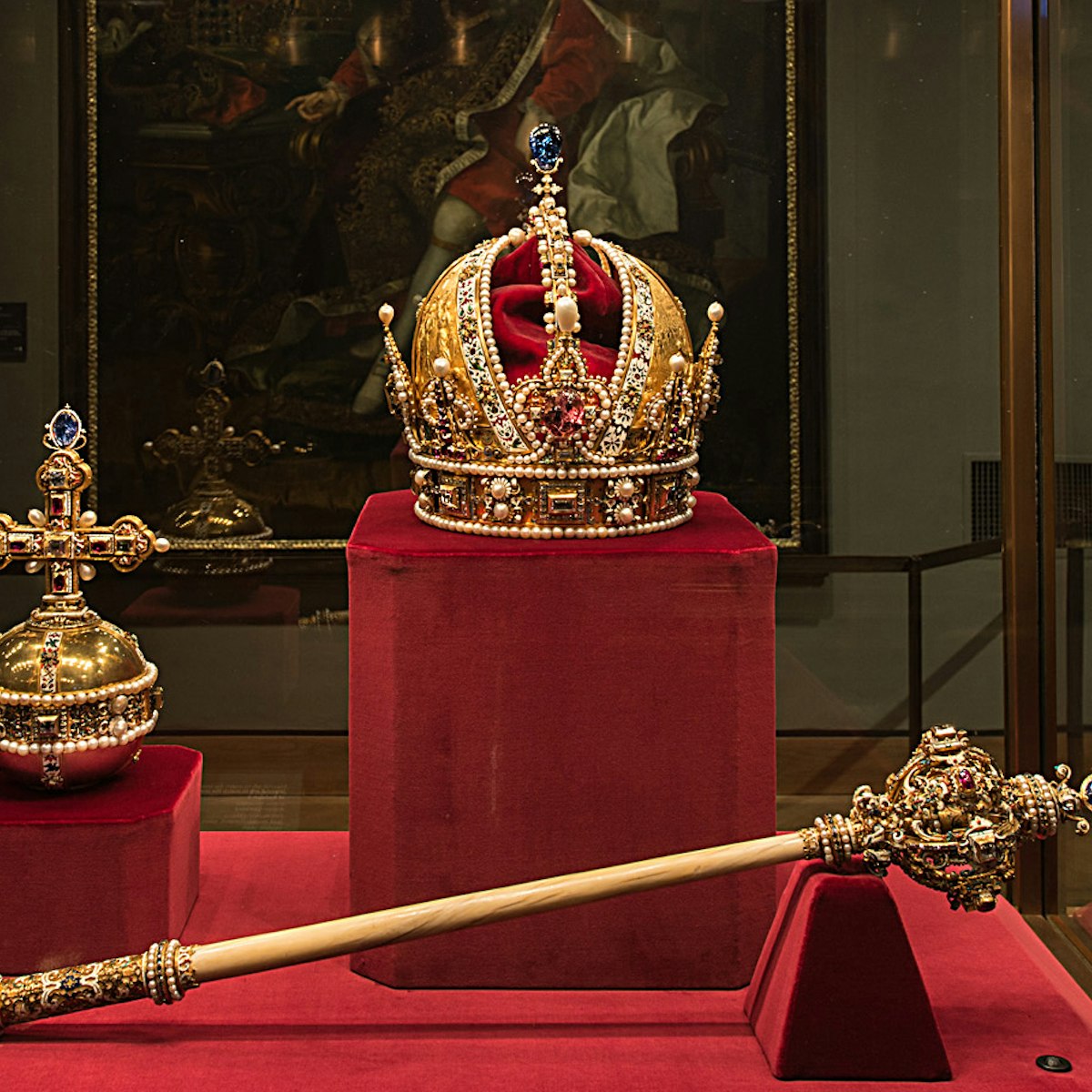
Kaiserliche Schatzkammer
The Hofburg's Kaiserliche Schatzkammer contains secular and ecclesiastical treasures (including devotional images and altars, particularly from the…
Top picks from our travel experts
From palace to peak: the 10 best things to do in austria.

The Danube Valley
Of the many abbeys in Austria, Stift Melk is the most famous. Possibly Lower Austria's finest, the monastery church dominates the complex with its twin…
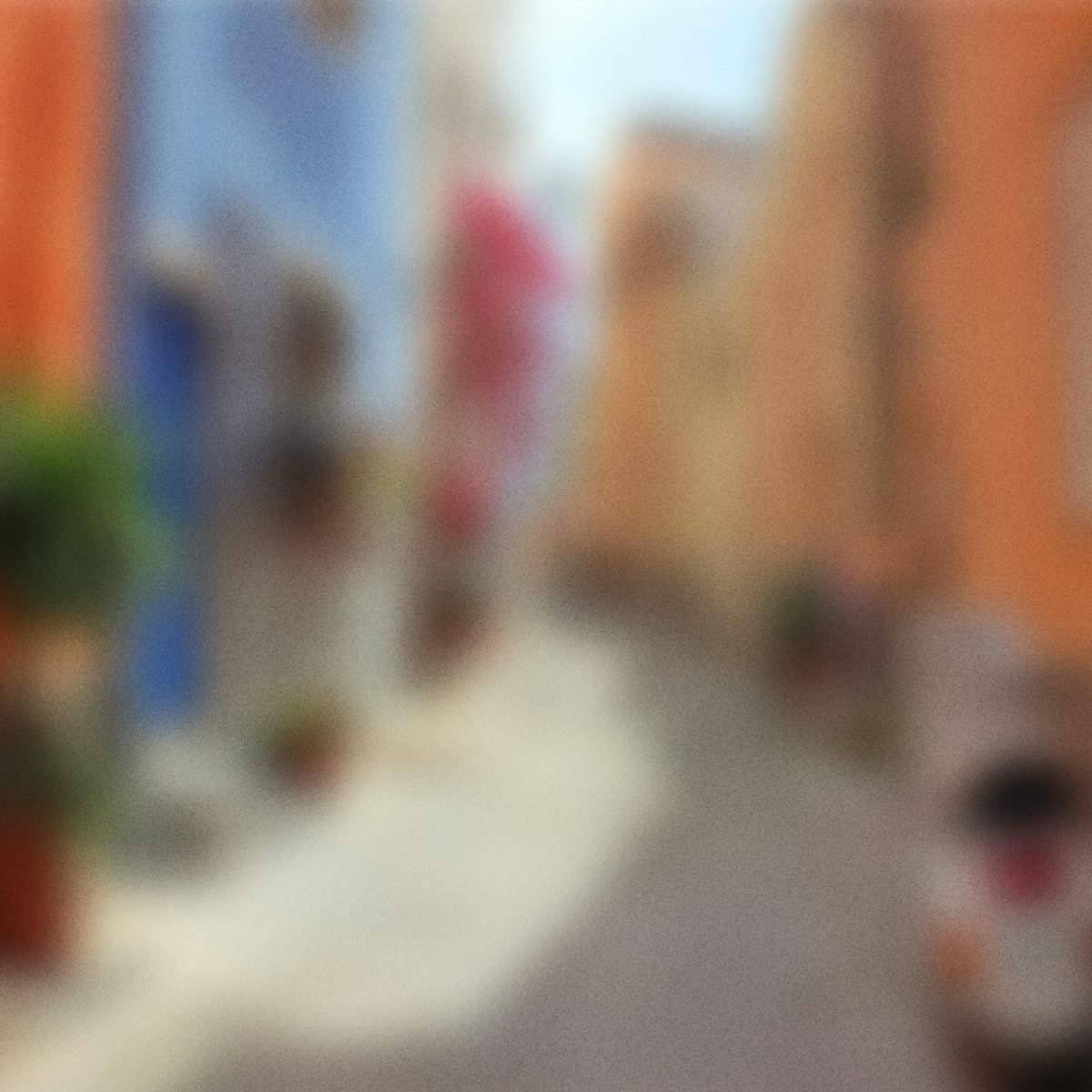
Silvretta Mountain Bike Arena
Few Austrian resorts can match Ischgl for mountain biking. The mammoth Silvretta Mountain Bike Arena features 1000km of bikeable territory, ranging from…
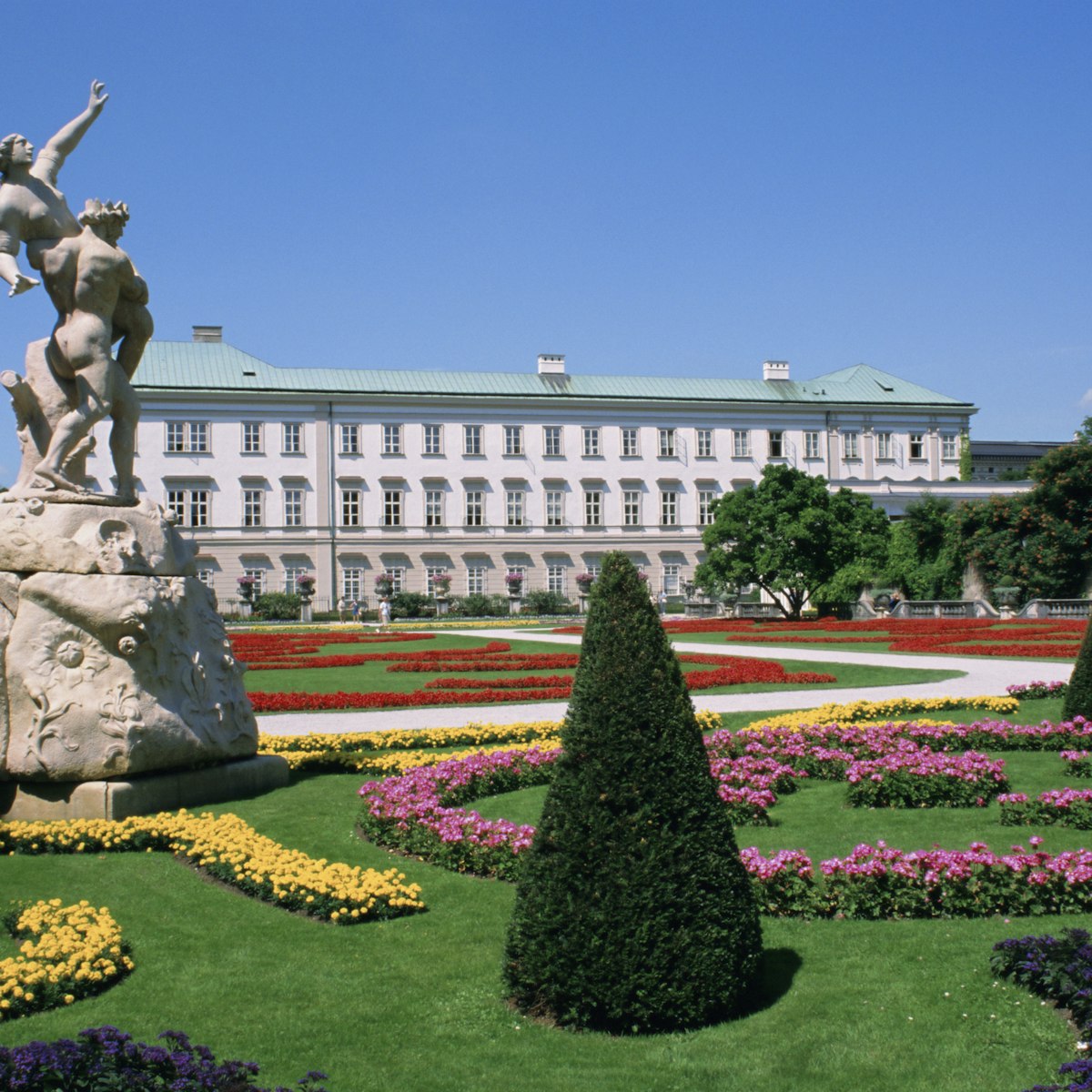
Schloss Mirabell
Prince-Archbishop Wolf Dietrich built this splendid palace in 1606 to impress his beloved mistress, Salome Alt. It must have done the trick because she…
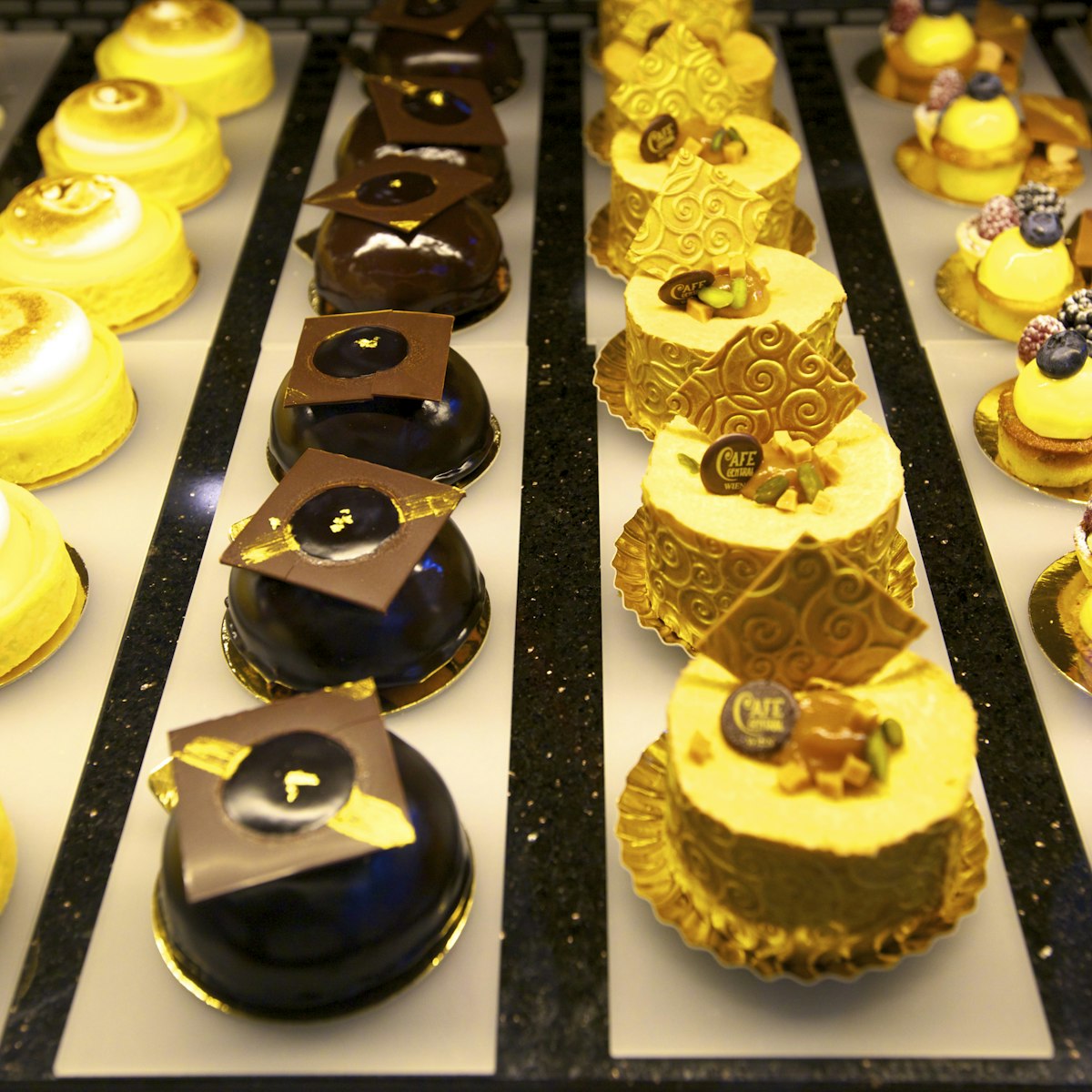
Café Central
Coffee-house legend alert: Trotsky came here to play chess, and turn-of-the-century literary greats like Karl Kraus and Hermann Bahr regularly met here…
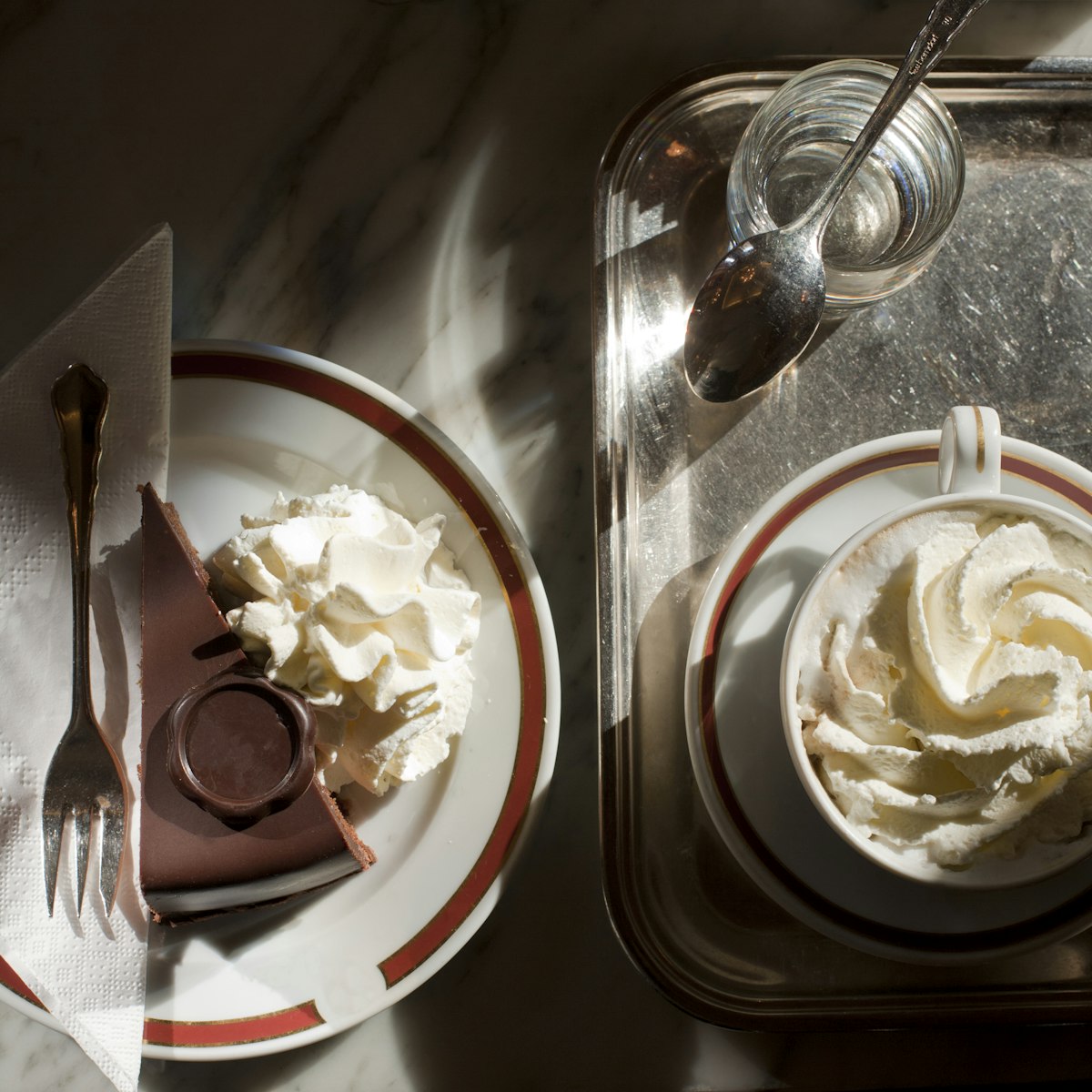
Café Sacher
With a battalion of waiters and an air of nobility, this grand cafe is celebrated for its Sacher Torte, a wonderfully rich iced-chocolate cake with…
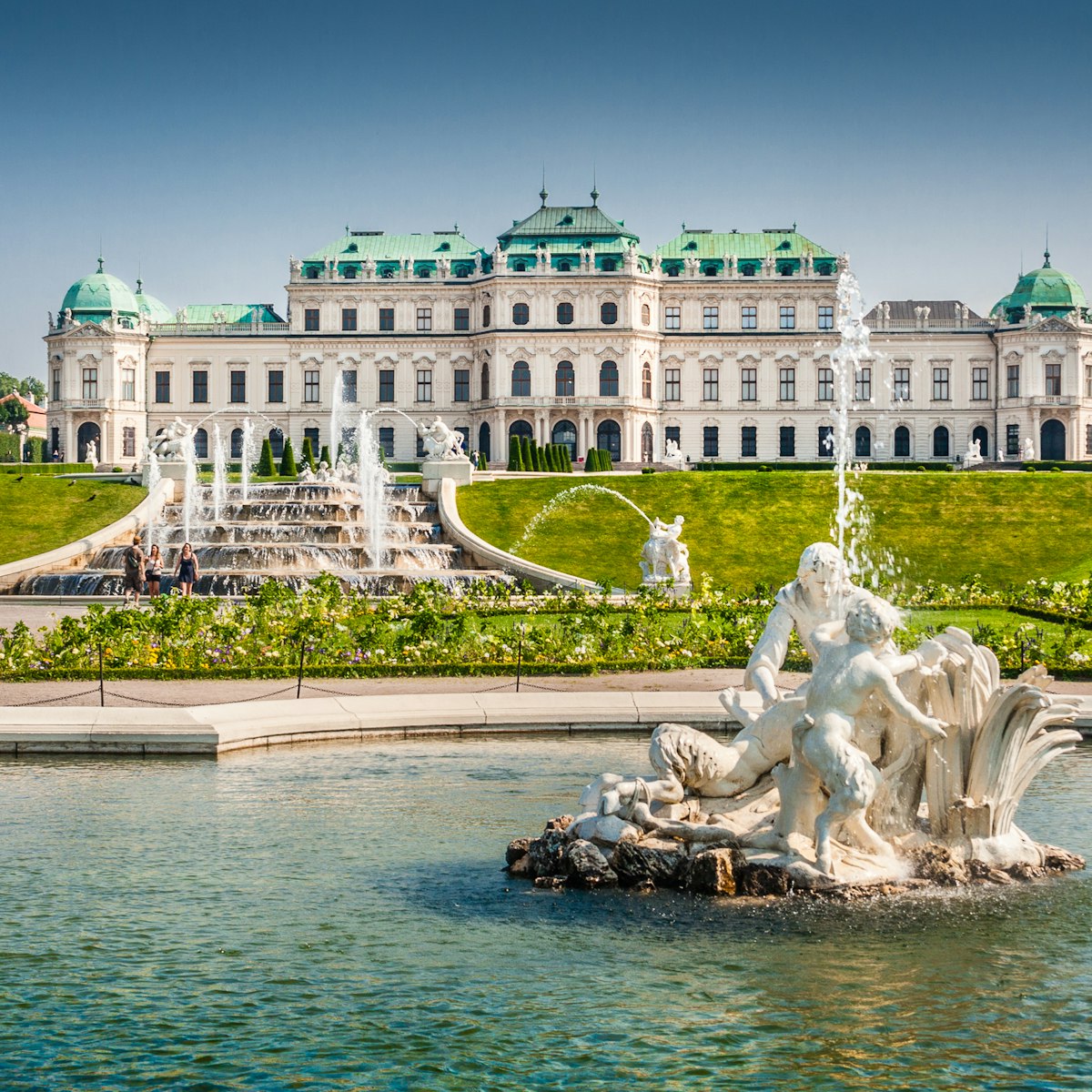
Schloss Belvedere
Schloss Belvedere to the Canal
A masterpiece of total art, Schloss Belvedere is one of the world’s finest baroque palaces. Designed by Johann Lukas von Hildebrandt (1668–1745), it was…
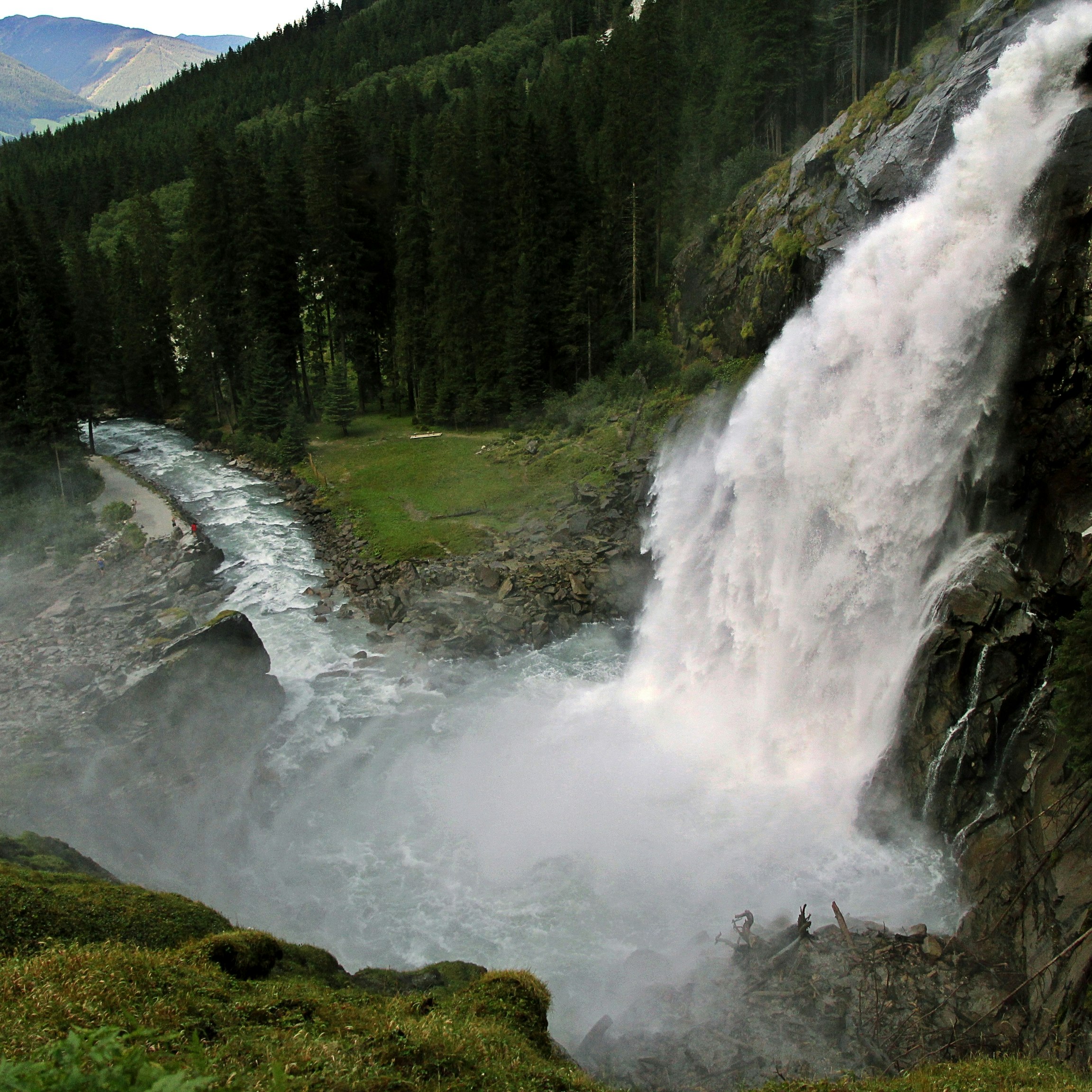
Krimmler Wasserfälle
Hohe Tauern National Park
Enshrouded in mist, arched by a rainbow, frozen solid – this waterfall always looks extraordinary, no matter what time of year. The Wasserfallweg …

Bergführer Kals
If you're seriously considering a two-day ascent to Austria's highest of the high, Grossglockner (3798m) or Grossvenediger (3666m), this team of mountain…

Kuenringerburg
Kuenringerburg, the castle high on the hill above the town, is where Richard the Lionheart was incarcerated from 1192 to 1193. His crime was insulting…

Grossglockner Road
A stupendous feat of 1930s engineering, the 48km Grossglockner Road swings giddily around 36 switchbacks, passing jewel-coloured lakes, forested slopes…
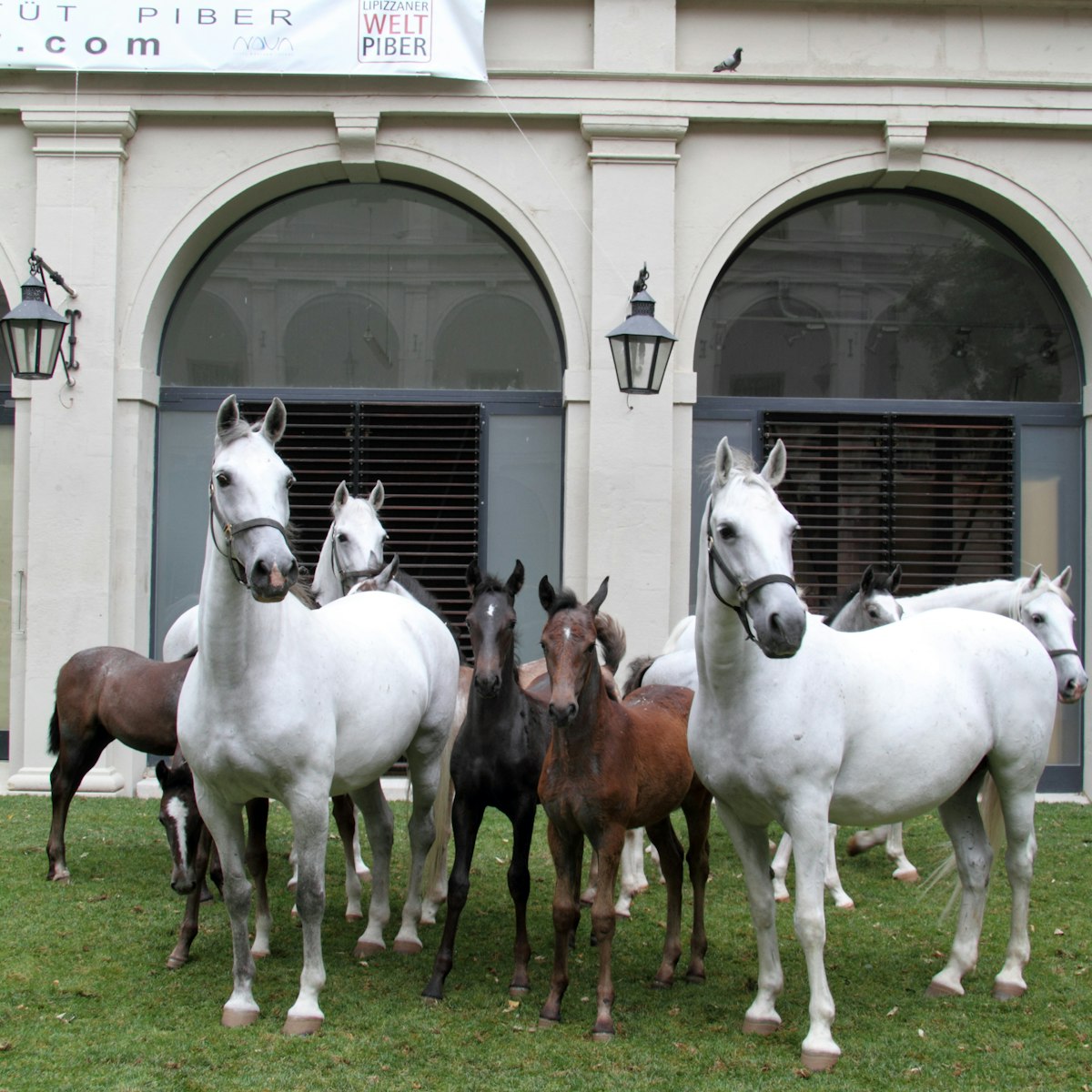
Spanish Riding School
Vienna's world-famous Spanish Riding School is truly reminiscent of the imperial Habsburg era. This equestrian show is performed by Lipizzaner stallions…

The fascinating Salzbergwerk (salt mine) is situated high above Hallstatt on Salzberg (Salt Mountain) and is the lake's major cultural attraction. The…
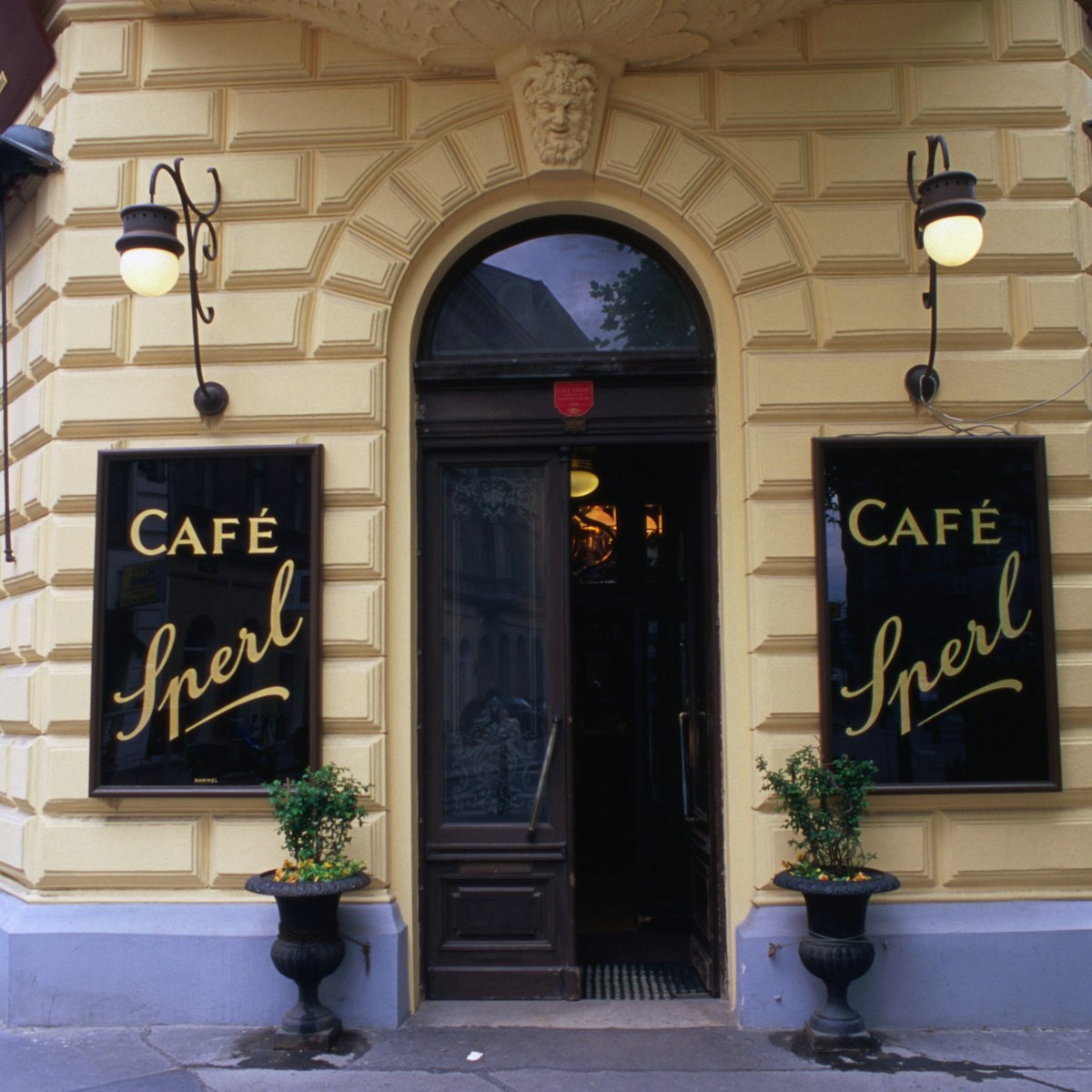
With its gorgeous Jugendstil fittings, grand dimensions, cosy booths and unhurried air, 1880-opened Sperl is one of the finest coffee houses in Vienna…

National Park Worlds
For the inside scoop on all things Hohe Tauern National Park, factor in a stop at this terrific visitor centre. The museum side of it showcases the park…

Ranger Walks
To get the most out of Hohe Tauern National Park, consider signing up for one of the guided walks led by well-informed rangers. On weekdays from July to…

Fräulein Maria’s Bicycle Tours
Belt out The Sound of Music faves as you pedal along on one of these jolly 3½-hour bike tours, taking in locations from the film, including Schloss…
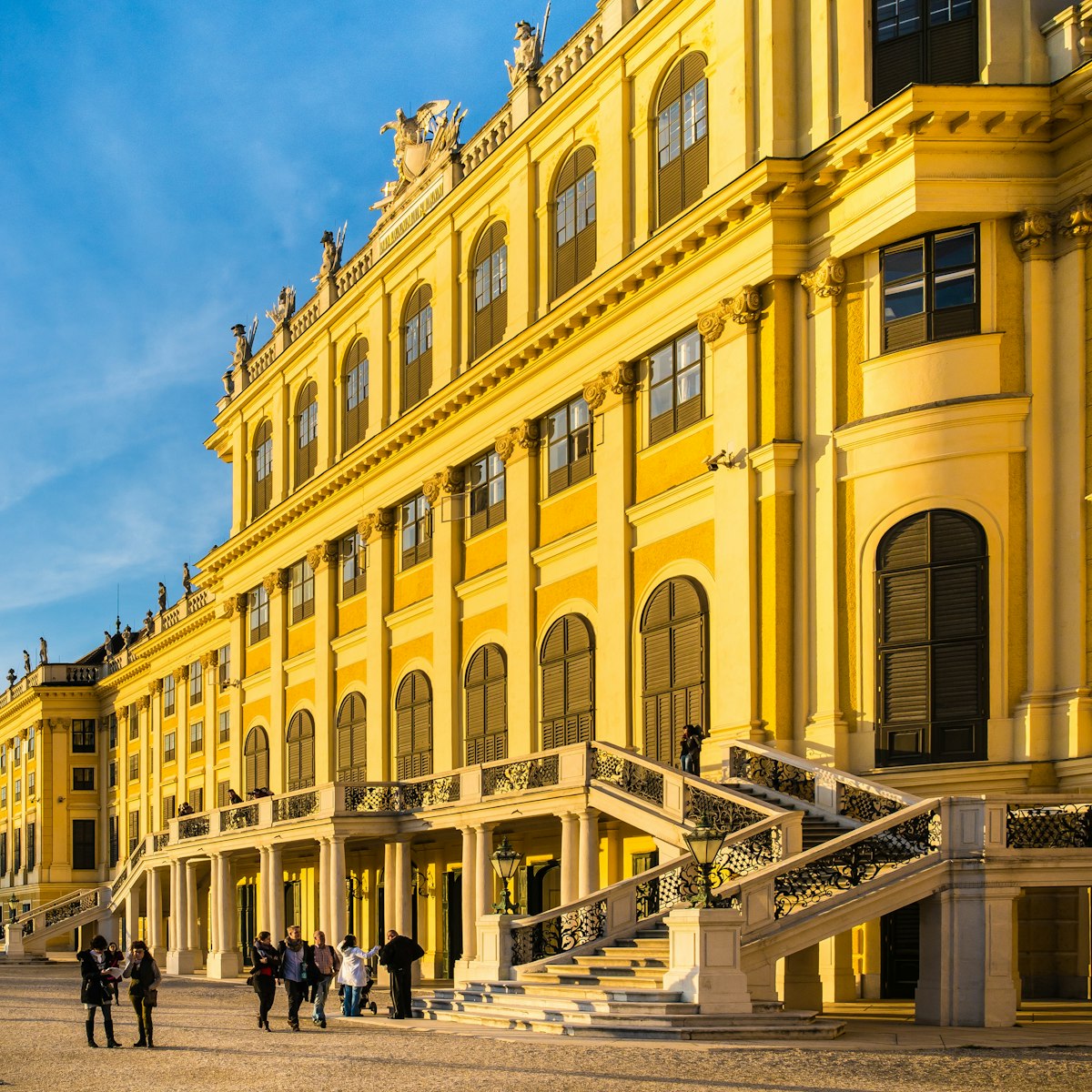
Schloss Schönbrunn
The Habsburgs' opulent summer palace is now a Unesco World Heritage site. Of its 1441 rooms, 40 are open to the public; the Imperial Tour takes you into…
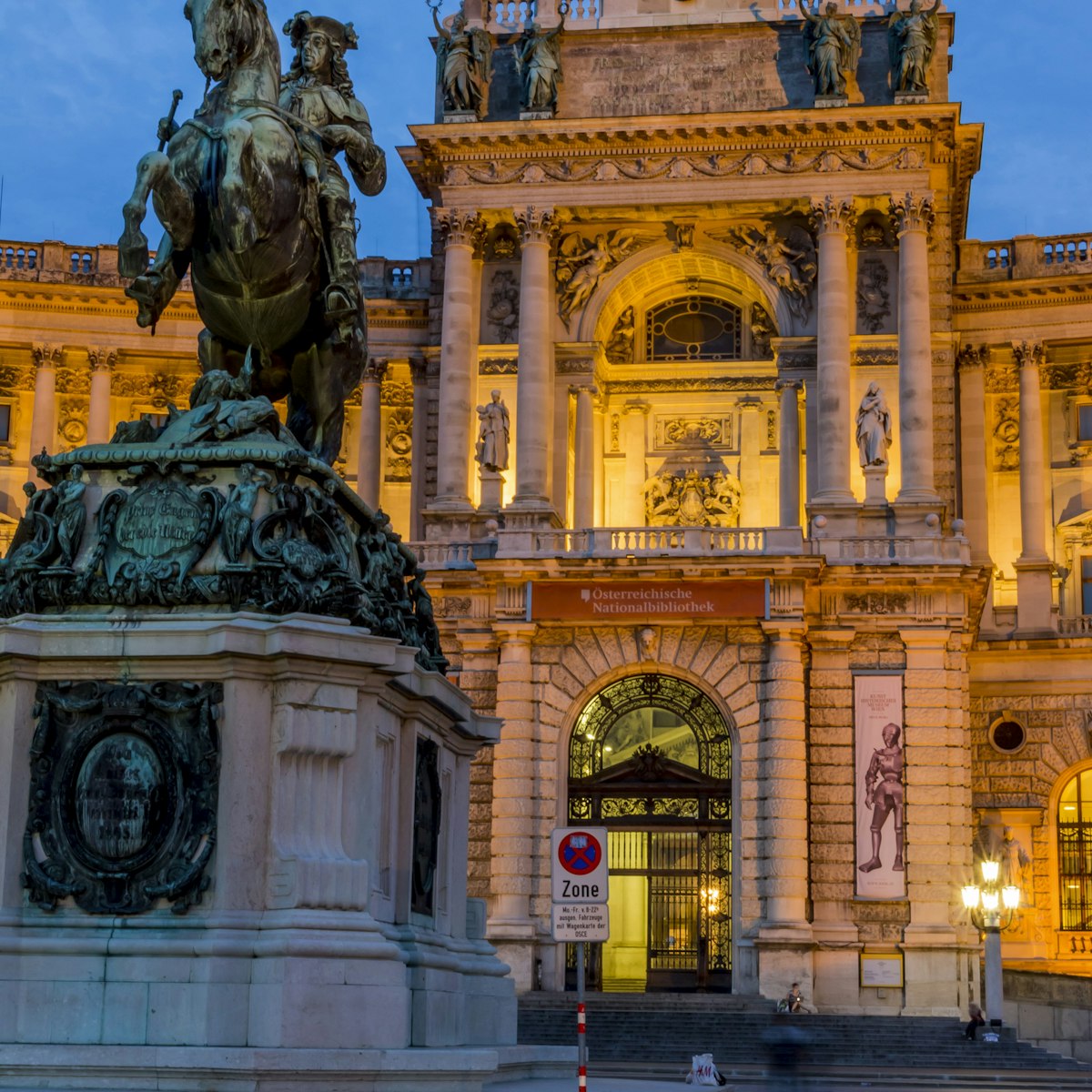
Nothing symbolises Austria's resplendent cultural heritage more than its Hofburg, home base of the Habsburgs from 1273 to 1918. The oldest section is the…
Planning Tools
Expert guidance to help you plan your trip.
Best Things to Do
Mountain drives, epic slopes, cozy coffee houses, dramatic palaces – read on for our take on the 10 best things to do in Austria.
Transportation
Austria is served by an excellent rail network and buses cover most places you’ll want to get to beyond the tracks. Here are the best ways to get around.
Visa Requirements
From mountain peaks to cultured cities, Austria offers activities galore for nature, sports and art lovers. Here's all you need to know about getting a visa.
Money and Costs
Majestic mountains, crystal-clear lakes, cultural festivals and famous sights make exploring Austria worthwhile at all times of year.
Best Road Trips
Road-trips in Austria are all about the freedom of the open road and landscapes that will leave you breathless. Here's a guide to Austria's best road trips.
Latest stories from Austria
Filter by interest:
- All Interests
- Adventure Travel
- Art & Culture
- Beaches, Coasts & Islands
- Food & Drink

Sustainable Travel
Nov 1, 2023 • 4 min read
Europe's night train operators are aiming to make rail travel so much more enjoyable for passengers than simply getting from A to B.
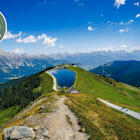
Oct 4, 2023 • 4 min read
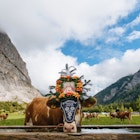
Dec 9, 2022 • 9 min read
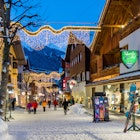
Dec 22, 2021 • 3 min read
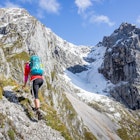
Nov 4, 2021 • 6 min read
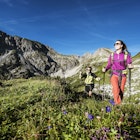
Nov 4, 2021 • 9 min read

Nov 2, 2021 • 12 min read

Nov 1, 2021 • 9 min read

Oct 28, 2021 • 6 min read
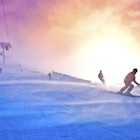
Oct 26, 2021 • 5 min read
in partnership with getyourguide
Book popular activities in Austria
Purchase our award-winning guidebooks.
Get to the heart of Austria with one of our in-depth, award-winning guidebooks, covering maps, itineraries, and expert guidance.
Austria and beyond
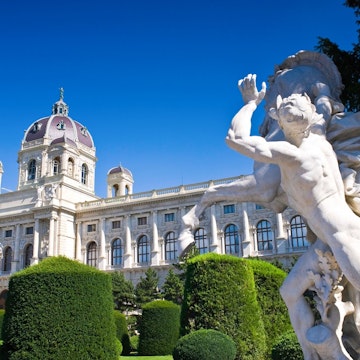
50 things you need to know before traveling to Austria
Austria is one of our favorite destinations in Europe . It has beautiful natural landscapes, historic cities, impressive architecture, and fabulous landmarks, and it is one of the best places in the world to explore classical culture and art. Naturally, it is a very popular country among travelers.
In this guide, we will help you plan a fabulous trip to Austria by providing travel tips that allow you to travel easily, and stress-free while making the most of what the country has to offer. And believe us, it has more than enough.
So, and to make this information easy to understand, we created the 50 things you need to know before traveling to Austria while peeking at the best destinations and monuments, how to interact with locals, the best ways to travel, expected costs, ways to save, and much more…
Page Contents
About Austria and the Austrians
#1 With only 83,872 km2, Austria is a relatively small country. Located in the center of Europe, it is landlocked and borders Germany and Czechia to the north, Slovakia and Hungary to the east, Italy and Slovenia to the south, and Switzerland and Liechtenstein to the west.
#2 Austria is extremely mountainous, especially in the western regions. Marked by the Alps, more than 65% of the country is at an altitude above 500 meters; the highest point is the Grossglockner, with 3,797 meters of altitude.
#3 Austria is one of the world’s richest and most developed countries, and this is visible everywhere. Not because of the luxury and ostentation but for the organization, cleanliness, and quality of life that is always present.
With a Gross Domestic Product per capita PPP (purchasing power parity) of 60,418 international dollars, Austria is the 14th richest country in the world. In terms of human development, Austria ranked 18th in 2018.

How are Austrians like
#4 Despite its small size, Austria has almost 8.9 million inhabitants, of which 1.8 million (2.8 if we include the metropolitan area) live in Vienna, the capital and largest city. All other Austrian cities are much smaller, the main ones being: Salzburg, Linz, Graz, and Innsbruck.
#5 German is the official language, and virtually everyone in Austria speaks German, however, there are some regional languages , such as Croatian, Hungarian, and Slovenian, close to the respective borders. The German dialect of Austria is very similar to the Bavarian.
If you speak some German, even just a few words, it will be greatly appreciated. It also helps a lot when you need to follow basic directions and road signs.
#6 But even if you don’t speak any German, a large part of Austria’s population speaks English. In big cities and tourist areas, then, you won’t have any problems. In some more hidden areas that receive few foreigners, you may have a few more problems, but nothing that can’t be solved.

#7 Be that as it may, we always suggest that you learn some expressions in German, as in almost all other countries, locals like tourists to make an effort to communicate in their language.
- Hello – Hallo;
- Good morning/afternoon/evening – guten morgan if it’s morning; guten tag from noon to dusk (but can be used all day); guten abend (after dark)
- Please – Bitte;
- Thank you – Danke;
- Goodbye – Auf Wiedersehen or Tschüss;
#8 Our experience dealing with the Austrians has always been pretty positive. Despite having a reputation for being cold or distant, they are always very helpful and friendly.
They are not Latinos, but they are very attentive, and if they see us having difficulties doing something, they take the initiative to ask if we need help. In this sense, the Austrians are similar to the Germans in Bavaria.
#9 This brings us to one thing that Austrians really don’t like. Never call an Austrian a German, or confuse Austria with Germany. Although to an outsider, there are many similarities (and especially with Bavaria), confusing or mixing Austria with Germany is a serious faux pas .
In short, they speak German, but they are not German 🙂

#10 One of the things everyone remembers when talking about Austria is the Habsburgs, the former Austrian royal family. For hundreds of years, the Habsburgs were one of the most influential families in all of Europe, making Austria and, subsequently, the Austro-Hungarian Empire one of the main European powers.
The Habsburgs were also well-known patrons of art and science, and this made Austria and particularly Vienna, one of the main European cities, even rivaling Paris at times.
#11 The Austro-Hungarian Empire was really a huge country that dominated almost all of east-central Europe. This domain ended with the first world war, but many of Austria’s main tourist attractions and monuments were created during this time.
Austria-Hungary included (partially or fully) territories of present-day Austria, Hungary , the Czech Republic, Slovakia, Poland, Romania , Slovenia, Croatia , and Serbia.
See here for this and other things Austria is so famous for

Weather in Austria
#12 In general, the climate in Austria is continental, with cold and relatively dry winters and hot and rainy summers. In alpine areas, precipitation is higher, and temperatures are lower.
Winters are quite cold throughout Austria, even in Vienna and the Danube Valley, where the average temperature is around 0 degrees. In the valleys, the temperatures are even lower, and in the mountains, much lower.
During the summer, temperatures are pleasant in the valleys and Vienna, but at night it gets quite cold. In Vienna, the average highs reach 25/26º Celsius. Some summer storms with rain and thunderstorms are usual.

When to travel to Austria?
#13 Austria is a tourist destination all year round, offering interesting winter and summer activities. The high season is undoubtedly summer, especially in Vienna and Salzburg. So, the best time to travel to Austria depends greatly on your purpose.
If you want to go skiing, then it will have to be in winter, preferably at the end, with February, March, and April probably the best months. Otherwise, generally, the best time of year to travel in Austria is in May/June and then in September and early October. Afterward, it can start to be very cold.
In July/August, the temperatures are higher, but it is more likely to get rain, especially for crowds in more touristy places.

Is it safe to travel in Austria?
#14 Austria is a very safe country, where you will hardly find crime, let alone violent crime. However, as in all countries, it is necessary to pay attention when on public transport and near major tourist attractions, as scams and pickpockets are always possible.
We never felt the least bit in danger in Austria and always felt quite safe, even walking at night. Our experience in Austria has been nothing but positive regarding safety.
In the Alps, it is necessary to pay special attention to rapid changes in weather, avalanches and not get lost on mountain trails.

Travel in Austria
Tourists in austria.
#15 Austria is a very popular destination, receiving millions of tourists every year. With about 32 million international arrivals, it was the 7th most visited country in 2019, generating almost 23 billion dollars. By comparison, Portugal received almost 25 million tourists.
Most tourists in Austria are European, namely from Germany and the Netherlands . The main tourist regions in Austria are Tyrol, Vienna, and Salzburg. As we said initially, it is a popular destination throughout the year, with peaks in winter (February) and summer (August).
UNESCO Heritage in Austria
#16 Austria has 10 UNESCO World Heritage Sites, some shared with other European countries. Of these ten places, nine are cultural heritage, and only one is natural heritage. You can check the full list here.
In addition to these sites, Austria also has several traditions and cultures that have been considered an intangible heritage of humanity by UNESCO, such as the Spanish riding school, the Viennese coffee culture, and the Schemenlaufen, also known as the Carnival of Imst.

Where to go in Austria
#17 At first glance, we might think that the most popular tourist destination in Austria would be Vienna, but the truth is that the region that receives the most tourists is Tyrol. The Tyrol area is popular both in winter and summer, as it is of extraordinary natural beauty. In conjunction with northern Georgia is the most beautiful mountainous region we have ever visited.
If in winter, tourists seek out ski resorts and après-ski activities. Austria has some of the best winter destinations in the world with Kitzbühel Ski Resort at the top of the list.
In summer, there are many incredible walking and cycling trails in the moutains.
#18 Innsbruck is the capital of Tyrol and one of the largest cities in the Alps and, therefore, the gateway to the entire region and the Alps. However, Innsbruck is more than just a gateway.
Located by the Inn River, it is surrounded by mountains over 2000 meters high, and it is a hub for skiing and other mountain activities such as mountain biking and trails. But the city of Innsbruck itself has many tourist attractions, such as:
- Goldenes Dachl – the golden roof
- Imperial Hofburg Palace – official residence of the imperial family in Innsbruck and one of the most culturally important buildings in Austria
- Schloss Ambras – an impressive palace
- Hofkirche – one of the most beautiful baroque churches in Austria and with the impressive tomb of Maximilian I inside
#19 Vienna is one of the most fascinating European capitals. In terms of architectural wealth, it’s really our favorite. The amount of impressive buildings is incredible, and sometimes it even becomes exhausting because, at every turn, you discover a new museum, a new baroque church, and another historic building or monument.
In our opinion, you should take at least three days to visit Vienna because it really is a city that impresses and concentrates a good part of the most famous Austrian Landmarks.

#20 But in addition to all the monuments, Vienna also has some unique or almost unique characteristics, which end up turning into unforgettable activities for visitors.
Vienna is the capital of classical music, so visiting the Vienna State Opera or the classical music concert is an experience not to be missed, even if you are not a big music fan. Going to the Spanish Riding School and seeing the famous Lipizzans horses is also an amazing experience. In addition to the beautiful building itself, attending a training session or a show is something unique.

#21 Salzburg is another of the best-known and most popular destinations in Austria. The historic center of Salzburg is considered one of the best-preserved among German cities and has been a UNESCO heritage site since 1997.
There are several imposing monuments in Salzburg, such as the Hohensalzburg fortress, the Mirabell palace, the Getreidegasse, and its typical signs, the Hellbrunn castle, among others.
#22 However, Salzburg (and consequently Austria) is very well known for something completely different, the film and “ the sound of music .”
This famous film was shot in Salzburg and the mountains around it and is one of the reasons why they are so popular and so well known. So if you’re in Salzburg and feel like you’ve been there, that’s probably why.

#23 Hallstatt is a small village on the shore of Hallstatt Lake. It is one of those one-street villages, but it is one of the most popular destinations in Austria as it is incredibly picturesque, nestled between the mountains and the lake.
Near Hallstatt, we have several other tourist attractions, such as the five fingers viewpoint, the Mammoth Cave, Dachstein ice caves, and salt caves.
Hallstatt is so tiny and popular that sometimes the large crowds crammed into such a small space make a visit during the high season unpleasant. So if you can, go in mid or low-season.

#24 Graz is the second-largest city in Austria, but don’t think it’s a big city or receives the same tourists as Vienna or Salzburg. It has only about 300 000 inhabitants. It is a historic city with Roman and Slovenian roots and was declared a UNESCO heritage site in 1999.
The city’s main attraction is its over 1000 historic buildings, some of which date back to the Middle Ages. It is a picturesque city and well worth visiting for anyone who likes history and architecture.
#25 Despite all the destinations and activities mentioned above, the great landmarks impress us most in Austria. Most of these are from the imperial period, but there are also some natural and from other periods. The best known is the aforementioned Schonbrunn Palace on the outskirts of Vienna, but there are dozens or hundreds of monuments worth visiting in Austria.
In collaboration with some bloggers, we made an article exclusively about the most famous Austrian landmarks . When planning your itinerary, don’t forget to try to include as many monuments as possible on this list. It is well worth it.

What to eat in Austria?
#26 Despite being a rather small country, Austria has an incredible variety of traditional dishes that have been influenced by a wide variety of Central European cuisines. This diversity comes mainly from the time of imperial Austria when they, directly and indirectly, dominated a large part of central Europe.
Thus, some of Austria’s most popular dishes are shared with its neighbors, while others were heavily influenced by each of the lands of the former Austro-Hungarian empire and sometimes even further afield.
#27 In this article, we will not differentiate between Austrian and Viennese cuisine, however, they are considered two different cuisines. Viennese cuisine shares many characteristics with Austrian cuisine, but it developed separately and with some peculiarities of its own.
Viennese pastries and Schnitzel are some of the most popular dishes in Viennese cuisine, but in this article, we are not going to differentiate their origin but talk a little about the foods not to be missed in Austria.

Typical dishes to eat in Austria
#28 The Viennese schnitzel is Austria’s national dish, and eating it in Vienna is one of the experiences not to be missed. Its origin is unknown, but it is understood that it was not invented in Austria. However, it has become the most popular dish in the country.
A Schnitzel is a dish made with a slice of meat, breaded and fried. The meat is normally pounded to make it thin and tender. The Viennese schnitzel uses veal ribs, which should be very tender and extend throughout the dish. The outer, breaded part should be crispy.

#29 Another extremely popular dish in Austria is Tafelspitz. So popular that it is also sometimes considered the national dish. It is well-known for being one of the emperor’s favorite dishes, but it is a very simple dish.
Tafelspitz consists of beef cut into slices and cooked in a spice and vegetable broth. It is served with chopped apples and horseradish or sour cream with chives. It is a dish with a lot of substance and of humble origins, but it has become one of the mainstays of Austrian food.
#30 In terms of sweets, apfelstrudel is probably the most popular dessert in Austria and other countries in the Austro-Hungarian empire. Essentially, it consists of an oblong pastry with an apple filling. The filling is made with gratin apple, sugar, cinnamon, and bread crumbs (sometimes, it also includes raisins and walnuts). The dough is similar to filo dough in that it is thin, elastic, unfermented, and layered.
This is a very old recipe, there is even a recipe from the 17th century in Vienna’s town hall. Today you can find apfelstrudel in practically every Austrian café and bakery.

#31 The Sacher torte is completely different in content and origin. Franz Sacher invented it in 1832 in Vienna and consists of a dense chocolate cake with two layers of apricot jam between the chocolate icing and the cake. Traditionally it is served with unsweetened whipped cream.
Sacher torte is a Hotel Sacher secret, and the original pie can only be purchased at Hotel Sacher, Cafés Sacher, or online.

#32 The Viennese Café or Eispänner is also very popular. It is a drink served in a tall glass and consists of a double espresso with a good amount of whipped cream on top, which is then covered with powdered sugar and cocoa powder. This is perhaps the most iconic drink of the famous coffee houses in Vienna .
#33 Typical Vienna cafes are really the best places to try Eispänner. First of all, the most typical are beautiful places, very traditional, but full of style. Second, because the drink is excellent. For those who like coffee, it’s an experience not to be missed.
Finally, and perhaps even more important because they have an excellent atmosphere and a very unique culture, where in addition to consuming the products, you should also enjoy the time you spend there, which is why it is also an experience in itself.
It is not by chance that UNESCO declared this culture of the experience of going to these cafes an intangible heritage of humanity. It is often said these cafes in Vienna are the places where “time and space are consumed, but only the coffee appears on the bill”.
We explore this culture a little more in point 16 of this article about Austria

Money and costs of traveling to Austria
Currency, withdrawals, and payments.
# 34 Austria is a founding member of the Eurozone , so if you come from another Euro country, you won’t have to worry about currency exchanges and exchange rates. You also don’t have to worry about currency exchange costs. You can withdraw money or make payments without any foreign currency charges.
#35 However, despite not having exchange commissions to pay, it doesn’t mean that you don’t pay commissions at ATMs, as there may be ATMs that charge per withdrawal. To avoid this cost, you can simply make payments directly with a debit/credit card.
So, our suggestion to save on commissions and similar is to use a Eurozone (if possible) card to make all possible payments. If you need to withdraw money, withdraw as much as possible and pay attention to the information on the screen as it is mandatory by law to come there with cost information.

Costs of traveling in Austria
#36 One of the things you need to know before traveling to Austria is that it is a very expensive country to travel to, almost on the level of Israel , the Netherlands, and the Nordics. It is, therefore, much more expensive than Portugal or Spain , and it doesn’t even compare to most Eastern European countries. Since the average cost of living is also one of the most expensive in Europe, almost all day-to-day expenses are a little more expensive than elsewhere.
It is difficult to predict how much you will spend per day, as it depends a lot on what type of traveler you are. In our experience, almost always as backpackers, we have spent around 60 Euros per person per day. However, it is quite easy to reach 150 or 200 Euros a day without splurging too much because, in high season, the prices increase greatly in the most popular places.
#37 As with most places, accommodation is one of the biggest slices of travel costs. A bed in a cheap hostel in Vienna or Salzburg will cost at very least 20 Euros a day in Austria. While a room for two in a cheap hotel will cost 50-100 Euros, an average hotel can cost between 100 and 200 Euros, and a luxury hotel hardly ever costs below 200 Euros a day. These prices may be even higher at the peak of the high season.
In Austria, we suggest you use booking.com to book accommodation as it has an immense variety of hotels, guest houses, hostels, and even local accommodations, at the best prices.

#38 One of our favorite ways to save a few bucks is to eat only one restaurant meal per day, opting for another fast-food (not necessarily pizza or hamburger), street food, or supermarket for the other meal. It’s a kind of 3 in 1, you save money, you waste less time, and you can go to the supermarkets to see what the locals usually buy.
#39 As we said before, one of Austria’s biggest attractions is the museums and famous historical monuments . However, practically all these places have paid admission, and the tickets tend not to be cheap at all, so they accumulate, and at the end of the week, they weigh on the budget.
Obviously, we are not suggesting that you do not visit them, if you are going to a destination, it is also to see the attractions, but you should bear this in mind when you are planning the trip so as not to be surprised. The main cities, namely Vienna and Salzburg, have city cards where you can save some money (and time too) if you are thinking of visiting a lot of monuments. In this sense, the Vienna one allowed us to save at least 50 Euros per person.
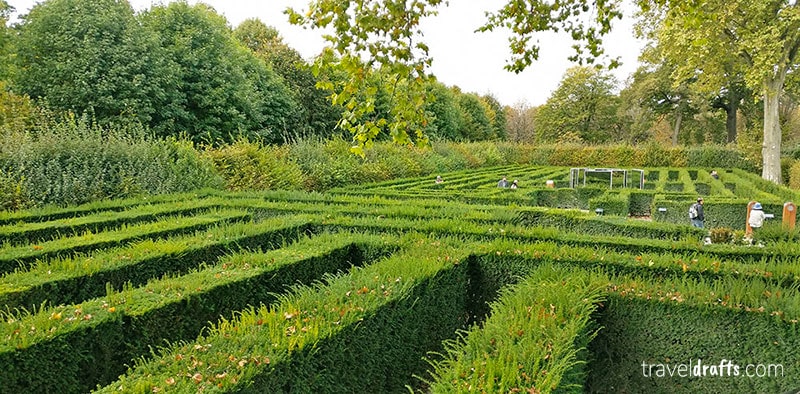
How to travel in Austria
Public transport.
#40 Due to its central location, Austria has many transport links throughout Europe, both by land and air. It is very easy to catch trains and buses to Vienna or Salzburg.
There are many air routes from all over Europe to the main Austrian cities, including low-cost flights. To search for the best option, we usually use the site rome2rio because, in addition to providing us with options with different means of transportation, it also gives us an estimate of time and price.
#41 If you can’t find any cheap flights to Vienna, we suggest you also look for Bratislava, Slovakia. The Slovak capital is located on the border with Austria, about 20km from Vienna.

#42 The best way to travel to Austria will completely depend on the type of trip you are doing. In the center of some cities, it is a bad idea to drive. For example, driving to Salzburg was a mistake we won’t make twice, and even in Vienna, we simply parked the car and never picked it up again until we left the city.
But driving through the Alps is amazing! The freedom to go wherever we want, stop wherever we want, drive on those mountain roads, and go to small lakes and natural monuments is spectacular.
#43 The public transport network in Austria is of excellent quality. Only Vienna has a metro, but the other cities have well-developed urban transport.
If you’re thinking of traveling only in urban areas, you don’t need a car as in general urban transport works quite well in practically all cities and is relatively cheap (or at least much cheaper than any other option).
Public transport is very punctual, and buying tickets in advance, in machines or kiosks, is usually necessary. As in Switzerland, train trips through the Alps are very popular because they are beautiful, but sometimes a little expensive. Buses are much cheaper, but the journey is not as exciting.

Rent a car and drive in Austria
#44 When planning your trip, ask yourself if you really need to rent a car and check if there are good alternatives. If you are planning a more urban trip, it is likely that a car is not necessary and can even become a source of costs and problems.
If you decide to travel by car, note that costs can quickly add up. If you don’t have your own car you have to:
- Rent a car – count on 200 Euros per week, at least.
- Mandatory Insurance – Nothing you can do to avoid it;
- Paying for fuel – which is very expensive in Austria;
- Pay tolls – To use motorways in Austria you have to buy a vignette at the border or at the post office. The vignette allows us to drive on any motorway during its validity period. The 10-day ticket costs around 10 Euros, which turns out to be much cheaper than in most other European countries.
- Parking – in addition to being very difficult to park in large cities and historical centers, it is quite expensive. Don’t overlook this cost.
#45 In general, driving rules in Austria are similar to those in Western Europe, so driving is not a big problem. You drive on the right, and your. The right priority rule also exists in Austria. At roundabouts, priority is given to whoever is on the roundabout, but this is practically always indicated.
Speed limits are a little more permissive than in some countries, with 130 km/h on highways, 100 km/h outside towns, and 50 km/h in urban areas, but all this is very well signposted.
Regarding driving itself, we would say that if you are used to driving at home, you can drive in Austria. Austrians are orderly people to drive, although there are also some people with less patience, especially in big cities.

Other tips for travelers to Austria
Internet in austria.
#46 All the accommodations you book should have free WIFI access, so this shouldn’t be a big concern, but we always advise you to check the comments about the signal quality.
If you want to use mobile data, you can use the data card of any European country and pay the same amount you pay in the country of origin. So, if you have data in Portugal, you have data in Austria and the rest of the EU.
Cleaning / Pollution in Austria
#47 Generally speaking, Austria is one of the cleanest countries we’ve ever traveled to. It’s not Luxembourg , but it’s close by. There are, of course, exceptions in some areas in the larger cities, but they are smaller and less severe than in most other countries.
On the other hand, in rural areas and parks, everything is exceptionally clean. Nothing to point out here. On the contrary, it is often an example to follow.

Electricity
#48 Power outlets in Austria are of type C and F, with a voltage of 230V and a frequency of 50 Hz, similar to the rest of Europe. Thus, those traveling from Europe do not need any adapters. If you come from countries with other outlets, we suggest this power adapter.
Documentation for traveling to Austria
#49 As Austria is part of the Schengen area, EU citizens do not need any special documents to travel to Austria. All you need is a valid identification document, which can be a citizen’s card or passport, and a driving license if you want to drive.
Otherwise, click here for more information on how to enter Austria and the Schengen Zone and which nationalities need a Visa.

Austria Travel Guide
#50 If you want to buy an Austria travel guide with this and all the information you need to travel, we suggest the Lonely Planet guide You can buy it by clicking here , or on the image below.
Sharing is caring!
Austria Travel Planning Guide
:max_bytes(150000):strip_icc():format(webp)/james-globe-56a3a1c05f9b58b7d0d2e4e5.jpg)
Austria is a very interesting tourist destination in Central Europe. A mountainous, landlocked country, only a third of its territory is lower than 500 meters above sea level.
Austria is in the center of some prime tourist territory ; it is bordered by Germany and the Czech Republic in the north, Hungary and Slovakia to the east, and Slovenia, and Italy to the South.
Austria has extensive rail lines. When you look at schedules, you'll see Vienna represented as Wien , the German name.
Mountainous Austria offers quite a few opportunities for scenic train routes . The Austrian Federal Railways (ÖBB) runs a network of 5700 km of rail lines. Smaller companies run lines on alpine routes. There are lines running only in the summer for tourists as well.
Below are some representative times for rail journeys in Austria to other tourist destinations. Times depend upon the speed of particular train chosen.
- Vienna to Salzburg: 3-4 hours, 159 miles
- Salzburg to Innsbruck: 2 hours, 86 miles
- Salzburg to Munich: 1-2 hours, 70 miles
- Vienna to Venice: 8-10 hours 273 miles
Resource Articles
Read up on Vienna , Salzburg, Bregenz , Villach and Hallstatt and other top Austrian travel destinations before you go. A little research can point you to the best vineyards in Vienna and its vicinity.
When visiting some of these top destinations, a tourist often takes a short tour of the city or a tour of the rural treasures found around the outskirts. Viator has a page of its top Austria tours to peruse.
The currency in Austria is the Euro . At the time the Euro was adopted, its value was set at 13.7603 Austrian Shillings.
The primary language spoken in Austria is German. Dialects are spoken throughout Austria: Wienerisch in Vienna, Tirolerisch in the Tirol, and Volarlbergerisch in Vorarlberg. In major tourist centers, English is spoken widely.
Restaurants
You'll have a wide variety of eating options, including coffee houses, heurigen (wine bars) and pubs. In general, Austria restaurant food and service is remarkably well done, and not all of it is as heavy as you might expect. Still, you can dine on traditional Schnitzel (thin cut, usually of veal, breaded and fried) and Wiener Backhendl (chicken). To test if a Wiener Schnitzel is up to par, it can be sat upon in white trousers and should not leave a grease mark. This course of action is recommended only for brave souls with unlimited resources for buying trousers.
A service charge of 10-15 percent is included in hotel and restaurant bills. Many people add 5% for good service. Attendants get a Euro or so, and taxi drivers expect 10 percent.
Rail Passes
As Austria is a small country, you might wish to purchase a rail pass for just Austria, but you might get a better deal by combining Austria and one or more other countries. A good combo is the Germany/Austria Pass Looking to go east? Try the Eurail Austria/Slovenia/Croatia Pass (Buy Direct or Get Information). A single country pass (Buy Direct or Get Information) for Austria is also available.
General speed limits (unless posted otherwise) are 50 km/h in towns, 100 km/h on highways, 130 km/h on motorways.
Driving on Austria's motorways requires the purchase and display of a " vignette " on your vehicle. Wearing seat belts is compulsory.
There are airports at Vienna , Linz , Graz , Salzburg , Innsbruck , Klagenfurt .
The weather in Austria varies with altitude. Maps are available with information on historic climate of Austria.
Vienna Guide: Planning Your Trip
How to Visit Munich on a Budget
20 Top Things to Do in Vienna, Austria
Your Trip to Innsbruck, Austria: The Complete Guide
Switzerland Travel Guide
Regensburg: Planning Your Trip
The 3 Most Beautiful Scenic Train Routes in Austria
Prague: Planning Your Trip
Black Forest Guide: Planning Your Trip
Getting Around Frankfurt: Guide to Public Transportation
Your Trip to Berlin: The Complete Guide
France Travel Planner for Every Vacation
Altaussee Salt Mines Guide | The Mountain of Treasures
France Guide: Planning Your Trip
Your Trip to Switzerland: The Complete Guide
Your Trip to Minneapolis: The Complete Guide

Austria Travel Guide
This Austria Travel Guide aims to provide you with simple and stress-free travel planning information and inspiration for planning a trip to Austria.
On this regularly updated page you will find links to useful posts on The Trusted Traveller, budget information, details on types of accommodation available, information on getting around the country and more useful links to resources around the web.
Quick Facts
Capital: Vienna
Language: German
Currency: € Euros which is made up of 100 cents. Coins come in 1c, 2c, 5c, 10c, 20c, 50c, €1 and €2 denominations and notes in €5, €10, €20, €50, €100, €200 and €500 denominations.
Electricity: 230 volts AC, 50Hz. European plugs with two round pins are standard.
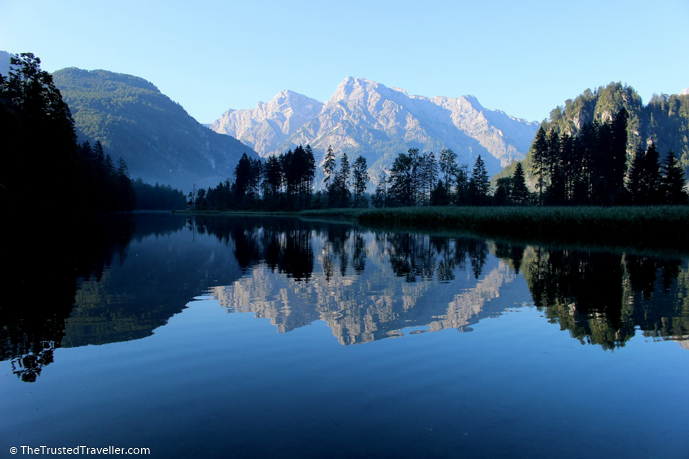
Travel Tips
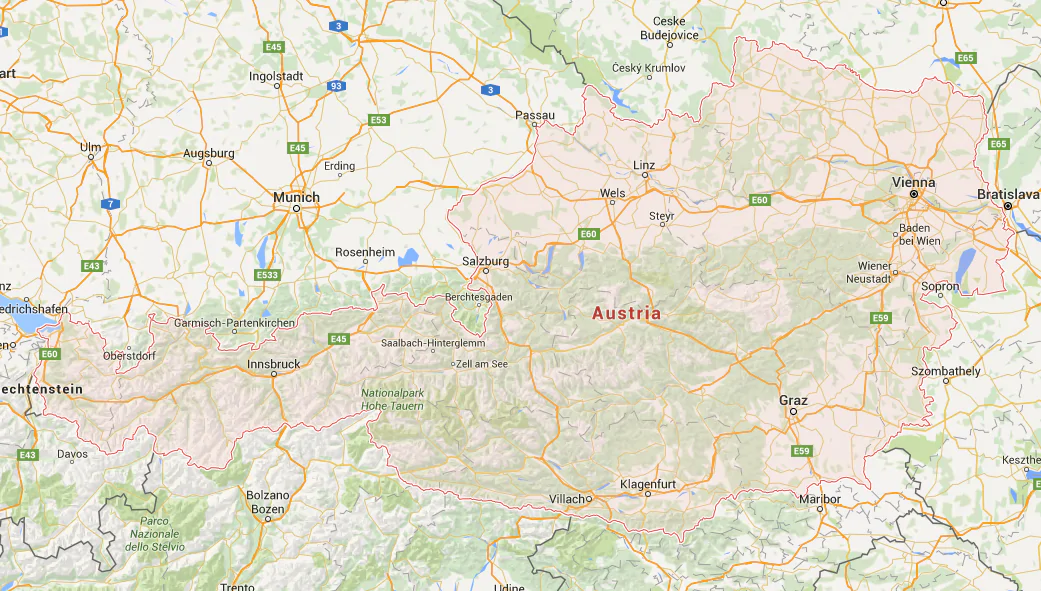
Austria is a small landlocked country right in the heart of Europe bordered by Czech Republic, Germany, Hungary, Italy, Liechtenstein, Slovakia, Slovenia and Switzerland.
The landscape is mountainous with the Alps running right through the country and peaks rising up to over 3,500 metres. Almost half of Austria is forested while the other half is mainly lush green grassland.
Austria has a moderate continental climate which brings warm summer days with cool night and cold sunny winters with lots of snow during the ski season of December to March.
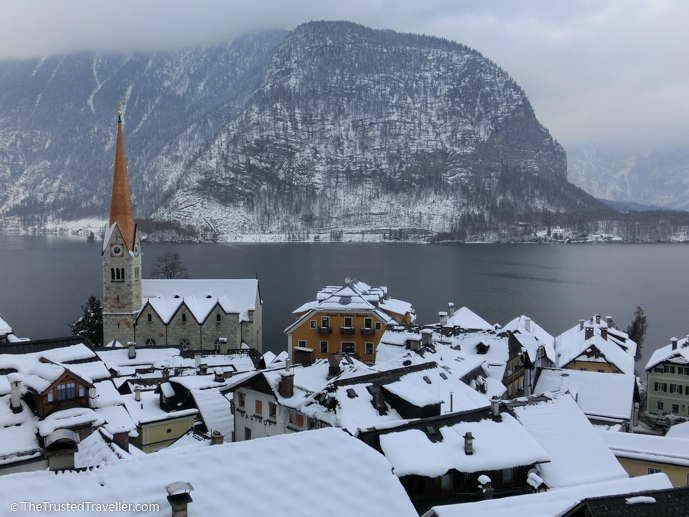
Best Time to Visit
Austria is a year-round destination and you should plan your visit based on the types of activities you wish to enjoy.
June to September (summer) sees lots of sunshine and low rainfall making it the perfect time for hiking in the mountains and exploring the bigger cities.
From November to March (winter) it is cold with plenty of snow, perfect for those wanting to take part in winter sports such as skiing. It is also a nice time of year to visit some of the smaller villages on the edge of the Alps because of the festive spirit and spectacular scenery.
It is always recommend to have a mixture of cash and bank/credit card with you when you travel anywhere in the world and this is no exception in Austria.
In Austria ATM’s are called Bankomats and are found in all major towns and cities across the country. As well, credit cards are widely accepted although some establishments such as small hotels and shops may only accept cash.
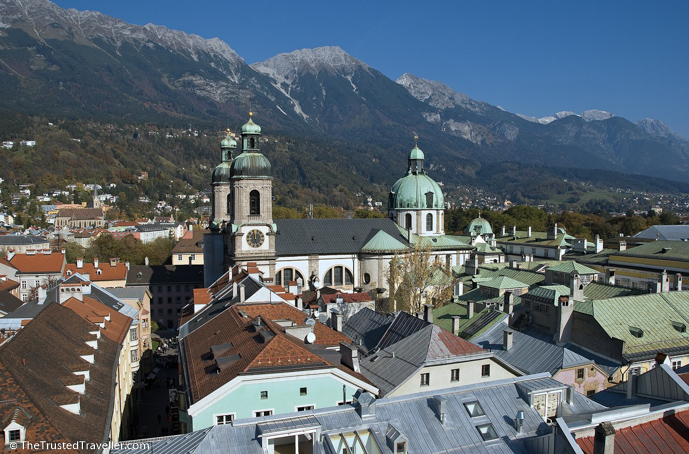
Getting There
Getting to Austria from surrounding European countries is simple, quick and cheap by bus or train. You can find out more about rail travel in Europe, including purchasing tickets, on the Rail Europe website; and about bus travel on the Eurolines website.
Austria is also well-connected by air with flights arriving in Vienna, Innsbruck and Salzburg from all across Europe and the UK and parts of the US, Middle East and Asia. A flight from London will take around two hours and a flight from New York about nine hours.
I use and recommend Expedia for researching and booking flights all around the world.
It is also possibly to arrive by boat along the Danube River from Germany , Hungary and Slovakia .
Getting Around
Austria is a relatively small country so getting around it is pretty simple and cheap.
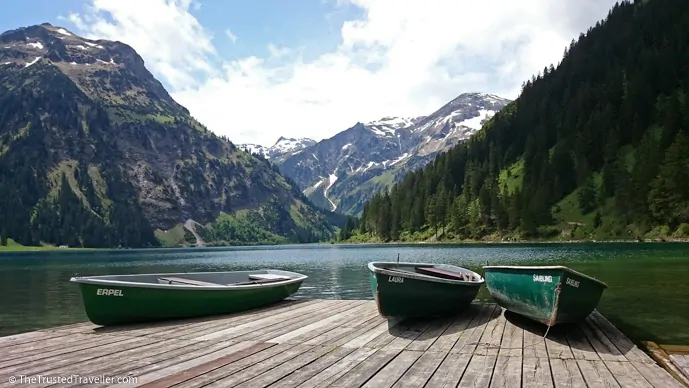
Europe’s excellent network of trains means that getting around Austria and in fact to/from other European countries is the most timely and cost-effective way to travel. All the major cities are connected to one another and you will find that most regional areas are well-connected to at least one of two of those major cities.
Because of Austria’s proximity to the Alps, some of the world’s most scenic train journeys can be taken through the country too making it more than just a means to get from point a to point b.
There are two classes on the trains, 1st and 2nd class, with the only real difference being slightly more leg space and room to move about in 1st class.
Most trains you can just show up at the train station and buy your ticket on the day while a few (mostly high-speed intercity trains) may need a seat reservation to be made in advance. This can be done either at any train station in the country or online through a ticketing agent in your home country. Here are a few that I recommend depending on where you are from:
- Rail Europe for residents in USA, Canada & Mexico.
- Rail Europe for residents in Australia, New Zealand, UK, Europe and other select parts of the world.
Eurolines operates services bus services around the country and they are a cheaper alternative to train travel but will take longer to get from a to b.
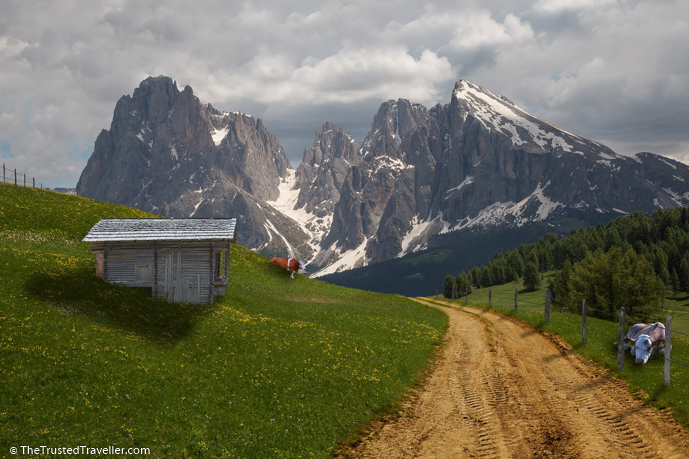
Because Austria is a small country, it is relatively easy to navigate if driving yourself.
You’ll be able to collect a hire car from all major airports and cities with most allowing you to pick up in one location and drop off in another, which makes sense if you’re road tripping around the country.
The road in Austria are well maintained and easy to navigate because they are well signposted. During the winter months remember that weather conditions can change rapidly especially on roads going through the mountains. Be sure to obey all signs and drive with care in slippery conditions.

Where to Stay
Austria caters for everyone when it comes to accommodation. Here is a list of the types of accommodation you’ll find:
- Camping/Cabins – With Austria being a very outdoorsy country you’ll find lots of camp grounds that offer tent sites and basic cabins as low costs. And as with a lot of other European cities, you’ll also find large camp sites on the outskirts of big cities like Vienna that you can stay at cheaply and commute each day into the city for sightseeing.
- Hostels – You’ll find hostels in abundance in the Austria’s bigger cities and one or two in most other regional areas as well. The level of cleanliness in Austria and similar parts of Europe is well above average so you will likely find your room and shared bathroom to be super clean.
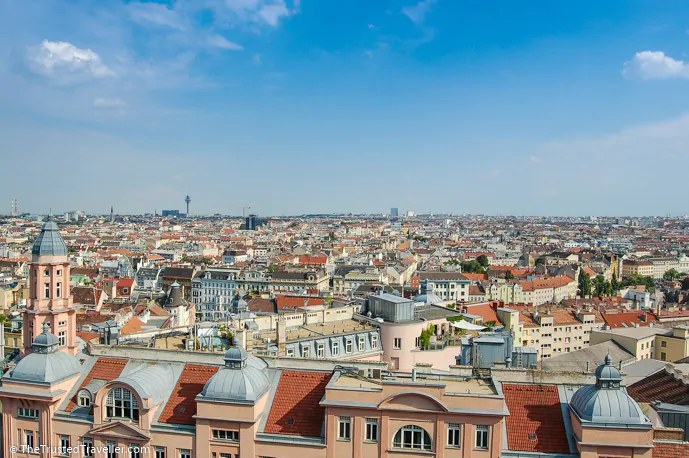
- B&B’s/Pensions – Small family run style accommodation like B&B’s or pensions can be found all over the country in big cities, small towns and popular rural locations. Accommodation is simple yet comfortable and the experience usually comes with friendly hosts and a home cooked breakfast each morning.
Get up to $45.00 AUD credit when you join Airbnb using this link .
- Hotels/Apartments – You will find both chain hotel/apartments brands and independent hotel/apartments to be in abundance in cities across the country. The good thing about this type of accommodation is in most cases you know what you are going to get, a clean, comfortable and modern room with a decent array of facilities in the room and on the property. Apartments are great for longer stays as they allow you a bit more space and the option to self cater.
I use and recommend Booking.com for researching and booking hostel, motel, hotel, apartment and resort accommodation around the world.

- Luxury Hotels & Resorts – Austria has its fair share of 5 star properties, some of which have been named in top lists of accommodation around the world. These will offer you brilliant service and a top location, sometime with incredible views of the surrounding area.
Austria has a variety of eating options that will suit all budgets and tastes. While you will find the majority of its restaurants and cafes serve local and European dishes, the country is expanding and becoming more multicultural with its cuisine offerings.
- Supermarkets/Markets – Save money and shop in supermarkets and local markets for snacks, picnic lunches and even ingredients to make a whole meal in your self catering accommodation.
- Fast Food / Take-away – Chain fast food stores are in all major centres of the country and along highways as well. If you’re looking for a cheap and tasty fast food meal, look to where the locals are, usually getting snacks and light meals from food trucks and stands on the side of the street. A popular street food snack is a sausage or hot dog and you’ll find stands selling them everywhere.
- Cafes – Austrian’s love cafes and some of the world’s most well know can be found in the country. Coffee, delicious sweets and tasty Austrian sandwiches will be on offer for sit down or takeaway.
- Restaurants – Portion sizes tend to be on the larger side in Austria so eating out in restaurants can be really good value. Consider sharing a meal with a travel companion if you’re not too hungry to save money or sticking to one course.
- Fine Dining – Austria has it’s fair share of the worlds best restaurants so if it is fine dining experiences you are after then you won’t be disappointed.

Useful Austria Posts
Suggested itineraries.
Exploring Austria by Car: A 5 Day Itinerary
First Timers One Month Europe Itinerary
Things to Do
Things to Do in Salzburg
Other Austria Travel Planning Resources
Here is a constantly growing collection of resources from around the web to help you plan you dream trip to Austria.
- The official Austria Tourism website is a great place to start planning your trip.
- The authority in all things travel, Lonely Planet has an extensive section all about Austria. Or why not buy the Austria Lonely Planet Guidebook in hard copy or as an eBook.
- Carly is an Aussie expat living in Vienna who writes all about life in Vienna, her travel across Austria and the rest of Europe on her blog Austrian Adaptation .
- Becki from Borders of Adventure spent most of 2017 discovering the best of Austria. You can read all about her adventures on her blog.
- Travel Tyrol is a blog by Linda who loves living in Austria and wants to share it with the world.
Leave a Comment Cancel reply
This site uses Akismet to reduce spam. Learn how your comment data is processed .
Travel Guide Austria
Book your individual trip , stress-free with local travel experts
- roughguides.com
- Travel guide
- Local Experts
- Travel Advice
- Accommodation
Glorious Alpine scenery, monumental Habsburg architecture, and the world’s favourite musical – Austria’s tourist industry certainly plays up to the clichés. However, it’s not all bewigged Mozart ensembles and schnitzel; modern Austria boasts some of Europe’s most varied museums and contemporary architecture not to mention attractive and sophisticated cities whose bars, cafés and clubs combine contemporary cool with elegant tradition.
Where to go in Austria
Tailor-made travel itineraries for austria, created by local experts.
_listing_1640546826392.jpeg)
15 days / from 6264 USD
Capitals of Europe - Berlin, Prague, Vienna and more
This trip is ideal for all city & culture lovers: the Reichstag in Berlin, the castle in Prague, historical Cesky Krumlov, St Stephen's Cathedral in Vienna, the fortress above Salzburg and Schloss Neuschwanstein near Munich - these are just some of the highlights of this incredible roundup trip.
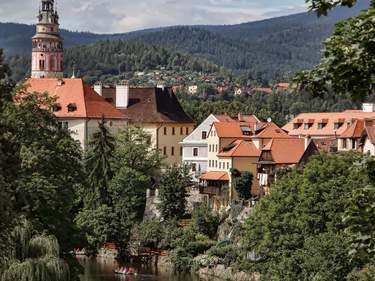
11 days / from 4212 USD
Castles across Austria and Czechia
Austria and Czechia are home to some of the world's most beautiful architecture and culture gems, such as Schloss Schönbrunn in Vienna, Prague castle, the fortress above Salzburg and many more. Finish your tour with a visit to Schloss Neuschwanstein before flying out of Munich.
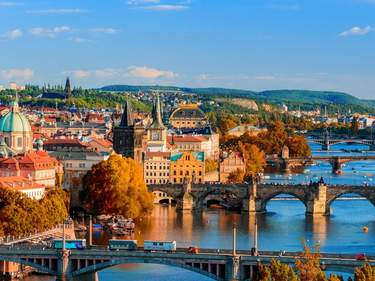
11 days / from 3510 USD
Exclusive trip to Prague and Austria
Explore the main highlights of Central Europe: fascinating Prague & historical Cesky Krumlov, the highlights of Vienna, Salzburg and Innsbruck in Austria and then further on to Germany - get in the Disney spirit at Schloss Neuschwanstein.
Tailor-made trips for Austria
- Population 8.47 million
- Language German
- Currency Euro (€)
- Capital Vienna
- International phone code t 43
- Time zone GMT +1hr
Long the powerhouse of the Habsburg Empire, Austria underwent decades of change and uncertainty in the early twentieth century. Shorn of her empire and racked by economic difficulties, the state fell prey to the promises of Nazi Germany. Only with the end of the Cold War did Austria return to the heart of Europe, joining the EU in 1995.
Politics aside, Austria is primarily known for two contrasting attractions – the fading imperial glories of the capital, and the stunning beauty of its Alpine hinterland. Vienna is the gateway to much of central Europe and a good place to soak up the culture of Mitteleuropa .
Less renowned provincial capitals such as Graz and Linz are surprising pockets of culture, innovation and vitality. Salzburg , between Innsbruck and Vienna, represents urban Austria at its most picturesque, an intoxicating Baroque city within easy striking distance of the mountains and lakes of the Salzkammergut , while the most dramatic of Austria’s Alpine scenery is west of here, in and around Tyrol , whose capital, Innsbruck , provides the best base for exploration.
If you are looking for great travel experiences in Austria while avoiding the crowd, check out our tips here.

Without a visit to Vienna you’ll return home with only half the picture. Built on a grand scale as seat of the Habsburg Empire, it’s a place that positively drips with imperial nostalgia.The pickings are rich, with the old palaces of the Hofburg and Schönbrunn high on the list, as are the cultural offerings from the gargantuan art collections of the Kunsthistorisches Museum to the new cultural complex of the MuseumsQuartier.
Equally compelling, nowadays, are the ghosts of Vienna’s golden age at the end of the nineteenth century, when the likes of Freud, Klimt, Schiele and Schönberg frequented the city’s cafés.The city boasts some wonderful Jugendstil and early modernist buildings and a bevy of traditional fin-de-siècle cafés patrolled by waiters in tuxedos. Last, but by no means least,Vienna is by far the best place in the country for night- life, and that means everything from top-class opera to techno.
Salzburg is no less intoxicating. Its Altstadt contains the country’s most concentrated ensemble of Baroque architecture, and the Hohensalzburg fortress is arguably the country’s most impressive medieval castle. A substantial musical pedigree is ensured by the city’s status as the birthplace of Mozart and venue of the Salzburg Festival, one of the world’s most renowned celebrations of classical music and theatre.
Of Austria’s other regional capitals, Innsbruck combines both a buzzing 9 nightlife and close proximity to some of the Tyrol’s highest peaks to make it one of Austria’s most popular destinations. Its attractive and largely medieval city centre focuses on the Hofkirche, site of the memorial to sixteenth-century Habsburg strongman Emperor Maximilian I.
In the Styrian capital, Graz, the main attractions are the Altstadt, the fine-art collections of the Landesmuseum Joanneum and the Baroque Eggenberg Palace. Austria’s second largest city is also a good base from which to venture out into the vineyards and pumpkin fields of the rural southeast.
Top image: Hallstatt village © Rastislav Sedlak SK/Shutterstock
Travel advice for Austria
From travel safety to visa requirements, discover the best tips for traveling to Austria
- How to get to Austria
- Culture and Etiquette in Austria
- Eating and drinking in Austria
- Getting around Austria: Transportation Tips
- Sports and Outdoor activities in Austria
- Travel Tips Austria for planning and on the go
- Best time to visit Austria
The Rough Guides to Austria and related travel guides
In-depth, easy-to-use travel guides filled with expert advice.

Find even more inspiration here

Planning your own trip? Prepare for your trip
Use Rough Guides' trusted partners for great rates
written by Rough Guides Editors
updated 9.07.2021
Ready to travel and discover Austria?
Get support from our local experts for stress-free planning & worry-free travels.
- Where to stay
- Travel advice

Austria Travel Guide
Looking for an in-depth Austria travel guide ?
Then you’re in the right place!
Nestled amidst the majesty of the Alps, this gem of Central Europe is a symphony of sparkling lakes, enchanting forests, and mountain vistas that will captivate your spirit and invigorate your senses.
Austria is a destination that is as diverse as it is beautiful. From the cosmopolitan allure of Vienna, a city bathed in the echoes of Mozart and Klimt, to the baroque architecture of Salzburg, the birthplace of Mozart himself.
Visit Innsbruck, where urban and alpine worlds merge seamlessly, or stroll through the charming, cobbled streets of Graz.
Each corner of Austria offers a unique tableau of experiences waiting to be discovered. This guide will offer you a peek behind the velvet curtains of Austria, providing tips to traverse its iconic landscapes, explore its vibrant cities, indulge in its world-class culinary offerings, and immerse yourself in its unique traditions.
Whether you’re a lover of the arts, an outdoor enthusiast, or a history aficionado, Austria is a country that promises to leave you with an unforgettable travel tapestry of your own.
So tighten your hiking boots or polish your opera glasses, because an Austrian adventure, brimming with magnificent sights, sounds, and tastes, awaits.
Ready to book? Keep reading to dive into resources that will help you with planning a trip to Austria in Europe .
Note: This ultimate guide to Austria travel contains affiliate links to trusted partners!

Map Of Austria
Use this Austria travel map to begin planning your trip to this incredible country!
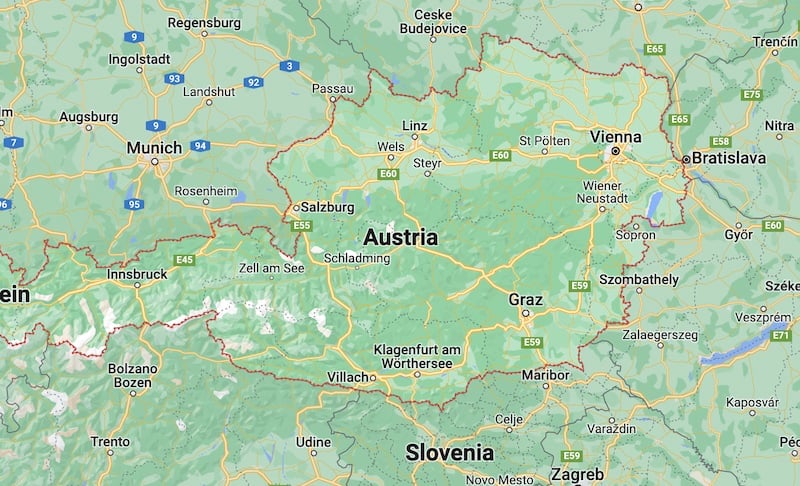
Click here for an interactive Google Map version of the above graphic.
Plan an unforgettable trip to Austria with the following guides!
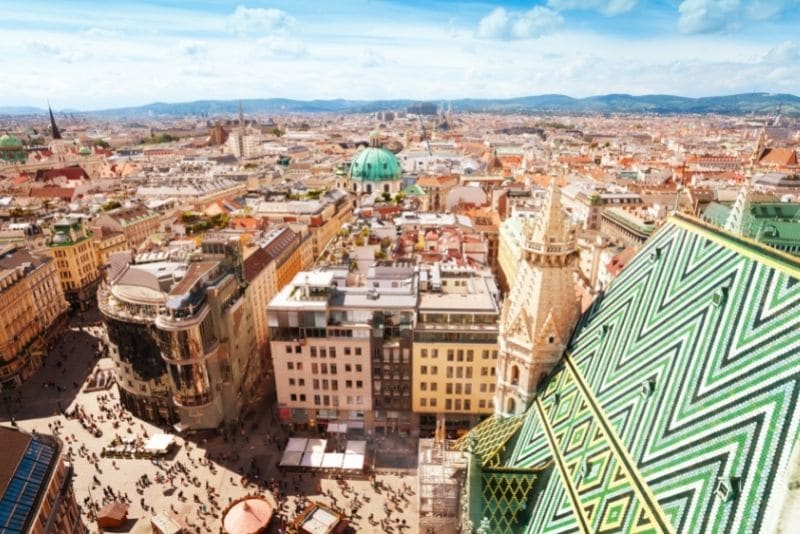
Solo Travel In Vienna: How To Have An Amazing Trip Traveling Alone
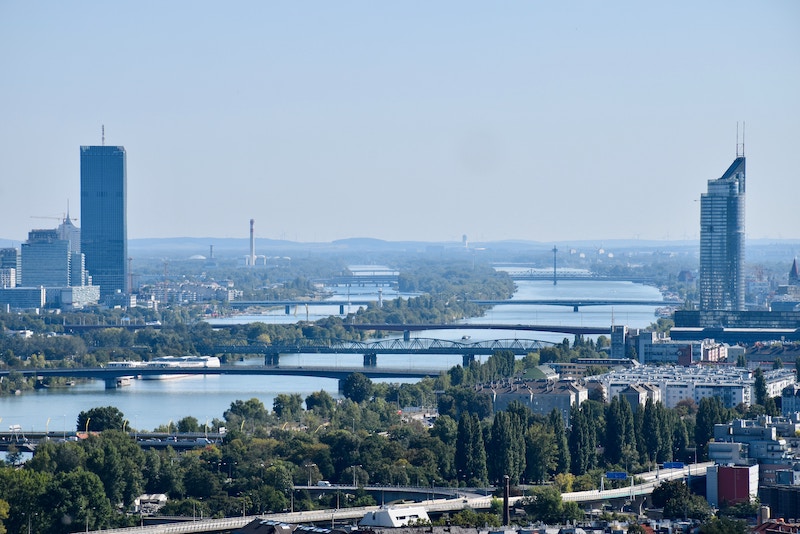
4 Day Vienna Itinerary (With Map!)
Europe Travel Tips
The following Europe travel advice can help you plan the perfect trip!
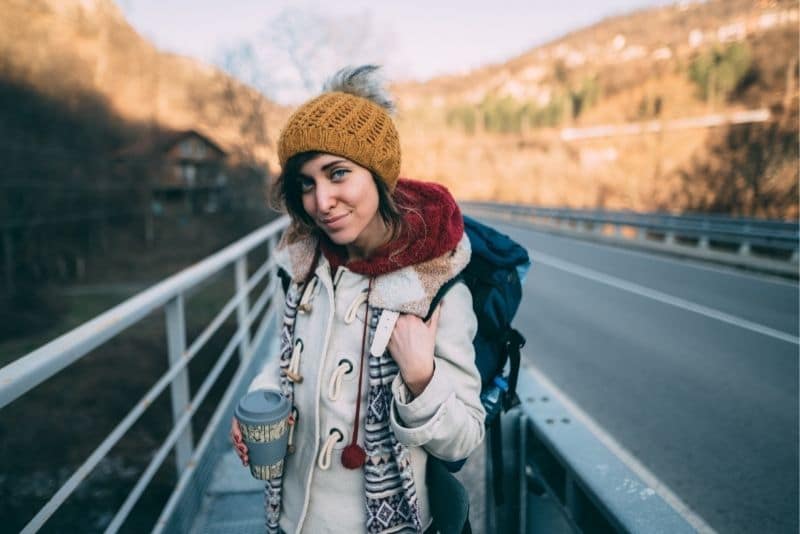
19 Best Places To Travel Alone In Europe
Best Austria Tours
Explore local culture with a Austrian tour guide through these unique excursions:
- The Original Sound of Music Tour in Salzburg
- Hallstatt and Alps Day Trip from Vienna with Skywalk
- Bavarian Mountains including Eagle’s Nest & Salt Mines from Salzburg
- Melk Abbey and Danube Valley Day Trip from Vienna
- Vienna’s Highlights: Food, Coffee & Market Walking Experience
Click here for a full list of Austria travel tours!
Renting A Car In Austria
Need a rental car for your Austria trip? Use Discover Cars to quickly compare your car rental options.
Austria Train Travel
Getting around Austria by train, bus, or ferry? Omio is a must! I use this tool for all of my public transportation needs when traveling Europe.
The site is straightforward and user-friendly — and you can pre-book your tickets in advance at a discount. They even offer flight and car deals!
Austria Hotels
Click here to browse the best Austria travel hotels!
Prefer self-contained stays?
Click here to check out unique local rentals!
You can also use this map to search for local stays. It’s currently set to the Innere Stadt district of Vienna, but you can easily change it to your preferred destination:
Austria Travel Insurance
When visiting Austria — or any other country in the world — make sure to get travel insurance to protect your health and safety.
In my opinion, the best travel medical insurance for travelers is SafetyWing as they’ve got a large network and offer both short-term and long-term coverage — including coverage if you’re traveling for months as well as limited coverage in your home country).
Additionally, SafetyWing is budget-friendly and offers $250,000 worth of coverage with just one low overall deductible of $250.
With coverage, you’ll have peace of mind as you embark on your Austria travel itinerary.
Click my referral link here to price out travel insurance for your trip in just a few clicks .
Austria Travel Guide FAQ
Below, find answers to frequently asked questions about traveling in Austria .
Q: What is the best month to go to Austria?
The best time to visit Austria largely depends on the activities you’re interested in. For skiing and winter sports, December to March are ideal, while for hiking, sightseeing, and enjoying the beautiful landscapes, the milder weather in late spring to early autumn, particularly May through September, is preferable.
Q: How many days do you need for Austria?
An ideal trip to Austria, covering key destinations like Vienna, Salzburg, and Innsbruck, would typically require around 7 to 10 days. However, if you wish to explore more thoroughly, including smaller towns, natural landmarks, or engaging in activities like hiking or skiing, you may want to consider extending your stay to two weeks or more.
Q: Is it expensive to vacation in Austria?
While the cost can vary depending on your travel preferences, Austria is generally considered a moderately expensive destination. Major cities like Vienna and Salzburg can be pricier, particularly for dining and accommodation, but with careful planning, such as utilizing public transportation and choosing affordable eateries, it’s possible to manage expenses.
Q: What are some travel tips for Austria?
When in Austria, try to learn a few basic phrases in German, as it’s the country’s official language and locals appreciate the effort. Also, use public transportation, particularly the efficient train system, to get around major cities and even between towns. Finally, while Austria is famous for its cities, don’t forget to explore the countryside, where you can enjoy scenic hikes, charming villages, and renowned vineyards.
Q: Is it safe to travel in Austria?
Yes, Austria is generally considered a very safe country for travelers, with low crime rates and high levels of safety in both urban and rural areas. However, as with any travel destination, it’s advisable to stay alert, especially in crowded places, and always secure your belongings.
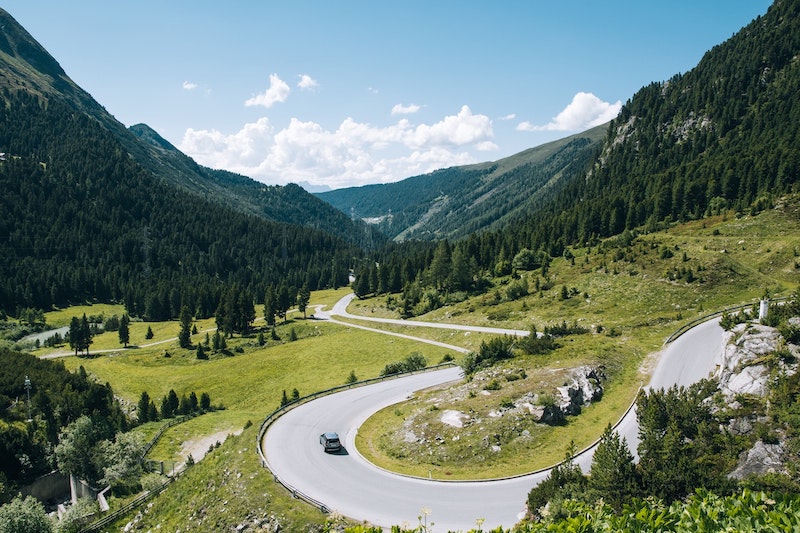
Q: How long can a tourist stay in Austria?
Travelers from many countries, including the United States, Canada, Australia, New Zealand, and many European countries, can stay in Austria without a visa for up to 90 days within a 180-day period. For longer stays or if you’re from a country not covered by this rule, you may need to apply for a visa. Always check the most recent visa regulations before your travel.
Q: Where is Austria?
Austria is located in Central Europe, bordered by eight countries: Germany and the Czech Republic to the north, Slovakia and Hungary to the east, Slovenia and Italy to the south, and Switzerland and Liechtenstein to the west. Its landscape is largely defined by the Eastern Alps.
Q: Are credit cards accepted in Austria?
Yes, credit cards, particularly Visa and MasterCard, are widely accepted in Austria, especially in urban areas, hotels, and most restaurants. However, it’s always a good idea to carry some cash for smaller establishments, particularly in rural areas or local markets, where card payment may not always be possible.
Q: Can you drink the tap water in Austria?
Yes, tap water in Austria is of very high quality and is safe to drink. In fact, much of the country’s tap water comes directly from spring water sources in the Alps, making it some of the cleanest and freshest water you’ll find.
What would you add to this Austria travel guide?


The ultimate Austria travel guide: the best things to do and see
The best trips to Austria are multi-sensory adventures that include transporting music, intriguing history, delicious cakes , and postcard-worthy nature. This small Central European country may not have the same travel reputation as its more popular neighbors like Italy and Switzerland, but Austria—often considered one of the best countries to live in—is just as culturally rich. Read on to learn more about the best things to do in Austria, what to see in Austria, the best time to visit Austria, and much more.
The best time to go Cities to visit What to see What to eat and drink What to do Souvenirs to buy What to pack
Currency: Euro
Language: German (but English is widely spoken)
UNESCO sites: Austria is home to 12 UNESCO World Heritage Sites, including the historic cities of Salzburg and Vienna. Schönbrunn Palace and the 25-mile Semmering railway are also two top things to see in Austria.
Best way to get around: Transportation into and within Austria is fantastic. Vienna, its capital, has a major international airport that connects to many of the world’s biggest cities, and an extensive train network makes traveling all over the country that much easier. Metros and trams are regularly used in the bigger cities; while most Austrians are very comfortable riding their bikes to quickly zip around town. Because the Danube River runs through most of Austria, enjoying a river cruise is also one of our favorite Austria travel tips.
Fun fact: Austria borders eight European countries: Germany, the Czech Republic, Slovakia, Hungary, Slovenia, Italy, Switzerland, and Lichtenstein. What does this mean for travelers? Well, if you’re wondering how to plan a trip to Austria, you may want to consider a multi-country European tour. It would be very easy to partner a tour of Austria with any of the countries above, plus other wonderful destinations in Europe.

Explore our tours

4.7 out of 5 stars

4.6 out of 5 stars
More travel inspiration


Austria was once part of a mighty empire, which the Habsburgs ruled over from Vienna for some seven centuries. Although Austria today is just a fraction of its former glory, it still maintains its rich cultural and artistic heritage. Vienna is one of Europe’s most attractive cities, combining historic sites with a vibrant creative scene. The city is justifiably famous both for its classical music pedigree and for its elegant grand balls. With two-thirds of the country’s landscape shaped by the Alps, Austria is paradise for anyone eager to explore the mountains—or nature in general. Some of the world’s top ski resorts can be found in the western part of the country. The regions around the Danube, as well as south of Vienna, are known for their many family-run wineries. Austria is also a leader in the farm-to-table movement, and has over 20% of its agriculture, and more than 20,000 farmers, committed to organic farming.
- Copy Link copied

Shutterstock
When’s the best time to go to Austria?
Temperatures in spring and fall are usually milder, making it a great time to visit. Winter sports are a major draw to the resort towns in the Austrian Alps, and the skiing is consistently ranked as some of the best in the world. The season lasts from December through late March. Vienna and Salzburg tend to be more crowded in July and August, and during major festivals. Temperatures vary by region and elevation, but averages do not climb above a comfortable high 70s in Vienna during summer.
How to get around Austria
Vienna can be reached via direct flights from several North American cities, including New York (JFK and Newark), Washington D.C., Miami, Chicago, and Toronto, though it is often practical to fly through Munich or Zurich—especially for a trip to Austria’s western provinces. Smaller airports in cities like Salzburg, Graz, Klagenfurt, and Innsbruck can be easily reached. High-speed trains connect Vienna and Salzburg with cities like Munich and Zurich. A hydrofoil travels between Bratislava and Vienna on the Danube. U.S. visitors can stay up to three months with just a passport, after which time a visa is required. If you are entering Austria using a rental car, make sure there is a Vignette (toll sticker) affixed to the windshield.
Cities in Austria are linked by a fast and efficient rail system, with Vienna to Salzburg taking as little as two-and-a-half hours. To explore large towns and cities, public transportation (bus and tram), biking, or walking is best. Driving on Austria’s highways requires a toll sticker—available in ten-day, two-month, and twelve-month increments—which can be purchased at gas stations, post offices, auto clubs, and even in neighboring countries. Renting a car is another great way to explore rural regions and high Alpine routes.
Food and drink to try in Austria
Austria’s cuisine reflects heavily on its imperial past, with influences from Hungary, Italy, and the Balkans. Classic dishes like Tafelspitz (beef, root vegetables, and sauerkraut), Wiener Schnitzel (veal cutlet, flattened and fried), and Gulasch (rich meat stew, often with paprika) can be found throughout the country, while every region is proud of their speciality dishes. But, let’s face it, the major food draw is really the delectable cakes and pastries, including the famous apple strudel and Sachertorte. You’d be forgiven for not knowing that Vienna is the only world capital producing significant quantities of wine within its city limits. White wines dominate the vineyards of the Wachau Valley, while reds prevail in Burgenland and Styria.

Culture in Austria
Some consider Vienna the cultural capital of Europe. The city has been synonymous with the music of Mozart, Beethoven, and Strauss, to name a few, as well as painters like Klimpt. Elegant balls, nights at the Vienna State Opera (one of the world’s best), and hours spent in coffeehouses are quintessential Vienna. The 640-year legacy of the Habsburg dynasty, which officially ended in 2011 with the death of Otto von Habsburg, can be found throughout the city. Oh, and let’s not forget the Boys Choir. Austria has nine inscriptions on the UNESCO World Heritage List: Schönbrunn Palace in Vienna, the Historic Center of Vienna, Wachau Cultural Landscape, Prehistoric Pile Dwellings around the Alps, Historic Center of Salzburg, Hallstatt-Dachstein/Salzkammergut Cultural Landscape, Graz Historic Center and Eggenberg Palace, Fertö/Neusiedlersee Cultural Landscape, and the Semmering Railway.
The year waltzes in with Vienna’s Ball Season in January and February, during which time “Fasching,” Austrian Carnival, also begins. The world famous Salzburg Festival takes place July–August, culminating with a performance of Hugo von Hoffmannsthal’s Everyman. Summer sees a variety of music festivals, from classical to rock (Nova Festival) to avant-garde (Styrian Fall), as well as wine festivals extending into the fall. Austria’s Christmas markets round out the year. Vienna alone lights up with 20 official Christmas markets selling seasonal gifts, decorations, and sweets.
Local travel tips for Austria
Austria has nine provinces: Vienna, Burgenland, Lower Austria, Upper Austria, Salzburg, Styria, Carinthia, Salzburg, Tyrol, and Vorarlberg. While German is the official language, there are regional dialects that German speakers from outside may have trouble understanding. In some cases, totally different words are used. The German Krankenhaus, for example, is Spital (hospital), and a Brötchen is a Semmel (roll). But language shouldn’t be an issue; English is widely spoken. Austria is a parliamentary democracy, and its national holiday falls on October 26—a day of free entry to state museums and many government buildings.
Related video
Guide Editor

Austria Travel Guide
Alpine villages, crystal-clear lakes, mountain hikes, and delicious cuisine await you in this charming European destination.
Best time to visit Austria
Travel insurance for austria, best places to visit in austria, tyrol, austria: best things to do in kaiserwinkl, map of austria, weather in austria.
You can enjoy Austria’s beauty in every season. Summers are warm and sunny, perfect for outdoor activities. Fall brings colorful foliage and wine harvests, whereas winters are snowy, perfect for skiing. And spring blooms with fresh greenery.
How to Travel Cheap
How to plan a trip.
- Find Hotels via Booking.com
- Find Hostels via Hostelworld
- Find a Rental Car via Sunny Cars
- Find Cheap Flights via Skyscanner
- Get a Travel Insurance via Heymondo
- Book Tours & Attractions via Viator
- Book a Bus/Train/Transfer via 12Go
- Get a Visa via iVisa
- How to pack light for your trip
- How to plan your trip our tips
Why is Austria worth visiting?
Austria is a great travel destination with sky-high mountains perfect in either season, tranquil scenery, and incredible cuisine. From hiking, biking, skiing, or roaming through its Alpine villages, there are many things to do in Austria .
Is Austria cheap to visit?
Austria is a slightly more expensive destination to visit in Europe , though there are plenty of free activities. Expect to spend about $50 – $70 per day (budget) or $100 – $150 (mid-range), including accommodation, meals, transport, and activities.
Can I drink tap water in Austria?
Yes! Tap water is perfectly safe to drink in Austria. Stay hydrated by filling up a reusable water bottle on the go – a great way of traveling more sustainably.
Do I need a visa for traveling in Austria?
Most countries can travel visa-free for up to 90 days in Austria, as it’s within the Schengen area. As always, check your country’s travel requirements before traveling and make sure your passport is valid for at least 6 more months.
What language do they speak in Austria?
German is the official language of Austria, though the pronunciation often differs from its neighbor. Some Austrians also speak Croatian, Slovenian, or Hungarian, and most have a high proficiency in English, too – making it easy to connect with the locals!
Do I need travel insurance for Austria?
Travel insurance is your safety net for all your adventures in Austria, ensuring you have peace of mind while traversing its mountains and many beautiful lakes. It protects you against unexpected events, whether it’s lost luggage or an accident.
What power plug type does Austria have?
Austria uses two common European plug types: Type C and Type F. Type C is the plug with two round pins, and plug F has two round pins and two earth clips. Bring an adapter to stay connected during your trip.
Why do people love Austria?
There are so many great places to visit in Austria, from historic cities like Vienna to the stunning Alps. Soak up the Austrian culture , known for enjoying life, lots of art, strong coffee, lots of outdoor activities, and sports.
Travel to Austria
Traveling in Austria is like stepping into a live fairytale. Discover Vienna’s stunning palaces, where history always stands at the center, or visit Salzburg, the birthplace of world-famous composer Mozart and full of charming streets and lush gardens. Apart from beautiful cities, the natural scenery in Austria beckons many visitors. The Austrian Alps make a playground for many adventurers, with breathtaking vistas and thrilling outdoor activities. Spend your summer days hiking many trails between the bright green hills and lush forests, or visit in the wintertime to race down the slopes with skis.
How to Plan Your Trip to Austria
Follow our Austria travel guides to plan the perfect trip, either in summer or winter! Whether you’re looking to find hidden trails between the mountains of Tyrol, relax at peaceful lakes, or stroll through historic cities like Vienna, we’ve got you covered. Explore all the best places in Austria , or check out our complete guide to Kaiserwinkl .
Best Time to Visit Austria
Full of enchanting landscapes and many cultural treasures, Austria makes a great travel destination year-round. Whether you’re looking for the stunning colors of summer or winter wonderland, Austria offers it all.
Summers: The best time to visit Austria when you want warm weather , luscious scenery, and nature in full swing is from June to August. Austria blooms in various colors during this time, with Alpine meadows full of wildflowers and crystal-clear lakes perfect for swimming. Lazily roam through the little villages, cycling or hiking between the majestic Austrian Alps. Many outdoor events also take place during this time, from live concerts to vibrant open-air markets, giving the country lots of energy.
Winter: If you’re a snowsporter, visit between December and February, when thick snow blankets the land. During this time, Austria transforms into a real-life snow globe. Cities fill up with atmospheric Christmas markets, and some of Europe’s finest slopes (in the Austrian Alps) are open. Cozy up in mountain chalets, savoring après-ski delights, and head out onto the icy runways.
Mountains and Lakes
Austria is full of natural wonders that all create a stunning canvas of diverse landscapes. The Alps, with towering peaks and lush valleys, are the perfect playground for outdoor lovers. During the summer, this makes a great addition to your Austria holiday if you want to do some hiking, biking, rafting, or swimming.
Wander through the many forests and meadows, and visit dramatic national parks with canyons and pristine rivers. The Danube River Valley, for example, unfolds in beauty, ideal for bike rides or picturesque cruises. Wildlife thrives in these parts, and Austrian forests see deer, ibex, and golden eagles.
In the winter, the climate transforms Austria into a snowy landscape, offering world-class ski resorts in Tyrol , Salzburg, and Vorarlberg with great slopes and exciting descents. The quaint mountain villages become cozy retreats, where hearty meals and warm glühwein await after your day out in the snow.
Food, Culture, and Religion in Austria
Austria’s cuisine, culture, and diverse religion prove the country has a rich history. Around every corner, you learn something new. One of the best things to do in Austria is to explore its rich traditions, flavors, and beliefs.
Cuisine: From the iconic ‘Wiener Schnitzel’ to heavenly desserts like ‘Apfelstrudel’ and ‘Sachertorte’, there is a lot to try in Austria when it comes to food. Though sometimes rather meat-heavy, there are also lots of options for vegetarians. Stop at one of Vienna’s coffeehouses to get a taste of old-world elegance, or explore the little taverns in the mountain villages dating back many years.
Culture: At the center of Austria’s cultural heritage stand its history and artistry. You see it in the majestic palaces and castles that show imperial splendor, as well as in the Opera and the Musikverein concert hall. Apart from its architecture, traditional villages like Inssbruck reveal the charm of Alpine life, where herders take care of their cattle and life moves slower.
Religion : Austria’s religious landscape is quite diverse. Christianity is the predominant religion, where Catholics shaped the country and make up most of the population . Nevertheless, the country embraces different faiths, including Protestantism and Islam.
Why You Should Travel to Austria
A realm where history and natural beauty come together in perfect harmony – that’s Austria. Explore imperial cities like Vienna that’ll transport you back in time and the breathtaking landscapes of jagged peaks and serene lakes in the Alps. Combine this with hearty meals in classic eateries and elegant coffeehouses, and you’ve guaranteed a fantastic Austria holiday .
Enjoy an iconic Apfelstrudel as you look at historic palaces, only to hike Alpine trails and cruise the Danube later. Austria manages to captivate with its timeless elegance and warm hospitality. It’s a land where every corner reveals something new about its history, cuisine, and people, making it a worthy destination in the sun or snow.
Safety and Travel Advice in Austria
Natural disasters: Though the risks of natural disasters are relatively low, predominant floods, avalanches, and landslides can happen in Austria. Stay informed by monitoring local and international news and register at your embassy for emergency updates on your trip.
Crime and safety in Austria : Crime levels in Austria are generally low, though petty crime, like pickpocketing, can happen in the big city centers and parks after dark. Keep your valuables secure by carrying them on the front and never leave them unattended. Take especially care on international trains.
Learn more about travel safety
Outdoor activities: With its lush scenery, Austria makes an outdoor paradise. However, hiking, mountaineering, and other adventure sports can always be risky. Always check if the company you go with is well-established and that you have insurance to cover your desired activity. Familiarize yourself with local laws and regulations for a stress-free trip.
Travel Insurance: One of the things we always recommend for your vacation in Austria is to purchase travel insurance. Whether it’s unforeseen accidents or lost personal items, travel insurance provides peace of mind, ensuring a smoother and worry-free experience. Check out these best travel insurances .
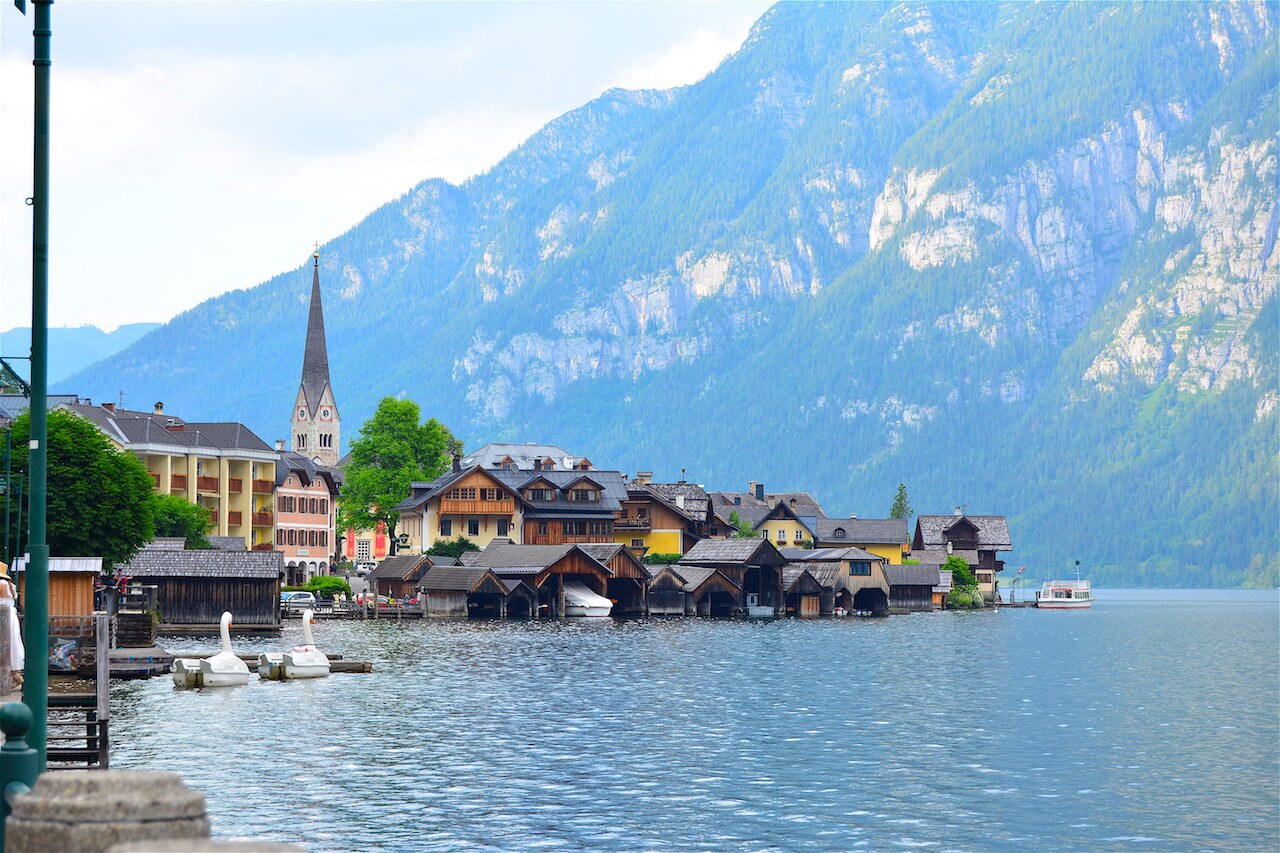
Austria Travel Tips
I must have been around 12-13 years old when I saw ‘Sound of Music’ for the first time. Maybe that is why I associate music to Austria . Yes, music is an integral part of Austria. But it is so much more than that. Austria is full of quaint villages, baroque architecture, Alps perfect for skiing, numerous palaces, lots of chocolate cake and so much more. On this page, you can find some quick Austria travel tips.
Disclaimer – This article includes affiliate links. This translates to no extra cost to you but I get a referral bonus if you purchase via the link.
Planning a trip to Austria at the last minute?
I know everyone is busy and don’t have time to plan their Austria trip. In this section, I list some of my favorite websites and apps I use as well as some tips for visiting Austria.
- Skyscanner is my go to app when it comes to booking flight tickets for Austria.
- I used Booking for all my accommodations in Austria.
- If I am staying in hostels, then HostelWorld is my preferred app for hostels in Austria.
- I use Omio and RailEurope for all my train tickets in Austria.
- I use Getyourguide for all my tours within Austria.
- I used Flixbus to travel around Austria.
- Safetywing has your insurance covered in Austria.
- Get an eSim when you are travelling across Austria.
- I loved driving in Austria and I feel that is the best way on how to get around Austria.
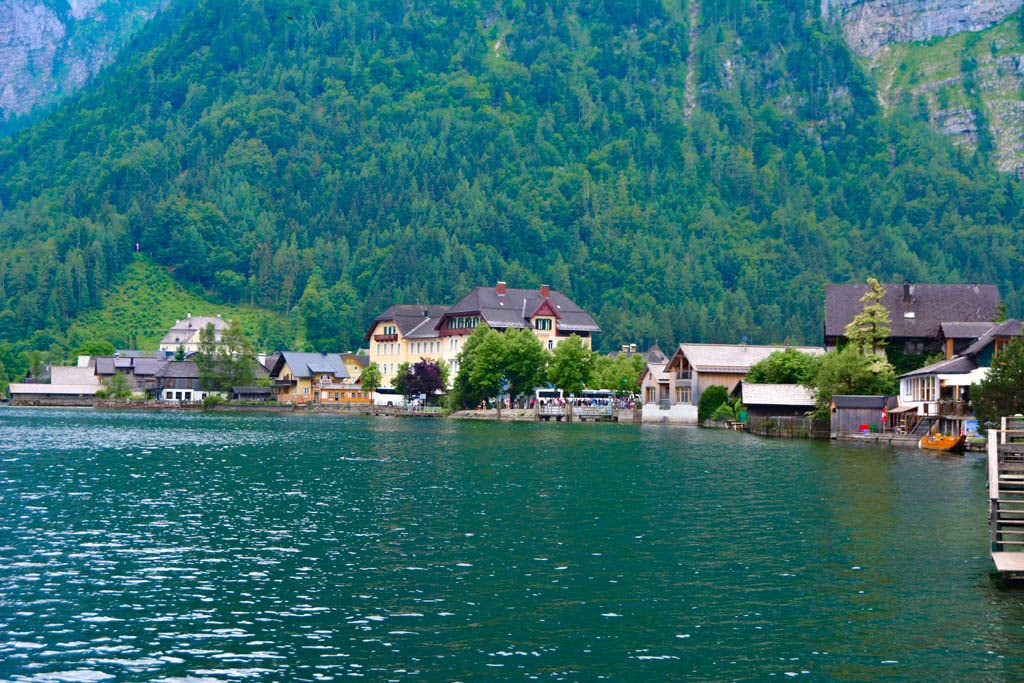
AUSTRIA TRAVEL GUIDE CONTENTS
- Quick Travel Tips
- Where To Go
- How to get there
- Driving Rules
- Public Transportation
- Where to Stay
- What to Eat
- What to Shop
- Things to Do
Austria travel tips
These are some of the tips when it comes to visiting Austria in general.
VISA REQUIRED FOR INDIANS
Austria is part of the Schengen zone and hence Indians require a Schengen tourist visa to go here.
LANGUAGES SPOKEN HERE
German is the official language and in addition, Austrian German, Hungarian and Slovenian are also spoken here. Hallo, Danke, Guten Morgan, Wie geht es di r are Hello, Thank you, Good morning, How are you in German.
Central Europe. Neighbours are Czech Republic, Germany, Slovenia, Italy, Switzerland, Slovakia and Hungary.
ELECTRICAL TRAVEL ADAPTER SPECIFICATIONS
230 volts and 50 Hz. They use C and F plug types in Austria.
IDP REQUIRED FOR INDIANS?
If you are planning to drive in Austria, then it is recommended that you have an IDP and your local license.
Most cards you buy in other countries in the Schengen zone will work without additional data or roaming charges.
WIFI CONNECTIVITY
The cities are well-equipped with Wifi and you can find free Wifi in many areas in Vienna and Salzburg.
SAFETY IN AUSTRIA
I have been twice to Austria as a solo female traveller and it is definitely quite safe as long as you keep your wits around you.
WHERE TO GO IN AUSTRIA
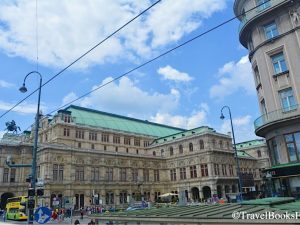
Let us start with the capital and go explore the music scene of the city and have some delicious apple strudels.
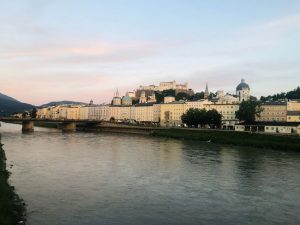
From there, head to the beautiful city Of Salzburg near the German border with the views of the Alps.
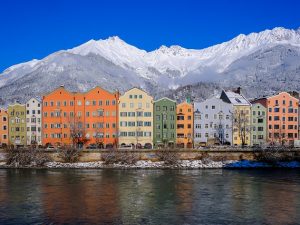
In the mood for some winter sports? Then head to the city of Innsbruck in the Tyrol region.
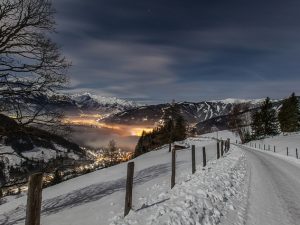
Zell Am See
Trails and Lifts from this town on Lake Zell takes us up to the Schmittenhöhe mountain for some skiing.
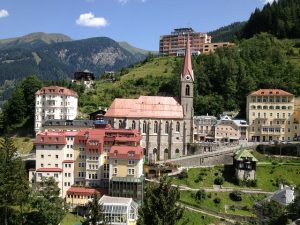
Bad Gastein
Next, head to the spa and Ski town with many hotels built on its steep slopes.
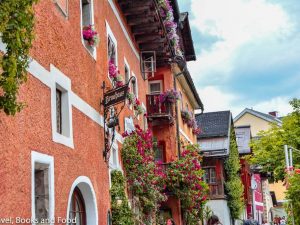
Many people have seen pictures of this gorgeous village in Austria and wondered when we could go there.
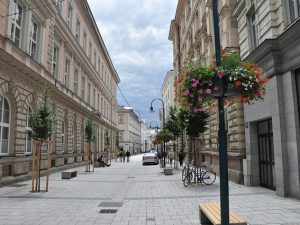
As a European city of culture, Linz is definitely something to put on your list.
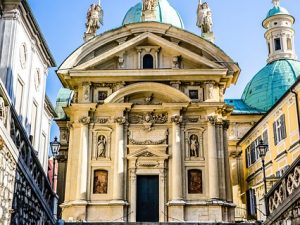
Last on the list is the city of Graz known for its medieval old town.
WHEN TO GO TO AUSTRIA
May-September is when the climate is more moderate and you have more fun stuff to do in Austria. If you are looking for a winter holiday, then the recommended time is between December and February.
HOW TO GET TO AUSTRIA
From India, you can fly to Vienna international airport from most of the metropolitan cities. Additionally, you can fly to Salzburg, Innsbruck, Graz from other cities in Europe.
Austria has an extensive railway system and is operated by Austrian Federal Railways. I recently took a train from Salzburg to Ljubljana and it was definitely one scenic train ride.
Flixbus regularly operates to major cities in Austria from other cities in Europe.
DRIVING IN AUSTRIA
You drive on the right side of the road in Austria. Also, you need a sticker to drive in Austria and it costs around 8-10 Euros. Recommended to carry an IDP.
Recommended Read – Planning a trip to Europe
PUBLIC TRANSPORTATION IN AUSTRIA
Vienna has a train, subway, tram and a bus system. Since they are mostly operated by the same operator, you can use the same ticket to get anywhere in Vienna using any of these modes of transport. You can either hail a taxi from a taxi stand or book an Uber.
In Salzburg, I walked extensively but used the bus services to get to Hallstatt from Salzburg. It costs approximately 13 Euros for a trip from Salzburg to Hallstatt one way and you can buy the ticket from the bus driver while boarding the bus. There is no subway in Salzburg and you can always ask your hotel to hail you a cab like I did.
WHERE TO STAY IN AUSTRIA
Find some recommendations on where to stay in Austria.
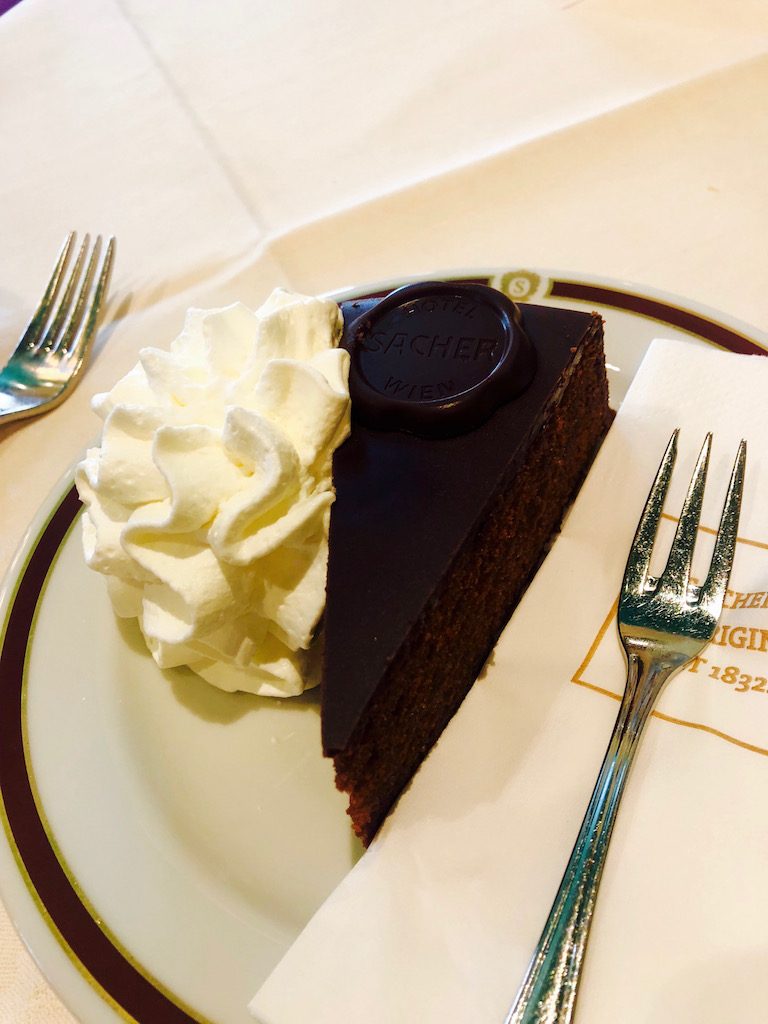
WHAT TO EAT IN AUSTRIA
There are lots of options for vegetarians in Austria . I have had different varieties of vegetarian food in Austria. Due to its close proximity to Italy and Germany, the cuisine is quite similar. There is an abundance of both Italian and German dishes. In addition, you can find many Falafel shops around Vienna. Coffee is a must when you go to Austria and it is recommended that you have an Eiskaffee when you are there. I loved eating the Sacher Torte, a special type of chocolate cake found in Austria. Apple Strudel is also another must-have when you are in Austria. Kaiserschmarnn or shredded pancake with apple sauce is something I tried out in Hallstatt and it was quite delicious. You can also find a wide array of Knodel, which is basically a dumpling filled with either savoury or sweet fillings. If you love egg like me, then don’t forget to try out the Spatzle or the egg noodles.
WHAT TO SHOP IN AUSTRIA?
I usually do not shop much on my trips and buy only fridge magnets. I travel light and end up buying gifts only at the last stop. But a reader requested that I add this information and so I have sourced an article on what to shop in Austria . I did buy Mozart balls (we did have a good laugh about this when I got back) in Salzburg, a Lederhosen for my nephew from Hallstatt and a snow globe. I contemplated buying a Sacher Torte for my family back in India from the Sacher hotel in Salzburg but I still had more than 3 weeks left on the road and I decided against it.
THINGS TO DO IN AUSTRIA
There are numerous things to do in Austria. But some of the recommended things to do in Austria below:
- Fall in love with the architecture of Vienna . If Prague is full of colourful buildings, then Vienna is the more subdued version with lots of cream and white buildings. Visit the many palaces around the area.
- Visit the birthplace of Mozart .
- Take a ‘ Sound of Music ‘ tour in Salzburg
- Go see a musical opera for 4 euros at the Vienna State Opera house .
- Visit the quaint village of Hallstatt .
- Go skiing in the Austrian Alps .
- Spend a relaxing day in one of the many magical resort ski towns around Salzburg.
Find more details of things to do in Austria here . In addition, choose one of the below tours to have a great and fun time in Austria.
MORE AUSTRIA RESOURCES
Guidebooks for Austria
Traveling to Austria and need more guidance on which books to read? These are our recommendations for you to read before you go.
- Fodor’s Guide to Austria
- Lonely Planet’s Guide to Austria
- DK Eyewitness Guide to Austria
Read Some of My Latest Austria posts
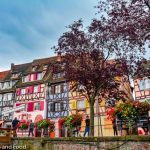
BOOKING RESOURCES
Looking to book your trip now? Find some of my favorite resources I use while booking my trip. You can also find my travel gear here .
Book Your Flight
I am a Skyscanner fan when it comes to booking international flights. I use Makemytrip and Yatra for domestic flights.
Book Accommodation
Booking is my go to resource for booking hotel accommodation and I use Airbnb for booking my homestays. I also compare prices on Tripadvisor always. Another one I always use is Expedia .
Travel Insurance
As an Indian, I prefer ICICILombard and I am always insured when I am traveling outside India. In addition, I have used World Nomads and SafetyWing for some of my trips.
I do go on a lot of day tours especially when I am traveling solo and love going on road trips with my husband.. Depending on convenience, my choices are Viator or Getyourguide .
This website contains a few affiliate links. This translates to no extra cost to you but I get a referral bonus if you purchase via the link. I only recommend products we love.
Work with Us
Destinations
Itineraries
Amazon Services
This site is a participant in the Amazon Services LLC Associates Program, an affiliate advertising program designed to provide a means for us to earn fees by linking to Amazon.com and affiliated sites.
© 2015 - 2024 All Rights Reserved
Designed by Soumya Nambiar
Privacy Policy Terms of Service
Nomadic Matt's Travel Site
Travel Better, Cheaper, Longer
Vienna Travel Guide
Last Updated: August 9, 2023
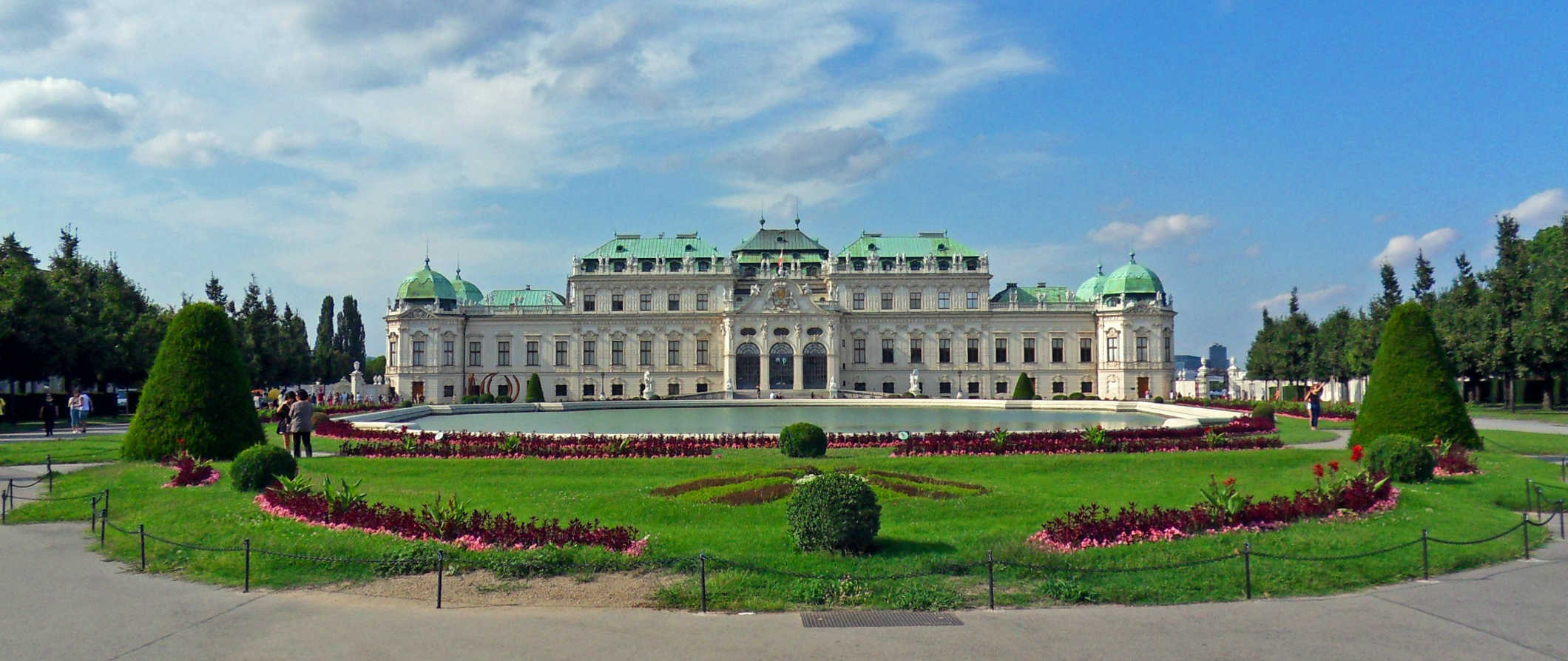
Vienna. Home to schnitzel, Freud, Mozart, the Habsburgs, opera, art, coffee shops, and so much more.
Over the decade I have been visiting this city, I’ve watched Vienna change from a stiff capital city to a cool, hip, foodie, and arty paradise. (Ok, it’s always been an arty paradise and maybe the “stiff capital” was just my incorrect first impression.)
Since my first visit, I’ve come to appreciate the city and all it has to offer. Vienna has countless museums, palaces, markets, restaurants, quirky art exhibits, delicious food halls, neighbors a wonderful wine region, and is a quick train trip to Bratislava .
There’s a lot to do in Vienna and you can easily spend weeks trying to see it all. In fact, there’s so much to do here that I advise you to spend an extra day here. If you think three days is enough, spend four. If you’re here for four, spend five.
No matter how long you plan to be in the city, this Vienna travel guide can help you plan the perfect trip — and save money along the way!
Table of Contents
- Things to See and Do
- Typical Costs
- Suggested Budget
- Money-Saving Tips
- Where to Stay
- How to Get Around
- How to Stay Safe
- Best Places to Book Your Trip
- Related Blogs on Vienna
Click Here for City Guides
Top 5 things to see and do in vienna.
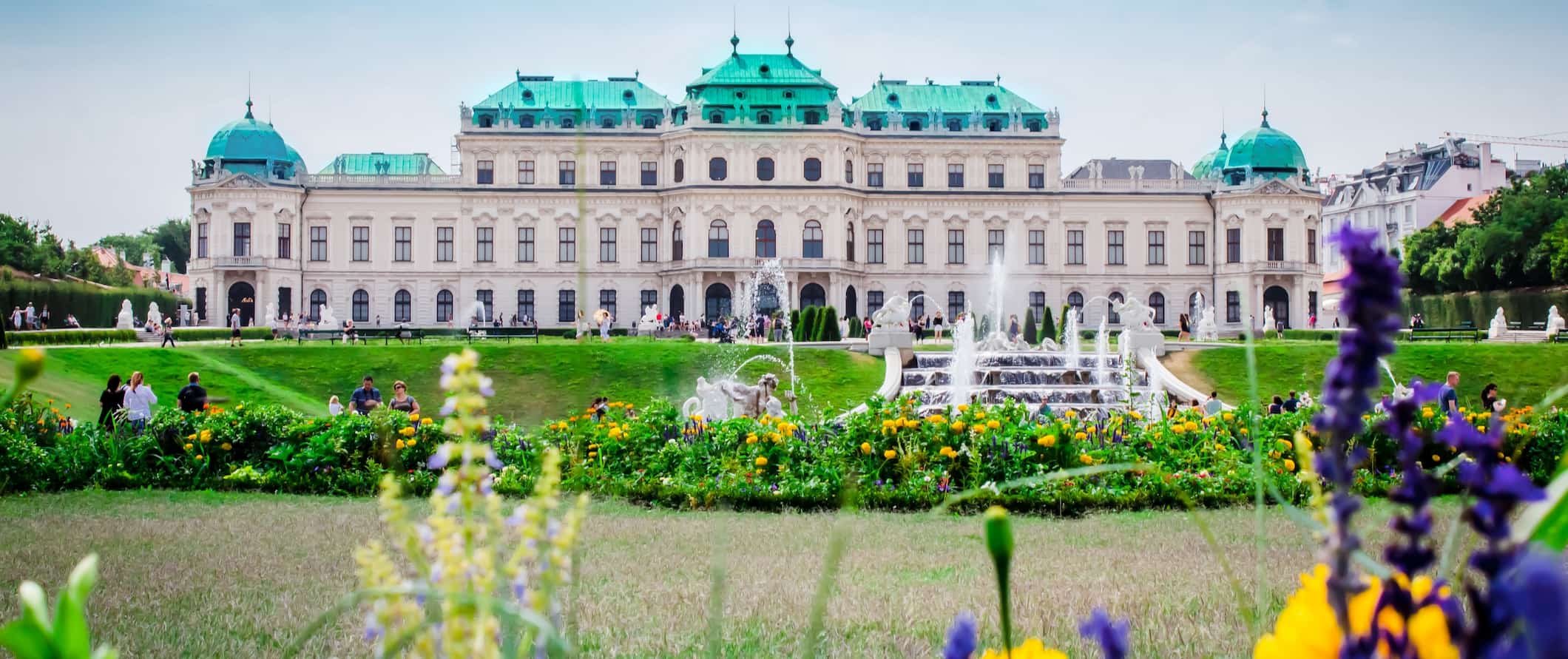
1. See Belvedere Palace
The Belvedere is home to an incredible art collection with works by Renoir, Monet, and Van Gogh, among others. It also has a large portrait collection. The Palace has a permanent collection at the Upper Belvedere while special exhibitions are held at the Lower Belvedere (contemporary art is located at the Belvedere 21, which is nearby). The free grounds feature beautiful fountains, gravel walkways, ponds, statues, plants, and flowers. Admission is 16 EUR and guided tours can be booked in advance for a flat rate fee of 90 EUR for up to 20 people. Belvedere 21 is closed on Mondays but has late night opening on Thursdays.
2. Visit Schonbrunn Palace
This 1,441-room palace is a UNESCO World Heritage Site and started off as a hunting lodge before becoming the summer residence of the Habsburgs, one of the most prominent dynasties in European history, during the 1700s. It’s now one of Vienna’s top attractions. The interior is incredibly ornate with paintings, woodwork, chandeliers, and elaborate decorations. You can explore 22 rooms with the Imperial Tour (18 EUR) or 40 rooms with the Grand Tour (22 EUR). You could easily fill a whole day here.
3. Explore the Hofburg Imperial Palace
One of the biggest palace complexes in the world, the Hofburg is the official residence of the President of Austria. Previously, it was the principal palace of the Habsburg dynasty for more than 7 centuries. There are several exhibits here, including the Sisi exhibit (which highlights the life of Empress Elisabeth) and the royal apartments themselves. The famous Vienna Boys Choir performs at High Mass at the Gothic Imperial Chapel every Sunday. The Sisi costs 16 EUR and includes admission to the Sisi Museum, the Imperial Apartments, and the Imperial Silver Collection. Free audio guides & printed descriptions are available.
4. Visit the Mozart Museum
Though Mozart lived at a handful of different addresses in Vienna, this is the only apartment that has survived. He lived here from 1784-1787. Spread over 3 floors, you can learn about his life, family, music, friends, and listen to his work. The exhibit on the first floor, consisting of four large rooms, two small rooms and a kitchen, is where Mozart and his family actually lived although you have to use your imagination as there is not much left of original furniture and not much is known about how the rooms looked or what they were used for. There’s a variety of paintings, artifacts, letters, and memorabilia from his life as well. Admission is 12 EUR.
5. Do a Wine Tour
Other things to see and do in vienna, 1. see st. stephen’s cathedral.
Stephansdom is a 12th-century Romanesque and Gothic cathedral in Vienna, noted for its colorful roof. The cathedral has been destroyed and rebuilt over the years, with the current version of the cathedral largely initiated by Duke Rudolf IV (1339–1365). Its most recent reconstruction took place just after World War II. You can take a tour of the cathedral, the catacombs, and climb the north and south towers (which offer excellent views of the city). Admission is 20 EUR, guided tours are 3.50 EUR and audio guides are 6 EUR. Catacomb tours are 6 EUR and going up the towers costs 5.50 EUR for the South Tower and 6 EUR for the North Tower.
2. Go to the Naschmarkt
This is Vienna’s largest open-air food market. It’s been operating for hundreds of years and has more than 100 stalls with a variety of international restaurants, street stalls, and grocers. It’s a little touristy (don’t go food shopping here) but it has a cool vibe and, on a warm sunny day, it’s nice to sit out with a meal and a glass of wine. Despite its fame, there are still a lot of locals here. Be sure to hit up Umarfisch for seafood and wine. On Saturdays, there’s a flea market here too.
3. See the art in the Museumsquartier
Once the imperial stables, the Museumsquartier is home to all kinds of art and cultural institutions and events. Three museums worth checking out in the MQ are the Leopold Museum for Art Nouveau and Expressionism; Kunsthalle Wien, an exhibition center with rotating exhibitions; and the Museum of Modern Art, which has the largest collection of modern art in central Europe. A pass to all three museums is 27.50 EUR. The Museumsquartier is also home to a number of festivals throughout the year (including open-air concerts and a fashion week). A variety of tours are run on some Saturdays including a backstage tour offering the chance to see behind the studio doors of the guest artists.
4. Visit the House of Music
This is a small but fascinating museum that features four floors of exhibits on some of the world’s most well-known Austrian composers, including Mozart, Schubert, Strauss, and Schoenberg. You can view manuscripts and artifacts, and there’s also a virtual stage where you can conduct your own symphony. It’s fun, interactive, and educational. Admission is 16 EUR.
5. See a classical performance
Austria has contributed its fair share of composers to the world, so it’s no surprise that you can find plenty of opportunities to indulge in the classics here. Just going to one of the many theaters and concert halls in Vienna is an experience in and of itself as the buildings are so historic and beautifully decorated. If you’ve ever considered taking in an opera, symphony, or ballet (the Vienna State Ballet is one of the best in the world), this is the place to do it. Prices vary depending on the performance but expect to pay at least 40 EUR for standard tickets. For opera, I recommend buying last-minute standing-room tickets for 4-18 EUR the day of a show. The 435 tickets usually go on sale 80 minutes before it starts (you can line up earlier than that, but they don’t start selling until right before the show). It’s first come, first served and you can only buy one ticket per person but it’s the cheapest way to see a performance!
6. Visit the Museum of Art History
This is the largest art museum in the country, with works from ancient Egypt and Greece through to the 18th century. There are over 700,000 items in the collections so it’s worth taking the time to explore (especially if you’re a history buff like me). Opened in 1891, the primary collection originally belonged to the Habsburgs, which includes tons of portraits and armor. Admission is 18 EUR.
7. Hang out in the Jewish Square
For centuries, Vienna was home to a sizable Jewish population. Then the Nazis came. This area of town features two important museums: the Vienna Jewish Museum, which details the role Viennese Jews played in the development of city life; and the Medieval Synagogue (Misrachi-Haus), which highlights the history of Jewish life in Vienna. Admission is 12 EUR and includes entry to both sites within four days of issue. There is also the sobering Holocaust memorial nearby, designed by British artist Rachel Whiteread.
8. Walk the Ring Road
This historic loop is brimming with beautiful architecture. It’s here where you can find the Parliament building, City Hall, both the Museum of Fine Art and the National History Museum, as well as the State Opera. It’s a relaxing (and free) way to spend some time soaking up the city and admiring its history.
9. Visit the Freud Museum
Sigmund Freud, the famous founder of psychoanalysis, lived in this apartment-turned-museum from 1891-1938. The museum was opened in 1971 with the help of Anna Freud (his youngest daughter) and is home to the original furniture, Freud’s private collection of antiques, and first editions of his works. There are also films from his private life. It’s small and only takes about an hour to visit. Admission is 14 EUR.
10. Visit the Albertina
The Albertina is one of the best museums in the city (which says a lot because this is a city of museums). It’s housed in one of the private residence wings of the Imperial Palace. It’s most famous for its print collection, which is comprised of over one million prints and 60,000 drawings. However, they have a lot of temporary exhibits that rotate through here too, which I found to be the highlight (I saw an excellent one on Raphael, the famous Italian Renaissance painter). Admission to the Albertina and the Albertina Modern costs 2.90 EUR.
11. Visit the National History Museum
Home to a detailed anthropology exhibit, as well as a planetarium and prehistoric exhibit, the National History Museum is worth the time if you’re a museum buff. Their collection boasts over 100,000 items, including a huge collection of meteorites. It’s also home to the 25,000-year-old Venus of Willendorf statue, which was discovered in Austria. There’s also a planetarium that offers shows in German and English (the live shows are only available in German). Admission is 14 EUR.
12. Day trip to Bratislava
Slovakia’s capital of Bratislava makes for a great day trip from Vienna. Located just one hour away, you can easily head there for a day to explore its charming medieval center, see its several castles, drink at the historic beer halls, and stroll along the Danube. Bratislava is a relatively small capital so it’s easy to get around on foot. Trains depart regularly from Vienna for as little as 11 EUR, while Flixbus runs a regular bus service with tickets starting at around 6 EUR.
13. Explore Vienna Woods
This beautiful woodland (known as Wienerwald) is located on the outskirts of the city and is filled with a lot of hiking paths. It’s located around 30 kilometers (19 miles) from the city, extremely popular with locals (few tourists get out there). If you don’t have a vehicle, you can take public transportation or try the ride-sharing service BlaBlaCar. It’s a nice place to relax with a book, stroll, and enjoy the laid-back pace of life.
Vienna Travel Costs
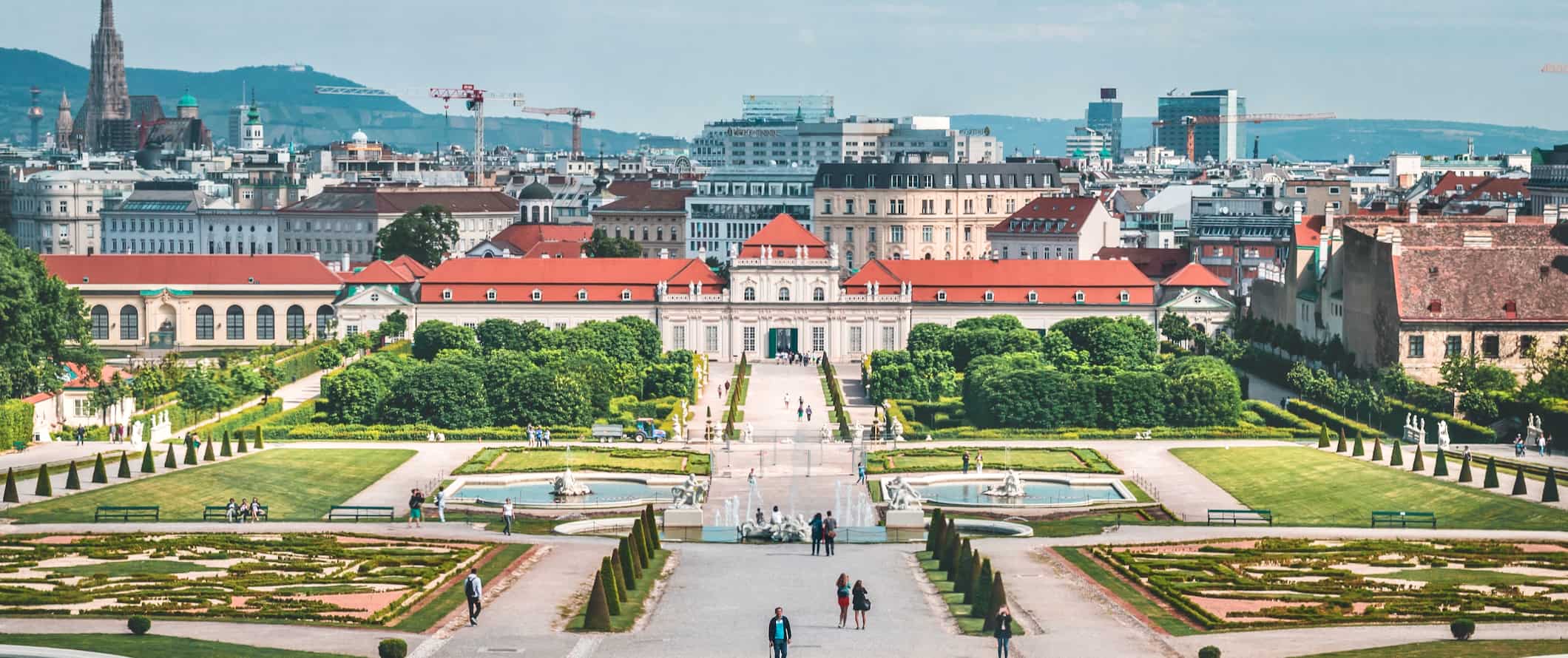
For anyone traveling with a tent, camping is available outside the city. Camping in Vienna starts around 8 EUR per night in the low season for a single tent site without electricity and around 22 EUR in the peak season (July-August).
Budget hotel prices – Two-star budget hotels start around 40 EUR per night for a double or twin but often cost closer to 60-80 EUR. This usually includes free Wi-Fi and basic amenities (TV, coffee maker) but rarely free breakfast.
Airbnb is another budget-friendly option here, with private rooms starting around 50 EUR per night. For an entire home or apartment, expect to pay at least 65 EUR per night (though prices average around 90 EUR).
Food – Austrian cuisine is a hearty, meat-oriented one, with a focus on meat, soups, stews, and pastries. The country’s food has been influenced by its neighbors in Central Europe, as well as from the expansion of the Austro-Hungarian Empire (1867–1918). Popular dishes include rindsuppe (beef soup), smoked meat with sauerkraut, wiener schnitzel (traditionally made from veal), strudel, and tafelspitz (beef boiled in broth). Breakfast usually involves bread or rolls with cold cuts, jam, or cheese.
A typical inexpensive restaurant meal costs around 15 EUR. Expect to pay at least 35 EUR for a three-course meal at a mid-range restaurant.
If you’re on a budget, stick to eating at the local markets where you can find a great selection of traditional Austrian food (like schnitzel, goulash, sausages, and potatoes) as well as Asian, Greek, and Middle Eastern dishes for around 8-16 EUR.
Fast food like McDonald’s or Burger King costs around 9 EUR for a combo meal. A large pizza should cost less than 20 EUR while Chinese food is 9-15 EUR for a main dish. Sandwiches and salads cost between 7-9 EUR.
A beer at the bar costs around 4.25 EUR while a latte/cappuccino costs 3.80 EUR. Bottled water is 2 EUR.
If you are planning to cook your own food, a week’s worth of groceries costs around 30-50 EUR for basic staples like rice, pasta, vegetables, and some meat. Hofer and Penny Markt are two of the cheaper supermarket options for groceries. For more organic options (or if you have dietary restrictions), shop at Spar.
For tasty open-faced sandwiches, check out Piotrowski. And if you’re vegan or vegetarian, head to The LaLa (healthy eats and tasty baked goods) or Swing Kitchen (fast food/burgers).
Backpacking Vienna Suggested Budgets
On a backpacker budget of 65 EUR per day, you can stay in a hostel dorm, cook all of your meals, visit a few museums, take a free walking tour, limit your drinking, and take local transportation to get around. If you plan on drinking, add 5-10 EUR to your budget per day.
On a mid-range budget of about 170 EUR, you can stay in an Airbnb or private hostel room, eat out for most meals, have a few drinks at the bar, see more museums and palaces, a day trip to Bratislava, and take the occasional taxi to get around.
On a “luxury” budget of 300 EUR per day, you can stay in a hotel, eat out for all your meals, drink out at the bar as much as you’d like, rent a car or take taxis to get around, and do private guided tours. This is just the ground floor for luxury though. The sky is the limit!
You can use the chart below to get some idea of how much you need to budget daily, depending on your travel style. Prices are in EUR.
Vienna Travel Guide: Money-Saving Tips
Vienna can be an expensive city if you don’t watch your budget. Accommodation, coffees, museums, and eating out can add up quickly. Here are some tips to help you save money when you visit Vienna:
- Take a free walking tour – Vienna offers a handful of free walking tours which are great ways to get familiar with the city and the culture. Good Tours , Anna Loves Vienna , Vienna Greeters , and The Original Free Vienna Walking Tour are all great options. Just be sure to tip your guide!
- Cook your own meals – If you want to save money on your food budget, stay in a hostel or Airbnb with a kitchen. Buying your own groceries may not be as glamorous as eating out, but it saves you money!
- Stay with a local – Staying with a local via Couchsurfing (or similar sharing economy sites) is a great way to save money. It’s also a great way to meet a knowledgeable local who can help you better understand the city and its people.
- Skip the fast train into Vienna – Unless you are in a rush to get downtown, skip the City Airport Train. It’s 11 EUR compared to the regular train (which is 4.30 EUR). The time difference is negligible, and that extra 6.70 EUR could be better spent on a cold beer!
- Get a Vienna PASS – With the Vienna PASS you get entry to over 60 attractions, museums, and monuments throughout the city. It costs 76 EUR for a one-day pass but if you’re planning to visit several of Vienna’s most popular museums/galleries then getting the pass could save you a fair amount of money especially as it has an option for public transportation too! If you’d rather not spend that much, some of the museums (that also belong to Vienna Pass) have also developed their own ticket packages.
Where to Stay in Vienna
Vienna has plenty of fun, social hostels. Here are my favorites ones to stay at:
- Wombats City Hostel
- The MEININGER Hotel
- JO&JOE
- Westend City Hostel
How to Get Around Vienna
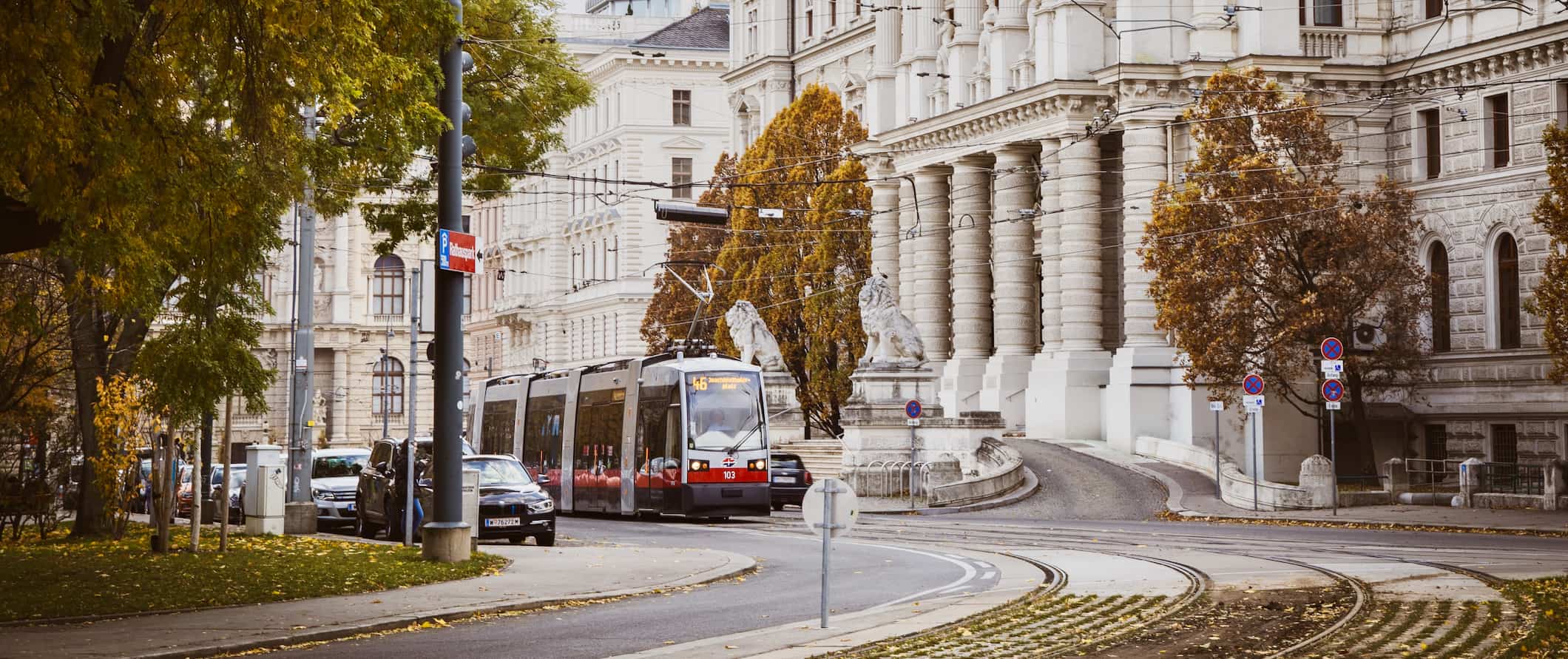
Public transport – Public transport in Vienna is safe, fast, and efficient. There are four main forms of public transport: bus (Autobus), local train (S-Bahn), tram (Straßenbahn), and subway (U-Bahn). Public transportation in Vienna works on an honor system. This can be confusing at first as there are no formal ticket checks or barriers at stations making it appear that public transport is free. Public transport is not free. You need to buy a ticket at the machines within the stations. If you get caught by one of the undercover ticket inspectors they charge you a hefty fine.
A single ticket is 2.40 EUR (zone 1 only), a 24-hour pass is 8 EUR, a 48-hour pass is 14.10 EUR, and a 72-hour pass is 17.10 EUR. The weekly pass (valid from Monday to Monday) is also 17.10 EUR.
If you’re flying into Vienna, the direct airport train is only 16 minutes to downtown and costs 11 EUR (19 EUR return). If you’re not in a hurry, however, take the regular train instead. It is only 4.30 EUR.
Taxis – Taxis should be avoided if you’re on a budget as they can add up fast. Fares start at 4 EUR and go up by 1.70 EUR per kilometer. Uber is also available here and is cheaper than a taxi so use it instead.
Bicycle – If you want to explore the city by bike you can find rentals for under 10 EUR per day via ListnRide . It matches you with a local renting their bike for cheap.
Car Rental – You don’t need to rent a car to get around Vienna. Most areas are walkable and public transportation is efficient. However, if you want to rent a car to get out of the city, expect to pay at least 35 EUR per day. Make sure to have an International Driving Permit (IDP) — you need one for any car rental.
When to Go to Vienna
There’s no wrong time to visit Vienna. The summer months (June-August) offer the best weather. However, this is the peak season for tourists so things are busier. During July and August, many local residents leave the city for what they call Sommerpause (Summer break) meaning many small local businesses close. Expect daily highs around 25°C (77°F)
Winter is from December to March. It gets cold, with temperatures dropping as low as -15°C (5°F). That said, November and December are considered to be the most magical months in the city because of the Christmas markets. The city looks gorgeous covered in snow!
Personally, I think the best time to visit Vienna is the shoulder season (April-June and September-October). It’s still warm during this time but there aren’t as many other tourists and prices aren’t as high as in the summer.
How to Stay Safe in Vienna
Vienna is a very safe city. That said, pick-pocketing can still occur in large crowds or on crowded public transportation. The 1st District (where you can find many of the city’s historic landmarks) and the 4th District (Karlsplatz/Karlskirche) are the main areas to be vigilant.
Be on the lookout for fake event tickets being sold on the street. This can be easily avoided by only booking tickets directly from the venue.
Also be cautious of people posing as plain-clothes police officers asking to see your passport. This has become common in the main tourist areas and in public transport stations. When you produce your passport, they take it and accuse you of a minor crime and demand you pay a fine. If you refuse, they can get aggressive and while you are distracted an accomplice picks your pockets.
While these scams are rare, it’s better to be safe than sorry. You can read about more common travel scams here so you know what to look out for.
Solo female travelers should generally feel safe here. However, the standard precautions apply (never leave your drink unattended at the bar, never walk home alone intoxicated, etc.). Look for specific tips on solo female blogs as they’ll have more tips from experience than I can provide.
If you experience an emergency, dial 112 for assistance.
When in doubt, always trust your instincts. If a taxi driver seems shady, get out. If your hotel or accommodation is seedier than you thought, go somewhere else. Make copies of your personal documents, including your passport and ID, in case of an emergency.
The most important piece of advice I can offer is to purchase good travel insurance. Travel insurance protects you against illness, injury, theft, and cancellations. It’s comprehensive protection in case anything goes wrong. I never go on a trip without it as I’ve had to use it many times in the past. You can use the widget below to find the policy right for you:
Vienna Travel Guide: The Best Booking Resources
These are my favorite companies to use when I travel. They consistently have the best deals, offer world-class customer service and great value, and overall, are better than their competitors. They are the companies I use the most and are always the starting point in my search for travel deals.
- Skyscanner – Skyscanner is my favorite flight search engine. They search small websites and budget airlines that larger search sites tend to miss. They are hands down the number one place to start.
- Hostelworld – This is the best hostel accommodation site out there with the largest inventory, best search interface, and widest availability.
- Booking.com – The best all around booking site that constantly provides the cheapest and lowest rates. They have the widest selection of budget accommodation. In all my tests, they’ve always had the cheapest rates out of all the booking websites.
- HostelPass – This new card gives you up to 20% off hostels throughout Europe. It’s a great way to save money. They’re constantly adding new hostels too. I’ve always wanted something like this and glad it finallt exists.
- Get Your Guide – Get Your Guide is a huge online marketplace for tours and excursions. They have tons of tour options available in cities all around the world, including everything from cooking classes, walking tours, street art lessons, and more!
- The Man in Seat 61 – This website is the ultimate guide to train travel anywhere in the world. They have the most comprehensive information on routes, times, prices, and train conditions. If you are planning a long train journey or some epic train trip, consult this site.
- Rome2Rio – This website allows you to see how to get from point A to point B the best and cheapest way possible. It will give you all the bus, train, plane, or boat routes that can get you there as well as how much they cost.
- FlixBus – Flixbus has routes between 20 European countries with prices starting as low 5 EUR! Their buses include WiFi, electrical outlets, a free checked bag.
- SafetyWing – Safety Wing offers convenient and affordable plans tailored to digital nomads and long-term travelers. They have cheap monthly plans, great customer service, and an easy-to-use claims process that makes it perfect for those on the road.
- LifeStraw – My go-to company for reusable water bottles with built-in filters so you can ensure your drinking water is always clean and safe.
- Unbound Merino – They make lightweight, durable, easy-to-clean travel clothing.
- Top Travel Credit Cards – Points are the best way to cut down travel expenses. Here’s my favorite point earning credit cards so you can get free travel!
Vienna Travel Guide: Related Articles
Want more info? Check out all the articles I’ve written on backpacking/traveling Europe and continue planning your trip:

The 6 Best Hotels in Florence

The 7 Best Hotels in Madrid

The 6 Best Hotels in Vienna

The Best Walking Tours in Barcelona

How to Be a Digital Nomad in Europe
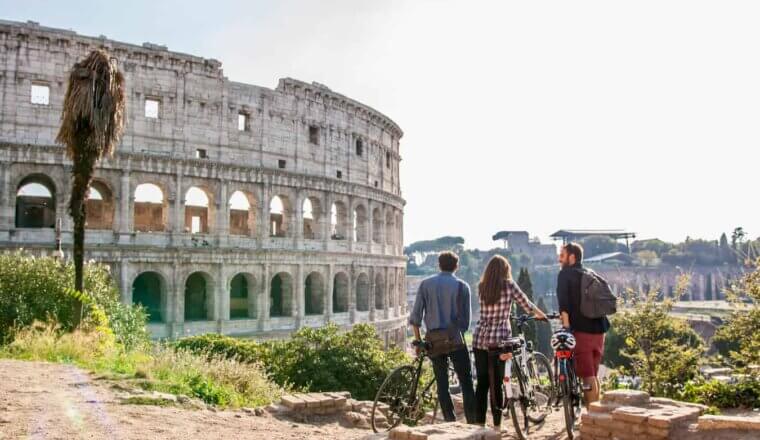
The Best eSIM for Traveling Europe
Get my best stuff sent straight to you, pin it on pinterest.
- Where To Stay
- Transportation
- Booking Resources
- Related Blogs
- Search Please fill out this field.
- Manage Your Subscription
- Give a Gift Subscription
- Sweepstakes
- Travel Destinations A-Z
This Gorgeous European City Is Known for Its Fairy-tale Palace, Wiener Schnitzel, and Christmas Markets
:max_bytes(150000):strip_icc():format(webp)/patricia-doherty-2dd85666682c4f4fa708d02b4e4ac40e.jpg)
Best Time to Go
Things to know, how to get around, best hotels, best restaurants, things to do, best shopping, neighborhoods to know, apps to download.
Vienna (Wien in German), Austria's capital city, is rich in history, architecture, art, music, food, and wine. Located on the River Danube, Vienna dates back to a Roman era settlement. Most of the city's many Baroque buildings were created under Empress Maria Theresa (18th century) and Emperor Franz Joseph (19th century), and today they stand in contrast to modern glass and steel structures.
Beautiful buildings, walkable streets, delicious food, and lots to do both indoors and outdoors make Vienna a wonderful vacation destination. Voted one of the most livable cities in the world, Vienna's city limits include vineyards, parks, and the forested Vienna Woods (Wienerwald in German), a protected natural landscape. A dog-friendly city, Vienna permits dogs on public transportation as well as in restaurants and shops. The "coffee culture" features prominently in Viennese life, and coffee houses are places to relax, socialize, and enjoy the city's famous desserts.
Called the "City of Music," Vienna was home to classical composers Schubert, Mozart, Haydn, Strauss, Brahms, and Beethoven. Vienna is known for its Ball Season when, from November until the Tuesday before Ash Wednesday, nearly 500 balls take place—with the Viennese Waltz and elegant formal attire in full display.
Central European Time Zone (CET) UTC +1
Seasonally: Central European Summer Time (CEST) UTC +2
For mild, although sometimes chilly weather, spring and fall are pleasant times to be in Vienna. Fewer tourists make it easier to see the city's attractions, and hotel rates are lower. Summer is warm and sunny with temperatures in the high 70s and perhaps a bit more rain. It's also a lovely time there, but the city sees more visitors during the high season, reflected in hotel prices.
Christmas markets and magical decorations attract tourists in winter, despite colder temperatures. The ball season from November until February can be fun even if you're not ready to waltz onto the dance floor. Ball gowns, traditional Austrian dirndls, live music, and the festive atmosphere create memorable experiences.
So it seems that there's no wrong time to visit Vienna. Take a travel umbrella, warm clothing, and remember the well-worn adage, "There's no such thing as bad weather, only the wrong clothes."
Find flights
Currency: Euro
(Check the current exchange rate )
Language: German
Hello - Hallo Good Morning - Guten Morgen Good day - Guten Tag Good Evening - Guten Abend My name is… Ich heiße… What is your name? - Wie heißen Sie? How are you? - Wie geht's? I'm well - Mir geht's gut. How much is that? - Wie viel kostet das? Where is the bathroom? - Wo ist die Toilette? Men - Herren/Männer Women - Damen/Frauen Please - bitte Thank you - Danke
Calling Code: +43
The letter ß, unique to the German alphabet, is used in many words to replace "ss."
Snow globes, a favorite souvenir of Vienna, have been produced there for more than a hundred years by the Perzy family in their 17th district factory. They depict St. Stephen's Cathedral, landmarks, animals, cakes, and more. The snow globes, made in a variety of sizes, are favorites at Vienna's Christmas markets.
Vienna is the only world capital with wineries within its city limits. In the city's outskirts of Grinzing, visitors can hike, bike, or visit a Heuriger, a seasonal wine tavern. Most of the wineries produce white wines, mainly Grüner Veltliner, Weissburgunder, Rheinriesling , and Gemischter Satz .
Danube Island, built as part of a flood protection system, has become a major recreation center with a beach, waterpark, restaurants, and nightclubs. An annual open-air music event, Danube Island Festival ( Donauinselfest ) is held there.
Austria's national dish is Wiener Schnitzel , thin cutlets of veal, breaded and fried. It's usually served with parsley potatoes or potato salad. Veal is most commonly used, but chicken may also be prepared as schnitzel.
Sacher Torte , one of Vienna's most famous desserts, is a rich chocolate cake with a thin layer of apricot jam, covered with chocolate. It's said to have first been prepared by Franz Sacher, a 16-year old apprentice, for Prince Metternich in 1832 when the head chef was ill. National Sachertorte Day in Austria is December 5.
In addition to coffee and sweets, Vienna is known for hot dog stands where you can choose either sweet ( süss ) or spicy ( scharf ) mustard.
If you live outside the European Union and your single local Vienna shopping bill exceeds EUR 75.01, you can claim a refund of the Austrian value added tax. Ask the seller for a Global Blue Cheque and the Global Blue Envelope that includes a list of all refund offices. (Global Blue is an international payment provider for tax free shopping.) While you are buying, make sure the original invoice is stapled to the Global Blue Cheque.When you leave Austria (or the European Union), go to the customs officer at the eValidation service counter at Vienna International Airport and get your Global Blue Cheque stamped on presentation of your purchase. Then cash your refund at one of the more than 700 refund offices world wide, including at Vienna airport. Alternatively, send the Global Blue Cheque of your Vienna shopping to Global Blue and they will transfer the money to you.
Vienna's public transportation network is extensive. Buses, trains, trams, and underground lines operated by Wiener Linien make getting almost anywhere in the city quite convenient. Ticket machines are located at underground stations, tobacconists, online, and on board (with a slightly increased rate.) In addition to single tickets, passes are available for longer periods of time.
The subway is called U-Bahn; local trains are Schnellbahn or s-Bahn; the tram is the Straßenbahn, and Autobus is the bus.
Taxi stands can be found throughout Vienna.
Uber operates in Vienna for ridesharing.
From Vienna International Airport , there is bus, train, and taxi service into the city as well as Uber for ridesharing.
The Vienna City Card provides discounts on tours and attractions as well as free public transportation on most lines. CityBike Wien operates approximately 120 bike stations around Vienna, one of the most bike-friendly cities in Europe.
Grand Hotel Wien
Address: Kärntner Ring 9 1010 Vienna, Austria Phone: +43 1 51580-0 Website
This opulent hotel dating to 1870 offers luxurious furnishings, five restaurants, two bars, and the Grand Spa No.605. Their elegant rooftop terrace, open from March through October, features panoramic views along with cocktails, bar snacks, and traditional breakfasts. The hotel is centrally located near the Vienna State Opera and Kärntner Straße shopping.
Ritz-Carlton Vienna
Address: Schubertring 5-7 1010 Vienna, Austria Phone: +43 1 31188 Website
Located in downtown Vienna, the luxury hotel features 201 guest rooms including 43 suites. The historic building was once four palaces that have been connected, and modern amenities include fitness center, indoor pool, and spa. An excellent steakhouse, Italian restaurant, cocktail lounge, and seasonal Atmosphere Rooftop Bar provide a range of dining offerings.
K & K Palais Hotel
Address: Rudolfsplatz 11 1010 Vienna, Austria Phone: +43 1 53313 53 Website
This centrally located hotel is housed in the former residence of Emperor Franz Joseph. Modern air-conditioned rooms include flat-screen TV's, coffee machines, minibars, and elegant furnishings. Family-friendly amenities include playground, laundry facilities, snack bar, and available child care.
Hotel Imperial
Address: Kärntner Ring 16 1015 Vienna, Austria Phone: +43 1 501 100 Website
Built for the Duke of Wurttemberg in 1863, the palatial building offers 76 rooms and 62 suites, all elegantly furnished with authentic antiques. Conveniently located near Vienna State Opera and St. Stephen's Cathedral, the hotel is also ideal for designer shopping. Family-friendly options include babysitting service, connecting rooms, and children's menus.
Hotel Sacher Wien
Address: Philharmoniker Str. 4 1010 Vienna, Austria Phone: +43 1 514 560 Website
This classic Victorian-era hotel features 152 exquisitely furnished rooms and suites that combine tradition with modern amenities. Fine dining restaurants and cocktail lounges are available, and guests should not miss Café Sacher 's world famous Sacher-Torte. Child care is available, and the "Petit Sacher" program provides a welcome gift and special amenities for children.
Park Hyatt Vienna
Address: Am Hof 2 1010 Vienna, Austria Phone: +43 1 22740 1234 Website
Set in a 100 year old former bank, the elegant hotel features 143 spacious guest rooms including 42 suites, as well as a spa with a sauna and pool. The hotel's location in the Goldenes Quartier is convenient to shopping, museums, churches, and attractions. In keeping with the theme, The Bank Brasserie & Bar presents exceptional dining and relaxed ambiance.
Hotel Daniel Vienna
Address: Landstraßer Gürtel 5 1030 Vienna, Austria Phone: +43 1 90 131-0 Website
This centrally located hotel features 116 contemporary style rooms with modern amenities at a budget-friendly price. Their onsite bakery, restaurant, and breakfast buffet are popular with guests and locals. Pets are welcome, and bicycles are available to rent when weather permits.
Mraz & Sohn
Address: Wallensteinstraße 59 1200 Vienna, Austria Phone: +43 1 3304594 Website
This family-run fine dining restaurant has received two Michelin stars for its creative approach to Austrian and internationally-influenced cuisine. Multi-course tasting menus offer an experience that's both sophisticated and casual, with friendly, attentive service. Reservations recommended.
Address: Am Heumarkt 2A, Innere Stadtpark 1030 Vienna, Austria Phone: +43 1 71 33 168 Website
Located in Vienna's Stadtpark and set in a modern mirrored glass building, the restaurant features rural Austrian cuisine in creative presentations. Fresh seafood, produce from the terrace gardens, wild boar, and more are treated in novel ways. Choose the tasting menu or dine a la carte, and call ahead for a reservation.
Address: Burggarten 1 1010 Vienna, Austria Phone: +43 1 533 10 33 Website
Set in an 1822 greenhouse overlooking Hofburg palace gardens, the updated modern glass and steel structure is stunning, offering both indoor and outdoor dining. Breakfast, lunch, and dinner are served, and the dinner menu includes seafood, steaks, and (of course) schnitzel. Reservations are suggested.
Address: Burggasse 2 1070 Vienna, Austria Phone: +43 1 5222520194 Website
The Michelin Guide describes the restaurant's cuisine as modern Austrian which can be ordered a la carte or as a tasting menu, with wines that focus on Austria's vineyards. Indoor and outdoor tables are available, and the menu includes traditional wiener schnitzels, veal, bisque, and desserts. Located near Vienna's museums; reservations are recommended.
Address: Praterstraße 1 1020 Vienna, Austria Phone: +43 1 906168110 Website
Located on the 18th floor of the modern hotel SO/Vienna, Das Loft offers panoramic views of the city through expansive windows, while a colorful illuminated ceiling created by multimedia artist Pipilotti Risi shimmers overhead. International fare is served starting with breakfast, and innovative dishes match the decor in creativity. Cocktails and a selection of wines from Austria and around the world are available.
Café Central
Address: Ecke Herrengasse, Strauchgasse 1010 Vienna, Austria Phone: +43 1 5333763 Website
Established in 1876 and set in Palais Ferstel , a palatial Italianate mansion, Café Central attracts tourists and locals who dine on Viennese dishes, coffee specialties, and bakery items in the historic setting. Through the years famous figures like Freud and Trotsky as well as poets and writers have dined there, so a stop at Café Central should be on every visitor's itinerary.
Address: Mariahilf, city center 1060 Vienna, Austria Phone: +43 1 400005430 Website
Vienna's largest and best known food market is located on the Vienna River, with more than 120 market stands selling produce, fish, cheese, international street foods, sweets, snacks, local products, and sit-down restaurant meals. The market dates to the late 16th century, and some stalls have been there for over 100 years. On Saturdays, a flea market next door offers books, record albums, antiques, and more. Closed on Sundays.
Schönbrunn Palace
Address: Schönbrunner Schloßstraß 47 1130 Vienna, Austria Phone: +43 1 81113239 Website
This magnificent 18th-century palace is one of Vienna's top attractions for its architecture, history, and Baroque gardens. Tours take visitors through the rooms once used by Emperor Franz Joseph and Empress Maria Theresa to see the furniture, art, and sumptuous décor.
St. Stephen's Cathedral
Address: Stephansplatz 3 1010 Vienna, Austria Phone: +43 1 515523054 Website
Also called Stephansdom , the cathedral was built as a 12th-century Romanesque church, and it has been reconstructed several times as recently as post World War II, combining its original design with Baroque and Gothic architecture. Visitors can tour the 14th-century catacombs in an underground labyrinth or climb one of the towers for a view of Vienna from the roof walk.
MuseumsQuartier
Address: Museumsplatz 1 1070 Vienna, Austria Phone: +43/1/523 5881 Website
Located in central Vienna, the complex includes 60 cultural institutions covering contemporary art, history, architecture, music, fashion, theater, dance, literature, photography, street art, and children's culture. Guided tours are available, and the exterior courtyard is designed for visitors and locals to enjoy with unique furniture, cafés, and restaurants.
The Spanish Riding School
Address: Michaelerplatz 1 1010 Vienna, Austria Phone: +43 1 533 90 31-0 Website
The riding school was established with the introduction of the famous Lipizzaner horses from Spain in the 16th century. Today, a variety of tours and performances demonstrate equestrian skills and take visitors behind the scenes for exercise and training sessions.
Vienna Zoo (Tiergarten Schönbrunn)
Address: Maxingstraße 13b 1130 Vienna, Austria Phone: +43 1 87792940 Website
The world's oldest zoo dating back to the mid-18th century, the Vienna Zoo was built in the Gardens of Schönbrunn Palace. Visitors can enjoy the exhibits on their own or choose from a variety of tours that include backstage tours, themed tours focusing on a favorite animal, and morning experiences in the rainforest or aquarium followed by breakfast.
Address: Riesenradplatz 7 1020 Vienna, Austria Phone: +43 1 7280516 Website
With a history that dates back to the 18th century, the 3,200-acre amusement park was rebuilt after World War II. The Prater is home to roller coasters, old-fashioned theme park rides, the Giant Ferris Wheel, Haunted Castle, the Prater Museum, Planetarium , 5-D cinema, and more.
Address: Kohlmarkt 14 1010 Vienna, Austria Phone: +43 1 535 1717 0 Website
Vienna's oldest café and bakery is an experience as well as a place to indulge in cakes, pastries, strudels, petit fours, and coffee. The experience is the opportunity to enjoy the same recipes loved by Emperor Franz Joseph served in traditional style by Demelinerinnen , waitresses in black dresses with white lace collars. You can also watch through a glass wall as bakers work, marvel at the window display, and take home a classic sacher torte to enjoy later.
Ringstrassen-Galerien (Ringstreet Galleries)
Address: Kârntner Ring 5-7 and 9-13 1010 Vienna, Austria Phone: +43 1 51 25 181 Website
Two buildings connected by a glass bridge creates a unique atmosphere for the 16-floor mall that includes offices, luxury apartments, and restaurants as well as retail shops. Stores offer clothing, accessories, jewelry, toys, art, gifts, flowers, and more in a gorgeous setting.
Donau Zentrum (Danube Center)
Address: Wagramer Strasse 94 1220 Vienna, Austria Phone: +43 1 20347 22222 Website
This huge mall includes more than 250 stores and a multiplex cinema as well as at least 50 restaurants. Conveniently linked to the city center via metro, Austria's second largest shopping center is popular among locals and tourists.
Address: Inner City 1010 Vienna, Austria
One of the oldest and most elegant streets in Vienna, Kohlmarkt is home to jewelers and international luxury fashion brands including Cartier, Chanel, Armani, Burberry, Gucci, and more. Browse the high end shops and enjoy the grand historical architecture of the area.
Hamtil & Sôhne
Address: Herrengasse 2 1010 Vienna, Austria Phone: +43 1 532 1803 Website
This store offers unique souvenirs, gifts, lamps, and locally-made products. An interesting selection of children's toys, games, and puzzles make clever gifts.
Steffl Department Store
Address: Kârntner Straße 19 1010 Vienna, Austria Phone: +43 1 930 56 0 Website
This upscale department store features a wide variety of clothing and accessory brands including Dolce & Gabbana, Furla, Chloe, Patagonia, in a convenient location. Rest a bit after shopping at the SKY Café and enjoy views of St. Stephan's cathedral and Vienna's skyline.
Tostmann Trachten
Address: Schottengasse 3a 1010 Vienna, Austria Phone: +43 1 533 533 1 Website
This is the best place to purchase locally made traditional Austrian clothing. In business for more than 60 years, Tostmann offers dirndls for ladies and lederhosen for gentlemen. Choose from a variety of styles for adults and children.
Augarten Wien
Address: Obere Augartenstraße 1 1020 Vienna, Austria Phone: +43 1 211 24 200 Website
Europe's second oldest porcelain manufacturer and purveyor to the Habsburg court, Augarten still produces timeless objects meticulously designed and painted. Dinnerware, vases, figurines, teapots, and collectible objects are available at the shop.
Innere Stadt (1st District) is the city center where most hotels, stores, restaurants, and attractions are located. St. Stephen's Cathedral, the Vienna Opera House, Parliament, and many museums are located in this district. The Ringstrasse, once the city's fortifications and now a fashionable boulevard, circles the district.
Leopoldstadt (2nd District) , once Vienna's Jewish quarter, is now a trendy area a short subway ride from the central city. Prater Park, Vienna's amusement park, is in this district as is the modern art museum and Augarten porcelain factory.
Landstrasse (3rd District) includes Stadtpark, Schwarzenberg Palace, Belvedere Palace, and several embassies and consulates. Stadtpark features lush lawns, playgrounds, and the excellent restaurant Steirereck im Stadtpark for Austrian cuisine.
Mariahilf (6th District) features the busy Mariahilferstrasse shopping street and the Naschmarkt produce and dining market as well as theaters and pubs. Vienna's aquarium is in this district, housed in a World War II air defense tower built by Hitler's engineers.
Neubau (7th District) includes the Spittelberg quarter, a lively cultural and upcoming trendy area. Bordering the MuseumsQuartier, this neighborhood's Christmas market is a popular winter destination. The large museum complex, formerly Imperial Stables, features bars, restaurants, shops, and an appealing outdoor area that attracts locals and tourists.
Hietzing (13th District) is home to Vienna's most popular tourist attraction, Schönbrunn Palace, and the Vienna Zoo. An elegant residential area with gorgeous 18th- and 19th-century summer residences, the district includes the Klimt Villa , with an exhibition of the artist's life and work.Döbling (19th District) borders the Vienna Woods and is home to exclusive residences as well as lush woodlands, wineries, and vine covered hills. Explore wineries or stop at a wine tavern. Hiking among hilly trails is popular here as well.
The climate of Vienna is continental with cold winters and moderately warm summers. Winter is cold and gray, with an average of 21 inches of snowfall each year. Snowfall is frequent, but generally not abundant.
January is the driest and coldest month, and July is the warmest and wettest. Hurricanes do not occur in Austria, and there is a chance of tornadoes during summer. Winter, December through February, is quite cold, and the weather starts warming in late March. Spring is mild and pleasant, and summer temperatures are warm, reaching into the 80s at times. Fall is mild, an ideal time to visit Vienna.
The following are average Fahrenheit lows and highs by month. Average annual precipitation is 23.9 inches, with somewhat more rain occurring between May and August.
January 27°F - 37°F February 29°F - 42°F March 34°F - 50°F April 42°F - 61°F May 50°F - 69°F June 56°F - 75°F July 60°F - 80°F August 59°F- 79°F September 52°F - 69°F October 44°F - 58°F November 36°F - 47°F December 29°F - 38°F
Zoo Adventures Guide - Schönbrunn Zoo guide, photos, videos, animal stories iOs | Android
WienMobil Guide - route planner, real time departure information, transportation services iOs | Android
Wien.at - official city homepage for local news, events, and weather iOs | Android
Quandoo - restaurant search, booking reservations. iOs
Bike Citizens - City Bike finder, navigation, directions to available nearby bikes iOs | Android
Uber - ride sharing iOs | Android
Which Austrian Alpine region is right for you?
With epic scenery and fresh mountain air guaranteed, Austria’s Alps offer travellers an inviting mix of culture, relaxation and adventure. Find out which area would suit you this summer.

One of Europe’s top skiing destinations in winter, the Austrian Alps are sometimes overlooked as a place to visit in summer. But once the snow seekers go into hibernation and the ski schools shut up shop, the mountains, meadows and valleys here take on a different look — and other activities take centre stage. You’ll find hiking, climbing and biking routes across the Alps, as well as beautiful lakes to swim in. Travellers chasing an action-packed break can try cycling in Kitzbühel or paragliding in St Anton, while those in search of peace and quiet could venture to the nature park in Zillertal. For culture and food, visit the bustling city of Innsbruck or head to Paznaun-Ischgl. Here, discover the right Austrian Alpine region for you.

Best for: a city break This mid-Alpine urban centre in the west of the country is the gateway to the Tyrolean mountains. For many, it offers the best of both worlds, with an attractive old town, interesting sights — such as the Goldenes Dachl (Golden Roof) — and the Nordkette Cable Car that cruises up to the surrounding peaks. Summer brings a fun programme of events, including a series of open-air concerts held in the courtyard of the Kaiserliche Hofburg (Imperial Palace). Learn about local history and culture while paddling on the River Inn on a city rafting tour with Stubai Rafting or try Up Stream Surfing , a fun combination of river surfing and wakeboarding.
Best for: mountain biking A place that holds many accolades for its skiing facilities, glitzy Kitzbühel also flexes its muscles in summertime. Take biking, for example — the area has hosted a cycling marathon, Der Kitzbüheler Radmarathon , since 2021 and boasts one of the most challenging road ascents in Austria: the Kitzbüheler Horn. Mountain bikers will love the recently opened Sonnenrast trail or the single-track Hahnenkamm route, which runs all the way back to the town.

Paznaun-Ischgl
Best for: Alpine cuisine Cool air and rocky peaks see cyclists flock to the 25-mile-long Paznaun Valley in summer for events such as the E-Bike World Championship , but there's another draw here, too. Alongside Ischgl’s high-end restaurants are a number of rustic mountain huts, which from July to October offer seasonal dishes developed by local chefs. Traditional cooking is combined with gourmet flair, with last year’s highlights including Alpine beef with wild herbs, and nettle ravioli with barley, cheese and chicory. Also, be sure to taste the region's signature cheese, Paznauner almkäse (mountain cheese), which gets its distinct taste from alpine herbs.
Schladming-Dachstein
Best for: views With more than 300 lakes and 100 waterfalls, the Schladming-Dachstein region is one of the most water-rich in Austria — take a short hike to Spiegelsee on the Reiteralm to see the mountains mirrored on the glass-clear water of the lake. The region's standout feature, however, is the majestic Dachstein Mountain . The mountain station at 2,700m above sea level is easily reachable by cable car and offers views as far as the Czech Republic and Slovenia. A suspension bridge, a viewing platform and the snappily titled ‘Stairway to Nothingness’ await visitors here, while a shiny new cable car station is scheduled to open in May 2024.

St Anton am Arlberg
Best for: outdoor activities Known as the birthplace of Alpine skiing, St Anton am Arlberg has a fascinating history that’s shared with visitors year-round at the local Museum of St Anton am Arlberg . In warmer months, the town provides the perfect base from which to try a whole host of outdoor activities. Adrenaline-seekers can try paragliding or canyoning, while those seeking relaxation can unwind at the Mountain Yoga Festival St Anton — and those wanting a bit of everything can make for the action-packed Mountain Sports Festival . Whatever you go for, St Anton am Arlberg is easy to reach by train thanks to regular high-speed connections from Vienna and Zurich.
St Johann in Tirol
Best for: local charm St Johann in Tirol sits at the foot of the impressive Wilder Kaiser Mountains, alongside the charming villages of Oberndorf, Kirchdorf and Erpfendorf. There are ample activities on offer in the region, including hiking, road cycling and mountain biking, golf and swimming. For a true taste of the area, check out the many local farm shops and cafes to pick up outstanding fresh produce or visit the traditional St Johann Weekly Market to sample regional specialities such as brodakrapfen (a pasty-like snack filled with potato and cheese).

Zell am See-Kaprun
Best for: swimming and watersports On a calm day, the mountains around Lake Zell are reflected in the clear water below. Refreshing water temperatures and lakeside lidos make this Salzburgerland spot popular for swimming, as well as stand-up paddleboarding, windsurfing and sailing. Not far away is the modern Tauern Spa , with 12 pools and a selection of wellness areas including 10 saunas and steam rooms — try the rock crystal sauna with different infusions such as mint and citrus or lemongrass and eucalyptus, and be sure to set aside ample time to take in the surrounding scenery.
Best for: nature The wide Zillertal valley is located to the east of Innsbruck. There are plenty of areas dedicated to outdoor sports here, including an extended ski season and year-round activities on the Hintertux Glacier , but also parts that remain almost untouched. The High Mountain Nature Park Zillertal Alps covers a 160sq-mile area and is home to thousands of animal species, including 500 kinds of butterfly, and more than 1,000 plant varieties. From May to October, themed hiking tours led by the experienced park guides — such as the ‘herb walk’ or wildlife watching — provide fascinating insights into the local flora and fauna.
Related Topics
- ADVENTURE TRAVEL
You May Also Like

6 wild ways to take to the water in Austria

What to pack for a cruise

The best Easter gift ideas for adults who love travel

The best gifts for women who love travel and adventure

The top 3 adventures in The Florida Keys & Key West

Comedian Dom Joly on his quest to find the end of the earth in Atlantic Canada

How to plan a trip to Bali, Indonesia
- Terms of Use
- Privacy Policy
- Your US State Privacy Rights
- Children's Online Privacy Policy
- Interest-Based Ads
- About Nielsen Measurement
- Do Not Sell or Share My Personal Information
- Nat Geo Home
- Attend a Live Event
- Book a Trip
- Inspire Your Kids
- Shop Nat Geo
- Visit the D.C. Museum
- Learn About Our Impact
- Support Our Mission
- Advertise With Us
- Customer Service
- Renew Subscription
- Manage Your Subscription
- Work at Nat Geo
- Sign Up for Our Newsletters
- Contribute to Protect the Planet
Copyright © 1996-2015 National Geographic Society Copyright © 2015-2024 National Geographic Partners, LLC. All rights reserved

The 10 best ski resorts in Austria
If staying in a picturesque ski resort with a warmly welcoming atmosphere is a high priority, Austria will come up trumps.
Many of its ski resorts have grown up around traditional farming villages with onion-domed churches that benefited from generous long-term grants under the US Marshall Plan for the rebuilding of European economies after World War II. Down the generations, Austrian hoteliers have grown rich on the tourist harvest, but the cosy hospitality embodied by the German word Gemütlichkeit is very much in evidence.
Austrian resorts are famed for foot-stomping, but friendly après-ski that starts on the slopes in the afternoon – traditionally with ski boots on – and continues until the small hours in the most party-orientated resorts. Think everything from convivial times in rustic mountain huts to clashing Steins and Schnapps in lively bars.
By contrast, the ubiquitous hotel spa provides a more soothing alternative – though be warned, the wearing of swimming costumes is not permitted in most sauna and steam rooms. To bare all may not in essence be part of repressed British wellness culture, but in the interests of hygiene and Germanic health rules, we are forced to comply in some of Europe’s smartest spa facilities.
On the slopes, while Austria may not always compete with the giant linked ski areas of France, its traditional villages are backed up by some heavyweight state-subsidised lift systems. Major investment in resorts including St Anton and Saalbach, for example, now mean fewer queuing bottlenecks, better linking and easier travel around these decent-sized ski areas. Improvements this season include new ten-person gondolas in Serfaus-Fiss-Ladis, Gerlos in the Zillertal, and Schlick 2000 in the Stubaital, as well as two new six-seater chairs in the Jochberg area of Kitzbühel.
It’s difficult now to imagine that back in the 1960s and even 1970s, Tirol and Salzburgerland attracted more British skiers each winter than France. Austria then fell far behind, but the gap between the two is again closing. However, future winter supremacy must surely be down to which country will manage to maintain the most reliable snow cover.
Many resorts have invested in sophisticated snowmaking, and while the low altitude of some villages – 1,000m or less – sounds discouraging for snow security in poor snowfall years, Austrian pastureland requires just a handful of centimetres to become skiable compared to high-altitude rocky crags in France and Switzerland. Resorts with slopes that go above 3,000m, including some on glaciers, also bely Austria’s low-altitude reputation.
Here’s where to go to enjoy the very best the Austrian slopes have to offer.
Best for beginners
Complete beginners really don’t need the complexity of a large resort, so a novice’s visit to this Tirolean chocolate-box with oodles of atmosphere – it regularly wins prizes as the prettiest village in Austria – should result in a lifetime of piste enthusiasm.
Resort purists reacted with alarm when Alpbach’s ski area was linked to that of Auffach in the neighbouring Wildschönau valley in 2013, but they needn’t have worried. While the number of pistes and lifts more than doubled, attracting a substantial number of new visitors, Alpbach itself, only a 40-minute drive from Innsbruck airport, has remained remarkably unchanged.
The next generation of adults who perfected their first turns as children in Alpbach now return to explore the respectable 97km of slopes served by 46 lifts in the two valleys that make up Ski Juwel Alpbachtal Wildschönau. The ski area continues to improve – a children’s area and nursery slope at the bottom station of the Reitherkogel gondola in the Reith sector, reached by ski bus, is one of the more recent additions.
Alpbach has a special relationship with the British that began more than 60 years ago when a Major Billy Patterson came here on leave from his army base in Germany and enjoyed the pistes and the pubs. He told his army friends in the British Army on the Rhine (BAOR) and they told others. Thousands of Britons have since learnt the basics on Alpbach’s slopes, and many return year after year and generation after generation. British regimental ski teams still train here.
The main ski area is a three-minute bus ride, followed by a gondola ride, away from town. But there is also a single nursery slope in the village centre, ideal for practising snowplough turns after lessons. Of the three ski schools in the resort, Alpbach-Inner Alpbach is the original learning establishment, while Alpbach Aktiv and Skischule Alpbachtal also have fine reputations.
Alpbach also offers great value for money – prices are low, even by Austrian standards. Visiting the resort during the dedicated family weeks, when special offers are available to families, makes it even more so.
Where to stay
Positioned five minutes’ walk from the village centre and nursery slopes is the friendly, family-run Pension Furstenberg.
From £472 B&B, with Crystal Ski .
Alternatives
Niederau in the neighbouring Wildschönau valley to Alpbach has similar small-village appeal, along with Kühtai near Innsbruck.
Best for intermediates
Saalbach hinterglemm leogang fieberbrunn.
Located a 90-minute drive from Salzburg airport, the two main villages of this all-encompassing ski area, Saalbach Hinterglemm, are at the centre of a magical ring of 2,000m peaks that form a natural circuit of pistes that can be navigated in either direction to give adventurous intermediates a sense they are actually going somewhere each day.
The ski area, which is one of the biggest in Austria, with 270km of slopes accessed by 70 lifts, also encompasses the smaller villages of Fieberbrunn and Leogang, and they all share one of the most sophisticated lift systems in Austria, with new lifts being added each winter. This season the 29-year-old Limberg chairlift has been replaced by a high speed eight-seater.
In 2019 the old eight-seater Zwölferkogelbahn in Hinterglemm was replaced by a high-speed 10-person gondola that increased uphill capacity from the Hinterglemm end of valley to the 1,984m Zwölferkogel peak from 2,400 to more than 3,500 people per hour.
Saalbach village is larger than Hinterglemm, and has a lively centre with bars, designer boutiques and four-star hotels. Hinterglemm is more peaceful and better for families, while straggling Leogang doesn’t have a centre as such, but offers some ski-in ski-out hotels so is extremely convenient for mountain access.
Where to stay
If you want to be in the centre of the action, then a good option is to stay in Saalbach where most of the après-ski is based. Sportpension Enzian is ski-in/ski-out with an in-house restaurant, bar and sauna. From £988, B&B, including, with Heidi. Find more of the best hotels and chalets in Saalbach here .
Ellmau is a pleasant little village in the heart of the SkiWelt, Austria’s second largest interconnected ski area. Bad Gastein in Salzburgerland gives access to around 200km of mainly intermediate runs.
Best for experts
The ability to handle the slopes like a god, party until dawn, and still be smiling enthusiastically on the first lift the following morning, makes or breaks a stay in what must be regarded as one of the top resorts in Europe for serious skiers, snowboarders, and committed night owls.
The first time visitor to St Anton will find it surprisingly small for a destination with such a huge reputation. The core of the village is just one main street – pedestrianised during the day – lined with some fine, old hotels and inns, sports shops and cafés.
It is situated at 1,305m and the Valluga cable car, the highest lift, goes up to 2,810m. In between lies an array of runs that vary from the moderately demanding to the just plain wicked – with waist-high moguls to boot. This is not a place for the faint-hearted – a blue slope here might well be classified dark red in a lesser resort – but the kind of person who feels confident on steepish intermediate runs and is game to tackle blacks will have a lot of fun.
Snow cover is usually reliable and the main action takes place on the Valluga side of the village, on and above the slopes of the Gampen and Galzig sectors. The Rendl ski area on the other side of the valley is more benign (and sunnier). Less accomplished members in the a group can always head to the altogether more friendly slopes of Lech and Zürs, also covered by the regional Arlberg lift pass, and linked to St Anton by lift. The main connecting lift is the Flexenbahn 10-seater gondola, which links Zürs with Stuben on the St Anton side in six minutes. In all, the Arlberg pass covers 85 lifts serving 300km of pistes, including the slopes of Warth-Schröcken on the far side of Lech.
A good day out is the Run of Fame piste circuit, which starts from Warth in the north and goes via Lech to St Anton’s Rendl sector, covering 18,000m vertical. However, when exploring the outer reaches of this enormous ski area, be sure to return in time for the evening action. St Anton is as serious about its more muted, but still lively post-Covid nightlife as it is about its on-slope action.
The off piste offered by the ski area as a whole is one of the major attractions, and an excursion to Zürs off the back of the Valluga is a must for any expert. In good snow conditions its hype is worse than its bite, but what really gets the adrenalin flowing is the fact that those carrying skis or a snowboard are only allowed up the final cable car to the 2,810m summit if accompanied by a mountain guide. Piste to Powder offers expert guiding and off-piste tuition in St Anton.
Chalet Valluga is one of Skiworld’s five chalets in the resort. This chalet-apartment is decorated in a modern Tirolean style and sleeps six. From £919 with SkiWorld . Find more of the best hotels and chalets in St Anton here .
Zürs on the Flexenpass above Lech has plenty of challenges both on and off-piste as do Fieberbrunn and Leogang, both part of the same huge ski area as Saalbach and Hinterglemm.
Best for snow reliability
This is one of the highest ski areas of Europe with glacier slopes that remain open 365 days of the year and gradients – remarkably steep for a glacier – that allow for serious downhill race training by national ski teams during the off-season. In winter the ski area reverts to a playground for all abilities, with 60km of runs (and 13km of marked, but unpatrolled off-piste ski routes), six different ski schools and two terrain parks.
A choice of extended and regional lift passes give visitors access to some or all of the other Zillertal resorts. The Hintertux ski area lies at the head of a remote and beautiful valley beyond better-known Mayrhofen , and the winding road up to it passes through the communities of Vorderlanersbach, Tux, Madseit and Juns before reaching the lift station that gives access to the glacier. Hotels are scattered all along the road and these collectively provide the accommodation base, served by the regular ski bus. Consequently, après-ski is largely limited to hotel bars scattered along the valley.
However, Hintertux is a great destination for families, thanks to the Playarena in the village of Vorderlanersbach at the foot of the Eggalm slopes just down the valley. There’s something here for children of all ages, ranging from babies to 16 year olds, with facilities including a soft play area, bouncy castle, indoor high ropes and climbing wall, kids’ cinema and theatre. Entry is free of charge.
Four-star Hotel Hintertuxerhof is a three-minute walk or a short bus ride away from the glacier lifts. It also has a beginner lift outside the door. Facilities include a wellness area with Finnish sauna and steam bath. From £1,465 with Ski Solutions.
Obertauern is Austria’s best shot at a purpose-built resort, with a strong reputation for reliable cover throughout a long season. Sölden in the Otztal has two glaciers and remains open for much of the year.
Best for charm and romance
Watching the annual Hahnenkamm , the toughest of all World Cup downhill ski races, held in mid-January, is breath-taking. At one point, the course plunges away at an angle of 85 degrees.
The funny thing is, the Hahnenkamm isn’t really what Kitzbühel is about. This former medieval mining town, set against the beautiful backdrop of the Wilder Kaiser mountains, is actually one of the softies of the Alpine world. Its slopes are, for the most part, flattering rather than frightening. Even the notorious Streif racecourse, the venue for the Hahnenkamm, becomes a Familienabfahrt – a family run – once the World Cup circus has left town.
The local slopes are divided into three areas – the Kitzbüheler Horn, the much more extensive Hahnenkamm and neighbouring Bichlalm, a little area given over to freeride. Bichlalm is accessed by a chairlift, and there’s a snowcat for continuing the journey beyond the top of the lift. There’s one blue run and a choice of off-piste itineraries back down to the valley.
Apart from its own 205km of runs and 68 lifts in the local area, Kitzbühel links (by a short bus ride) to the 270km of piste and 83 lifts of the SkiWelt area, which includes Westendorf and Söll. The two giant areas are similarly linked from Going across to the Kitzbüheler Alps to Hollersbach in the Hohe Tauern. Kitzbühel and the SkiWelt both have their own separate ski passes, while the KitzSkiWelt Ticket covers the entire area. You are, of course, limited by how much terrain you can cover in a day. Remember to check your watch in the afternoon – taxi rides home from distant corner of the ski area can be expensive.
The medieval town with its heavily buttressed walls and delicate painted frescoes is one of the most beautiful in all of the Alps. It is also one of those rare resorts that genuinely appeals to non-skiers. Its pretty pedestrianised streets are lined with luxury hotels, upmarket boutiques and cafes.
The four-star Q Hotel Maria Theresia blends modern style with traditional Tirolean, and it has a good spa area. The building is a short walk from the pedestrian centre and four minutes’ walk from the Hahnenkamm gondola. From £1,429 with Inghams . Find more of the best hotels and chalets in Kitzbühel here .
Lech is Austria’s smartest ski destination, but it still retains much of the atmosphere of the farming village that it once was. Seefeld, set on a wooded plateau 25 minutes from Innsbruck, has limited downhill slopes, but cross-country skiing, curling and sleigh rides are popular alternatives for those who want to holiday in comfort in a range of sophisticated four- and five-star hotels.
Best for entertainment
Ischgl is often overlooked by the British – which is surprising, given its history of lively entertainment and high-quality intermediate pistes.
It’s famed for its opening and closing parties featuring some of the world’s most celebrated artists. The concerts started with Elton John in 1994 and have since featured an array of A-list celebrity artists, including Bob Dylan, Tina Turner, Robbie Williams and Kylie Minogue.
The resort is an old farming village that has developed over the years into a sophisticated tourist centre, with a collection of smart hotels and traditional B&Bs. In recent years, the resort has shifted its focus from late nights to luxury, so the immediate post-skiing and the evening scene is much more restrained than it used to be.
The 239km of pistes and 46 lifts in Ischgl – the area is linked to Samnaun in Switzerland – offer runs to suit all standards and the lift system is constantly being updated. Intermediates can have a ball here, and while there is an overall absence of truly steep slopes, the off-piste and ski touring opportunities with a guide are excellent.
The Skyfly, two parallel zip-lines from the Silvretta mid-station to the village, is a 2km-long exciting ride that can be done in ski boots with skis attached behind in a harness.
Hotel Val Sinestra is a cosy and traditional Tirolean three-star B&B with 12 rooms on the side of the piste. You can ski back at the end of the day and the centre of town is within a short walk. From £849 with Iglu Ski . Find more of the best hotels and chalets in Ischgl here .
St Anton and Saalbach . At both, the party begins in huts on the slopes before the lifts close for the day.
Best for families
Obergurgl and neighbouring Hochgurgl have rebranded for marketing purposes as plain Gurgl, although the two villages seem to retain their separate names.
If taking young children to the Alps, the ideal is guaranteed snow cover at village level throughout a long season so that a holiday is possible either pre-Christmas or after the latest of April Easters. At 1,930m, very high for a resort at the eastern end of the Alps, Gurgl can happily oblige.
A short transfer and a low-risk environment is also preferable. This traditional village is set around a fine church, an easy one-hour drive from Innsbruck. There’s no through traffic and the ambience is essentially family-friendly.
The resort attracts a loyal band of regulars, who love its low-key atmosphere and well-run, traditional hotels and scattering of chalets.
The drawback is an undersized ski area, which can irritate those looking for endless action on groomed pistes. The village of Obergurgl is linked by lift to higher Hochgurgl, but together they still only offer 112km of runs and 26 lifts. The off-piste in Obergurgl is good and the spring touring opportunities are renowned.
One added attraction is the Top Mountain Crosspoint at the Hochgurgl end of the ski area, which comprises a table-service restaurant serving authentic local dishes and a 500 exhibit motorbike museum – rebuilt after a devastating fire. This is also the base station of an efficient 10-person gondola.
Obergurgl Ski School has been teaching the basics to children and adults since 1922. Hochgurgl Ski School has less of a pedigree, but a strong reputation. Most instructors speak reasonable English, but don’t expect to learn cutting-edge technique. There’s no non-ski kindergarten, but many of the hotels offer their own child-care.
Hotel Jenewein is ski-in/ski-out, located opposite the Hohe Mut gondola and Rosskar chair lift. The in-house après-ski bar faces onto the slopes and is a popular gathering place for lunch or after skiing. All bedrooms are decorated in an attractive rustic style. From £1,509, self drive including ferry crossings, with SNO . Find more of the best hotels and chalets in Obergurgl here .
Westendorf in the SkiWelt area has free-to-use nursery slopes and claims to have taught more British children over the years than any other Austrian resort, although St Johann in Tirol might well dispute that. Both have gentle local slopes and are charming bases for families.
Best for terrain parks
This once-traditional village in the Zillertal – the Ziller valley – was one of the original migration points for British skiers in the Seventies, and its allure has never faded. These days Mayrhofen is equally popular with snowboarders.
Both riders and skiers are drawn to one of Austria’s most highly-rated terrain parks, as well as wide, open slopes above the tree line that are heaven for powderhounds after a fresh snowfall. The main ski area is on the Penken mountain, reached by the Penkenbahn from town, a state-of-the-art gondola with 24-seat cabins that has to be taken both up and down the mountain, but makes quick work of any queues.
The Penken terrain park is set at 2,100m, beneath the Sun Jet chairlift. It’s crammed full of kickers, boxes and rails. It has five separate areas: intermediates, advanced, pro, jib area, and kids park.
Mayrhofen’s local ski area has 150km of pistes and 52 lifts, but that’s just a fraction of what’s on offer in the region. The lift pass, the Zillertaler Superskipass, gives access to seven resorts, a mighty 487m of pistes in the valley, served by 170 lifts.
Après used to be hectic here, although, as in other resorts, it is more muted these days. In past times, the Dutch tended to lead the way at bars on the mountain, long before the lifts closed for the day. The action then switched to the Ice Bar next to the bottom gondola station.
Each April, Mayrhofen hosts Snowbombing , a sort of Glastonbury-on-snow complete with live bands, DJs and ski and snowboard competitions. The week-long festival acts as a major boost to accommodation and lift pass sales.
The Foersterhaus is a comfortable and good-value annexe of the Alpenhotel Kramerwirt, set above the supermarket, 50m from the main hotel. The property is within a short walk of the gondolas and there is a ski bus stop nearby. From £789 with Inghams . Find more of the best hotels and chalets in Mayrhofen here .
Nordkette on the outskirts of Innsbruck , St Anton and Sölden are also good destinations for freestylers.
Best for value
It’s not difficult to find low-cost in Austria, if you are prepared to compromise on either the quality or quantity of the slopes. There are dozens of small villages with loads of charm, but limited terrain and lift systems. Söll is a serious exception. It lies at the heart of the third largest ski area in Austria and has plenty of budget accommodation.
It is the unofficial capital of the SkiWelt, a dozen villages with 270km of largely intermediate pistes and 83 lifts. If that’s not enough, the region is directly linked (with a short bus connection) from Kirchberg to Kitzbühel. This adds another 233km of runs and 57 lifts to the tally.
20 years ago Söll was best-known for its nightlife. But with the highest density of hotel beds in the region, it is now trying to appeal to a much wider clientele, including families. Nevertheless, it is best suited to those who want to attack the slopes with gusto or to party – or both.
The traditional Tirolean village with its onion-domed church is set in the middle of a wide valley. The slopes are a kilometre away and best reached by ski bus.
At the Hotel Gänsleit, Austrian Rosi and her English husband Steve combine the familiarity of home with genuine Austrian hospitality and style, and a friendly and welcoming atmosphere. The hotel has been beautifully decorated and includes a modern spa and wellness suite. From £818 with Crystal Ski .
St Johann-in-Tirol and Kühtai have a good choice of budget accommodation.
Best for weekends
Finding a hotel in the Alps that will take bookings of less than a week is not always easy. Not so in Innsbruck with its huge choice of urban accommodation. This is one of Austria’s most beautiful cities, boasting a medieval old town of narrow cobbled streets and colourful buildings along the banks of the River Inn. The short transfers and regular flights – the airport’s just a 16-minute drive from the city centre - make the Tirolean capital one of the most convenient of all hubs for weekends.
Apart from being the capital of the Tirol, Innsbruck is a ski resort in its own right. It’s possible to be on the slopes within an hour of leaving the airport as the Nordkette ski area is reached by a funicular and a cable car from the city in 20 minutes. The Hungerburg funicular runs from across the river in the centre of Innsbruck to the base station of the Nordkette ski area at Hungerburg (860m) in just eight minutes.
After reaching the Hungerburg station, visitors can take a cable car up to Seegruben (1,905m) and then another cable car to the top of the Nordkette area at Hafelekar (2,256m), where novices can admire the city and Alpine views and experts can tackle Karrinne, a truly challenging off-piste run.
This is one of the Tirol’s steepest ski areas with plenty of spectacularly gnarly off-piste terrain for experts. There are 5km of marked off-piste runs here and 11km of mostly red pistes, but even these are steep by other resorts’ standards. There’s also a good terrain park, Skylinepark, with kickers, rails, rollers and boxes.
Nordkette is part of the Ski Plus City pass that covers 296km of piste in 13 ski areas within reach of Innsbruck, including Axamer Lizum, Kühtai, the Stubai Glacier, Muttereralm and Patscherkofel. These are all easily reached by free ski bus.
The four-star Hotel Weisses Kreuz dates back to 1465 and is located in the pedestrian centre of Innsbruck, close to the famous Golden Roof and the Imperial Palace. Facilities include a loft bar. From €138 per room/per night B&B, excluding travel, booked direct . Find more of the best hotels in Innsbruck here .
Zell-am-See, Fugen, and St Anton are also suitable for short winter getaways.
Unless stated otherwise, package prices are per person, based on two sharing a double or twin room, half-board, for seven nights, including flights and transfers.
Where is your favourite place to ski in Austria? Leave your tips in the comments below.
Sign up to the Front Page newsletter for free: Your essential guide to the day's agenda from The Telegraph - direct to your inbox seven days a week.
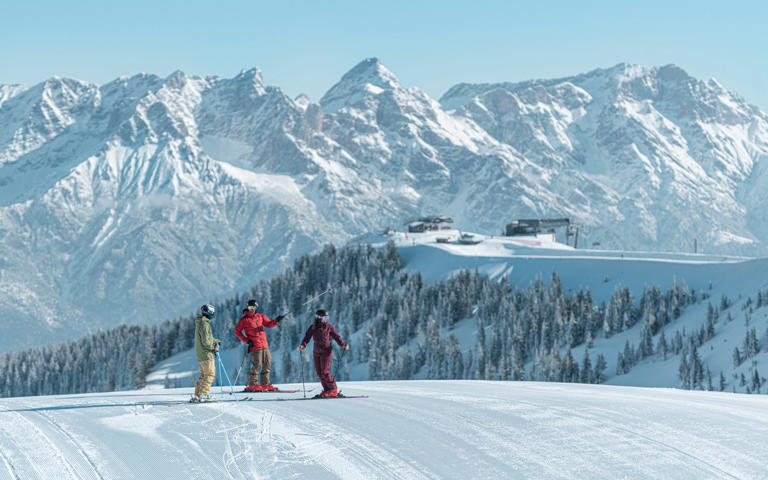

IMAGES
VIDEO
COMMENTS
24. Prepare to pay for public bathrooms. Another important Austria travel tip is to bring coins with you wherever you go. That's because public bathrooms usually charge a small fee of 50 cents or a euro, so make sure you have some coins with you in case of an emergency. 25.
Travelling through Austria by train is reliable, comfortable, and convenient. Relax, sit back, and enjoy your vacation, the Austrian Railways takes you to Austria's most beautiful places. Travel to Austria and experience nature, mountains and lakes, and cultural treasures. Everything you need to know from Austria's official travel portal.
Austria Travel Guide: Money-Saving Tips. Expenses in Austria can add up quickly with all its pricey accommodations, high-end restaurants, and costly outdoor activities and tours. However, there's plenty of free activities and delicious cheap eats to help keep your costs down. Here are some tips on how to save you money when you visit:
Plugs: In Austria, the plugs are type F, the standard voltage is 230 V, and the standard frequency is 50 Hz. I recommend buying a universal adapter (make sure it has surge protection) and using a converter for hairdryers and hot tools. Safety: Austria is an extremely safe country, with the most dangerous crimes being pickpocketing and petty theft.
Sustainable Travel. Sleeping pods and cocktail bars: Europe's night trains aim to lure more solo travelers. Nov 1, 2023 • 4 min read. Europe's night train operators are aiming to make rail travel so much more enjoyable for passengers than simply getting from A to B.
Austria Travel Tips - Colorful Houses in Innsbruck #10 One of the things everyone remembers when talking about Austria is the Habsburgs, the former Austrian royal family. For hundreds of years, the Habsburgs were one of the most influential families in all of Europe, making Austria and, subsequently, the Austro-Hungarian Empire one of the ...
Small, landlocked Austria offers alpine scenery, world-class museums, cobbled quaintness, and Wiener schnitzel. Unlike Germany, its industrious neighbor to the northwest, Austria is content to bask in its good living and elegant, opulent past as the former head of one of Europe's grandest empires. Austrians tend to be relaxed, gregarious people who love the outdoors as much as a good cup of ...
Austria Travel Planning Guide. Austria is a very interesting tourist destination in Central Europe. A mountainous, landlocked country, only a third of its territory is lower than 500 meters above sea level. Austria is in the center of some prime tourist territory; it is bordered by Germany and the Czech Republic in the north, Hungary and ...
Austria is a small landlocked country right in the heart of Europe bordered by Czech Republic, Germany, Hungary, Italy, Liechtenstein, Slovakia, Slovenia and Switzerland. The landscape is mountainous with the Alps running right through the country and peaks rising up to over 3,500 metres. Almost half of Austria is forested while the other half ...
Rough Guides® is a trademark owned by Apa Group with its headquarters at 7 Bell Yard London WC2A 2JR, United Kingdom. Plan your visit to Austria: find out where to go and what to do in Austria with Rough Guides. Read about itineraries, activities, places to stay and travel essentials and get inspiration from the blog in the best guide to Austria.
Q: What are some travel tips for Austria? When in Austria, try to learn a few basic phrases in German, as it's the country's official language and locals appreciate the effort. Also, use public transportation, particularly the efficient train system, to get around major cities and even between towns.
The ultimate Austria travel guide: the best things to do and see. Sep 13, 2023 by The Go Ahead Tours Team. The best trips to Austria are multi-sensory adventures that include transporting music, intriguing history, delicious cakes, and postcard-worthy nature. This small Central European country may not have the same travel reputation as its ...
Local travel tips for Austria Austria has nine provinces: Vienna, Burgenland, Lower Austria, Upper Austria, Salzburg, Styria, Carinthia, Salzburg, Tyrol, and Vorarlberg. While German is the official language, there are regional dialects that German speakers from outside may have trouble understanding.
Austria Travel Map. In the map below, we've marked must-visit cities, towns, river valleys, hiking destinations, mountain huts, and hotels in Austria. For a curated list of top places to visit, read Best Places to Visit in Austria. If you're traveling to Austria in summer, read Summer in Austria and if you're traveling to Austria in ...
A Travel Guide to Austria with ️ Travel Itineraries, ️ Top places to visit in 2024, ️ Beautiful hikes, and more! Discover our Austria travel guides. Austria. Travel Guide. Alpine villages, crystal-clear lakes, mountain hikes, and delicious cuisine await you in this charming European destination.
Get information on Austria Travel Guide - Expert Picks for your Vacation hotels, restaurants, entertainment, shopping, sightseeing, and activities. Read the Fodor's reviews, or post your own.
Planning to visit Austria for the first time? In this video, I'm sharing all my best Austria travel tips for new visitors, from important must-knows for your...
Travel Tips for Visiting Austria. Kyle Kroeger / ViaTravelers. Austria is a beautiful country in the middle of Europe, with many different things to do and see. So, if you plan a trip to Austria, here are some travel tips. First of all, the most important thing is to get a travel card.
Take a ' Sound of Music ' tour in Salzburg. Go see a musical opera for 4 euros at the Vienna State Opera house. Visit the quaint village of Hallstatt. Go skiing in the Austrian Alps. Spend a relaxing day in one of the many magical resort ski towns around Salzburg. Find more details of things to do in Austria here .
Sandwiches and salads cost between 7-9 EUR. A beer at the bar costs around 4.25 EUR while a latte/cappuccino costs 3.80 EUR. Bottled water is 2 EUR. If you are planning to cook your own food, a week's worth of groceries costs around 30-50 EUR for basic staples like rice, pasta, vegetables, and some meat.
Address: Mariahilf, city center 1060 Vienna, Austria. Phone: +43 1 400005430. Website. Vienna's largest and best known food market is located on the Vienna River, with more than 120 market stands ...
Here are some cultural things to do in Vienna you can book in advance to be prepared for your trip: Schönbrunn Palace Gardens skip-the-line tickets →. Vivaldi's Four Seasons Concert at Karlskirche →. Mozart Concert at the Golden Hall →. Spanish Riding School performance of the Lipizzaner horses →.
For culture and food, visit the bustling city of Innsbruck or head to Paznaun-Ischgl. Here, discover the right Austrian Alpine region for you. The Mariahilf district in Innsbruck set against the ...
The Foersterhaus is a comfortable and good-value annexe of the Alpenhotel Kramerwirt, set above the supermarket, 50m from the main hotel. The property is within a short walk of the gondolas and ...